Archived Blog Posts
Sewer Backups: Expert or DIY Cleanup?
6/7/2022 (Permalink)
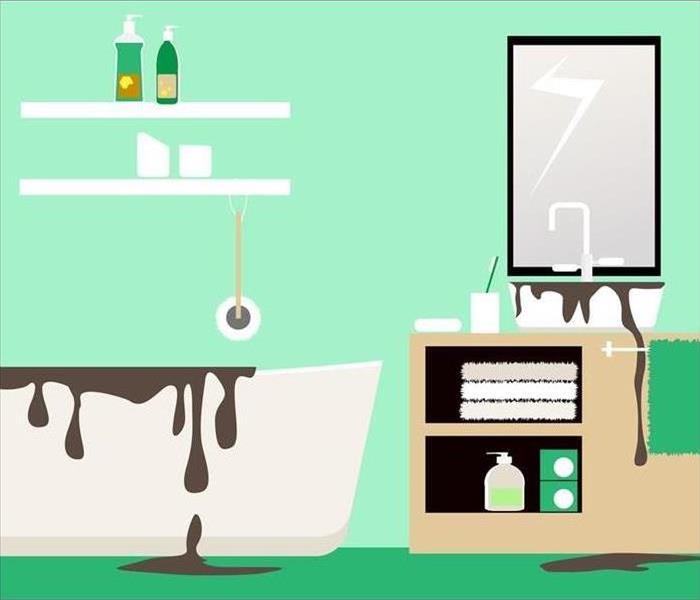 DIY approach can be dangerous. Trust the Specialists and follow our Tips.
DIY approach can be dangerous. Trust the Specialists and follow our Tips.
Sewer backup situations can be dangerous, and it isn't always safe to do cleanup and repairs on your own. For your own safety, you need to know how to recognize and avoid dangerous situations. Use the following information to determine when to hire flooding and water damage experts:
- Always call professionals if the spill has affected multiple rooms in the home, if the backup took place more than a day ago, and if any family members have concerns.
- Sewage often contains contaminants, so you must wear personal protective equipment during cleanup for your own safety.
- All water damage could lead to mold growth. Consider scheduling a mold inspection as soon after flooding as possible.
Steps You Should Take Either Way
Whether you plan to DIY the cleanup of your sewer backup or call professionals to do the job, there are several steps you should take as soon as possible:
- Evacuate any children, animals, and family members who could be vulnerable.
- Contact utility companies to turn off the water, gas, and electricity to your home.
- Provide adequate ventilation by opening doors and windows.
- Remove any items that weren't exposed to water or sewage.
- Add chlorine bleach to standing water to limit the spread of bacteria.
- Contact your insurance company. Take pictures of the water and any damaged property before cleanup professionals arrive.
The work you do at this point can prevent further damage from occurring and may help speed up the process of working through the insurance claim.
Research Causes and Best Cleanup Practices
Clogs are some of the most common causes of the bathtub backup. Hair, small toys, hygiene products, and clumps of soap may initially slow the water as it drains. Eventually, the pressure may cause damage to the pipes, and backups can occur. Roots from trees and shrubs are another common cause of this trouble. Blockages in the sewer main are also a source of backups. When you understand how this type of trouble occurs, you can take steps to prevent damage.
Before you try to DIY the cleanup and repair of a sewer backup in Ogden, UT, make sure you understand the safety risks and the appropriate methods for handling contaminated water and sewage. Do your research before you get started.
What Not To Do When Your Home Floods
6/7/2022 (Permalink)
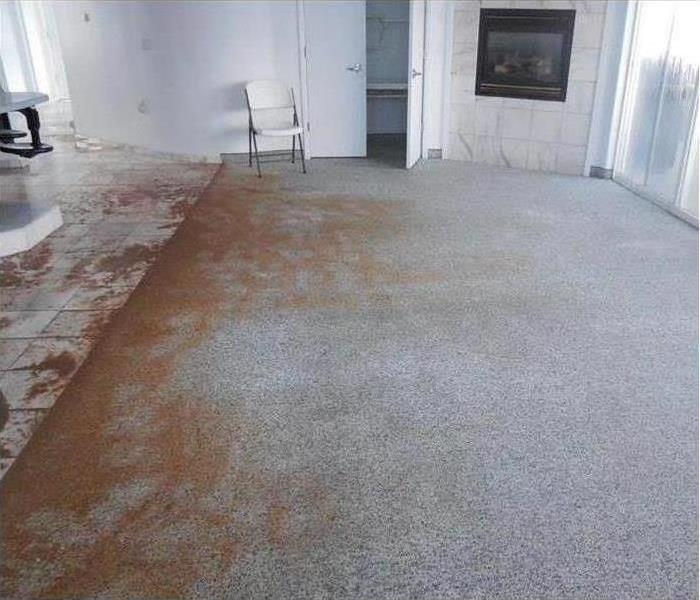 Know more what to do When Your Home Floods.
Know more what to do When Your Home Floods.
Storms often bring torrential rainfall, and with that rainfall comes flooding. When floodwater rises in Ogden, UT, you may get a lot of advice from many sources. Most of those sources will focus on the actions you should take, but it's just as important to know what things to avoid. If your home is flooded during a natural disaster or storm, here are four behaviors to avoid.
Four Behaviors to Avoid
- Staying in Your Home
If your flooded home is uninhabitable, you should get your family to a safe location. Local authorities will keep you posted on mandatory evacuations, but if there is significant damage, don't wait until you have to leave. The earlier you leave your home, the easier it is going to be to navigate roads and find shelter.
- Touching Contaminated Water
You don't know where water seeping into your home from a storm has been, but you can count on it being contaminated. Floodwater is considered Category 3 water and can contain microbes and bacteria. Make sure you wear protective clothing and especially avoid contact with your hands and face.
- Overusing Your Cell Phone
Until you find a place where you can plug your cell phone in, the charge on its battery is going to have to last. Many people will succumb to boredom and use their phones to play games or surf social media. It is smarter, however, to conserve the charge and only use your phone for emergencies.
- Trying To Clean Mold
If there is widespread water damage in your area, remediation experts may not get to your home before mold starts to grow. While you can attempt to dry out your home to minimize the risk of a problem developing, fight the temptation to clean any mold that does form. Doing so without the proper training and equipment can actually make the problem worse.
Storms may leave your home full of floodwater. By following the right steps and avoiding the wrong ones, you can increase your chances of staying safe.
Is It Time to Clean Your Dryer Vent?
6/7/2022 (Permalink)
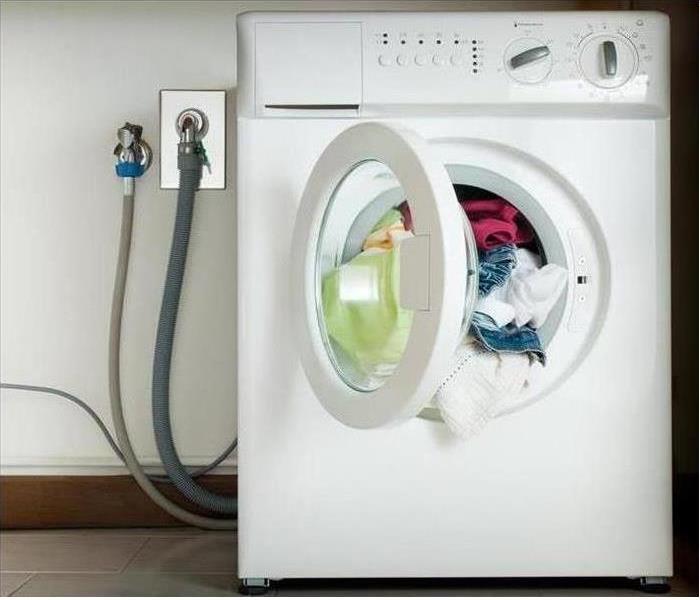 Have you checked your clothes dryer lately?
Have you checked your clothes dryer lately?
Like most homeowners in Ogden,UT, you've probably taken precautions to prevent fires from happening in your home. But have you checked your clothes dryer lately? Each year, a significant number of homes are damaged by a lint fire. This type of dryer fire can occur when your vent isn't kept clean. So, how do you know if your vent needs maintenance?
4 Ways to Know if Your Vent Needs Maintenance.
- It's Been a While Since Your Last Inspection
It's important to have your dryer vent duct inspected at least once a year by a professional vent cleaning specialist. While it's possible to do the cleaning yourself, hiring professionals ensures the job is done properly, as they are familiar with all kinds of dryers and have the appropriate tools to efficiently clean the vent.
- You Smell Something Burning
A burning smell is a sure sign that something's wrong. Lint can clog up the trap, drum casing and exhaust tube, and easily cause a lint fire. If you smell something burning, turn off the dryer and have a professional inspect it immediately.
- It Takes a Long Time for Clothes to Dry
A vent that's blocked up will keep your clothes from drying properly. The time it takes might be twice or even three times as long. You may put clothes in for a normal drying cycle and find that they're still damp when you take them out. The clothes aren't able to dry because a blocked vent will not be able to release the moist air from inside.
- The Dryer and Your Clothes Are Really Hot
If the outside of the dryer is hot to the touch and your clothes are extremely warm when you take them out, this is a sign that the vent is blocked and the air from inside the dryer is not being blown out properly.
As a homeowner, you have enough keep you busy without having to worry about a lint fire. Happily, if you look out for the signs above and take the appropriate steps, you won't ever have to!
Prevent Damage From Ice Dams
5/24/2022 (Permalink)
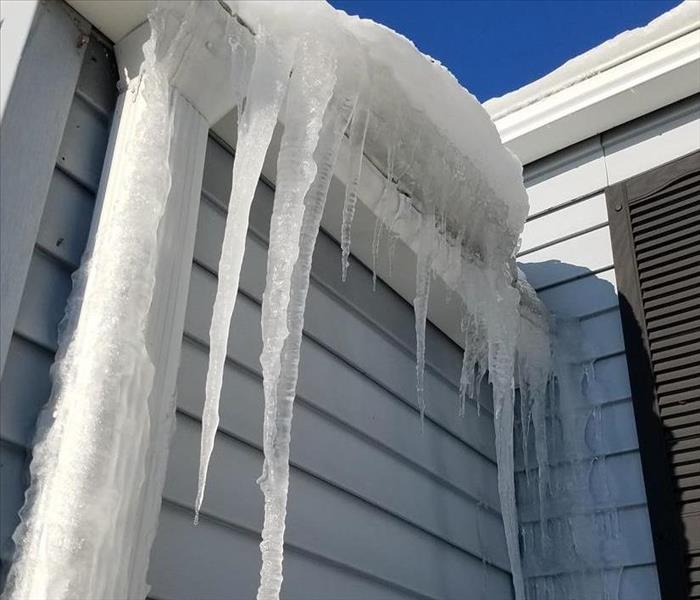 Follow our Tips and Prevent Damage From Ice Dams in your Property.
Follow our Tips and Prevent Damage From Ice Dams in your Property.
When temperatures drop below freezing, your home may be vulnerable to ice dam formations. These chunks of ice form at the edge of your roof and sometimes in the rain gutter, preventing the water from melting snow from draining away from your home. The blocked water then has the potential for causing a lot of property damage:
- Wet insulation
- Stains on ceilings and walls
- Mold growth
- Paint damage on the exterior of the home
- Structural damage Inefficient heating and cooling
This damage may travel up your roof as heat from your home continues to melt the snow closest to the surface. The newly warmed water collects near the ice block and adds to the bulk of the dam. The key to preventing this type of damage is preparing your Ogden, UT, home before the first winter storm hits.
Several Ways to Prevent an Ice Dam
One of the most effective methods of ice dam prevention is making sure your roof remains cold. Remember that it's the heat from your home escaping through the roof that causes the lowest part of the snow to melt. Reduce heat loss by filling gaps around light fixtures, filling in holes in the walls and ceilings, wrapping plumbing pipes, and repairing damage to chimneys, vents in the roof, and any leaks in the ceiling and roof.
In addition to preventing dams, you'll also save money on your monthly heating and cooling bills by reducing your energy usage.
Increase the efficiency of those tasks by upgrading the insulation in your attic. You should have between 12 and 14 inches of insulation, but some older homes have eight inches or less. While your focus is on the attic, consider adding ventilation to draw in cool air from outside and expel warm air. Reach out to roofing professionals or technicians with plenty of property damage cleanup and restoration experience.
Invest in an Underlayment or Heat Cable
Many areas of the country require an ice-and-water barrier as an underlayment. If your roof needs to be replaced or upgraded, adding this underlayment is an excellent investment against damage from water and other hazards. You could also install heat cables around the roof to melt snow where dams are likely to form. Make sure that gutters are free of debris, so there is a clear path for water to drain.
Clear Snow From the Roof
If you have a flat roof and a heavy load of snow, remove some of that weight from your roof. Heavy snow presents many risks in addition to an ice dam. It is dangerous to climb onto your roof and the danger increases as the shingles become slick with water, snow, and ice, so check your local home improvement store for an aluminum snow rake with an extendable pole. Start along the edges of the roof and focus on the overhangs. You don't need to clear the entire roof; dams are most likely to form on the edges and overhangs.
Don't panic if you find an ice dam on the roof of your home in Ogden, UT, you can hire professionals to safely remove the dam. Your quick response is the second-best way to prevent serious property damage. For the very best results, use these preventative steps.
Electronic Restoration Claims Make the Process Easier
5/23/2022 (Permalink)
 For more information about Electronic Restoration Claims, just contact us.
For more information about Electronic Restoration Claims, just contact us.
Whether from flooding, developing mold or a brutal storm, if something happens to your Ogden, UT, business, you want to maximize your insurance claim. Unfortunately, that process may seem complicated and overwhelming when it requires commercial restorative services. Luckily, a service provider with an electronic claims management system that has a team of insurance industry experts is just a phone call away.
The Claims Process
Prior to contacting your insurance agent, it is helpful to understand how the claim process typically unfolds. After the call is made, you can expect the following steps to happen:
- An adjuster from your insurance provider will contact you to schedule a time for an inspection. This will be a detailed assessment of the damage caused by the specific event.
- The adjuster will recommend contacting a restoration company, which will send out a skilled assessor to also inspect the property. Along with assessing the damage, the representative will develop a detailed plan regarding the scope of the work needed.
- The insurance representative will confirm the scope of work required. If choosing the right restoration professional, you will have peace of mind that the two are following the same guideline. This makes it easier to come to a final agreement regarding the insurance claim.
During this initial process, it is also important to discuss other details related to the loss. If your business needs to temporarily locate or will see a loss in income, this may be covered depending on your unique insurance plan.
Why Choose SERVPRO?
While these steps seem easy, they may be more complicated if are working with a restoration firm that lacks insurance industry expertise or embraces technologies. A nationwide company with localized locations eases the process. From the beginning, the project manager will work closely with the adjuster to create an electronic, detailed, line-by-line list of all work that needs to be done. This ensures that everyone is on the same page and clearly understands the project. Throughout the process, this electronic claim is updated as the work progress and easily accessed by all interested parties. Other benefits include:
- A single point of contact who works with you and your insurance provider, eliminating confusion and ensuring clear, regular communication across the board.
- Since time is always of the essence, you can expect your restoration team to focus on restoring and not replacing, which is beneficial for both the property owner and the insurance company. The work will also be completed with the budget and timeline always in mind.
- As a one-stop shop, it means that coordinating additional contractors won’t be needed. All of the work will be a team of certified technicians, further increasing the pace of the work.
Insurance provides peace of mind that your business will be covered when the unexpected happens. While that may make things easier, the insurance claim can be complicated if you choose the wrong company to complete restorative services. Ensuring that the company is certified, has an electronic claims system and has a point person for the project are all indicators that the work will be done faster and on budget.
The Basics of Fire Extinguisher Use and Maintenance
5/12/2022 (Permalink)
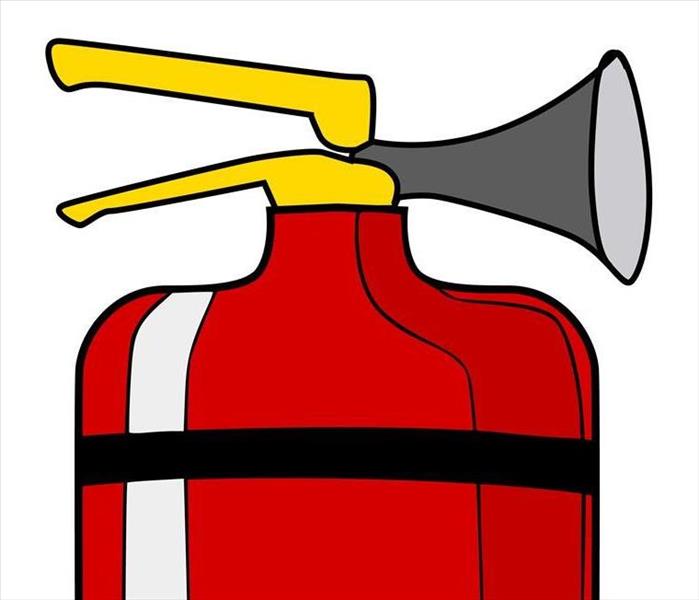 Knowing The Basics of a Fire Extinguisher can save Lives in your Company.
Knowing The Basics of a Fire Extinguisher can save Lives in your Company.
A fire extinguisher on your commercial property in Ogden, UT, is a powerful tool to stop a fire before it gets out of control. This simple, relatively inexpensive device could prevent injuries and deaths, thousands of dollars in property damage and the possibility of a long and costly business interruption.
The device, however, is not of much use if it doesn't work when needed or if employees do not know how to properly use it. A solid understanding of fire extinguishers can be obtained with some basic knowledge.
The Different Types of Extinguishers
The National Fire Protection Association lists at least five different types of portable extinguishers based on the extinguishing agent inside the canister. Each device works better on certain types of fires. Anyone in your facility who might use an extinguishing device should understand the following information:
- Class A devices work better on fires fed by cloth, wood, paper and rubber
- Class B devices work on fires fed by combustible liquids such as oils and solvents
- Class C devices work on fires caused by energized electrical equipment
- Class D devices are used for fires fed by combustible metals
- Class K devices are used for fires caused by combustible oils and fats
Each device will have information on it indicating its class. Extinguishing agents vary from water to carbon dioxide to foams to dry chemicals. Each device has its pros and cons for use, storage, maintenance and cost.
The Process of Using a Fire Extinguisher
The start of a fire is a poor time for individuals to learn how to use an extinguisher. Your company should train employees ahead of time, as this will facilitate speed and safety. Almost all devices use the PASS method, which consists of four critical steps:
- Pull the pin out of the unit to activate it
- Aim the discharge nozzle at the base of the fire
- Squeeze the handle to discharge the extinguishing agent
- Sweep the nozzle along the base of the fire
When used properly, an extinguisher can be very effective at limiting fire damage. Afterward, your company will likely need the services of a professional fire restoration team from your area. Trained and certified technicians will come to your building and follow the proven principles of a fire cleanup. This will enable your business to move on quickly after a fire.
The Importance of Maintenance
Whether your company is concerned about a kitchen fire or an industrial fire, the extinguishers you have on-site should be maintained according to all applicable codes and standards. This involves such things as clearly identifying areas where extinguishers or located and doing the necessary checks to make sure the devices are not out of date. A good inspection includes looking at the date of manufacture, checking the date of the last hydro test, inspecting for signs of damage or corrosion and looking for cracks in the hose.
Your company will be better off with at least one fire extinguisher on the premises. You should also make sure several employees know how to use the device, and that the unit will be in good shape when it is needed.
5 Common Causes of Basement Floods
4/21/2022 (Permalink)
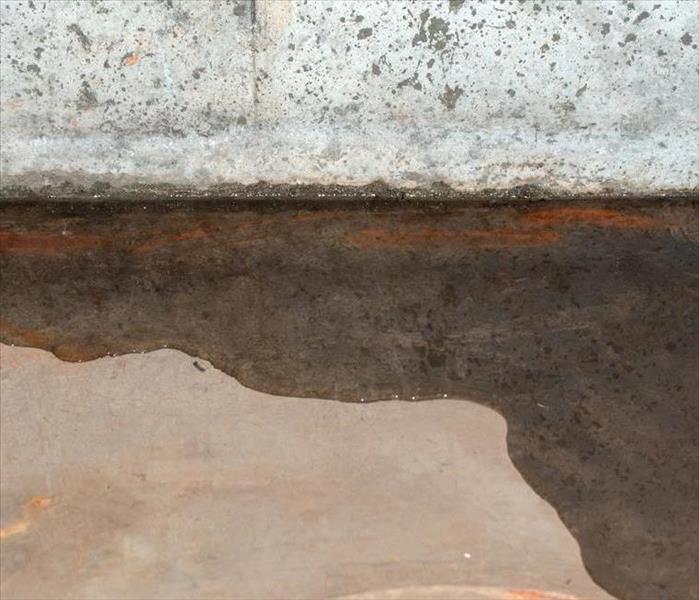 Know more about Basement Floods and Avoid Further Water Damage.
Know more about Basement Floods and Avoid Further Water Damage.
You may see a basement flood in your home and think it is no big deal. Over time, however, that standing water can cause major damage to your Ogden, UT, house. Mold and mildew could grow near the liquid, as well.
A flooded basement thus needs to be addressed as soon as possible. Your local SERVPRO franchise professionals can help with the restoration process. They are Faster to Any Size Disaster and will know how to salvage any damaged items.
Once the remediation is complete, you should take steps to prevent another flood from occurring. That means finding out exactly what caused the flood. Here are five common sources of basement floods and how to prevent them.
5 Common Causes of Flooded Basements
1. Poor Drainage Installation
When identifying the cause of your basement flood, check the location of the downspouts in your drainage system. They may drain toward your home or be placed within six feet of the basement. In either scenario, water from the downspouts could flow past the weeping tile and into the basement.
Have a plumber move the downspout so it empties into your backyard or street instead.
2. Improper Sealing
If your basement often floods during heavy rainstorms, the floors and walls of the room may not have been sealed properly. The seals need to be strong enough to withstand severe weather. A construction expert can help you strengthen the sealing if necessary.
3. Eavestrough Debris
When debris and leaves clog the eavestroughs, water could overflow from them and leak into the basement. Luckily, this problem is fairly simple to fix. Simply grab a ladder and clean the eavestroughs, or hire a professional to do it for you.
Sometimes, even unclogged eavestroughs overflow because they cannot handle the volume of rain that your area experiences. In this case, you need to replace your eavestroughs with bigger ones.
4. Clogged Manifold
Sometimes, basement floods occur for reasons beyond your control. For instance, your property could overflow with water if there is a clog in the manifold that links your house to the sewer system. Besides harming your basement, this could also damage the foundation of the home.
If you suspect that this issue is causing floods on your property, contact local authorities so they can address the problem.
5. Unsuitable Home Location
A home should be built on top of a sloped area so water can drain away from the property. If your house is experiencing numerous floods, it may be located at the bottom of the terrain. You do not necessary have to move, however. That is because the slope of a land typically becomes more level over time due to erosion.
While not every basement flood is preventable, you can take steps to reduce the chances of one of these disasters occurring. First, you need to understand what led to the flood in the first place. In some cases, you can lower your flood risk by making alternations to your home. Other times, you may need to implement more drastic changes. If you make adjustments and water damage still occurs, SERVPRO professionals can help with the cleanup.
How To Estimate Fire Damage
4/13/2022 (Permalink)
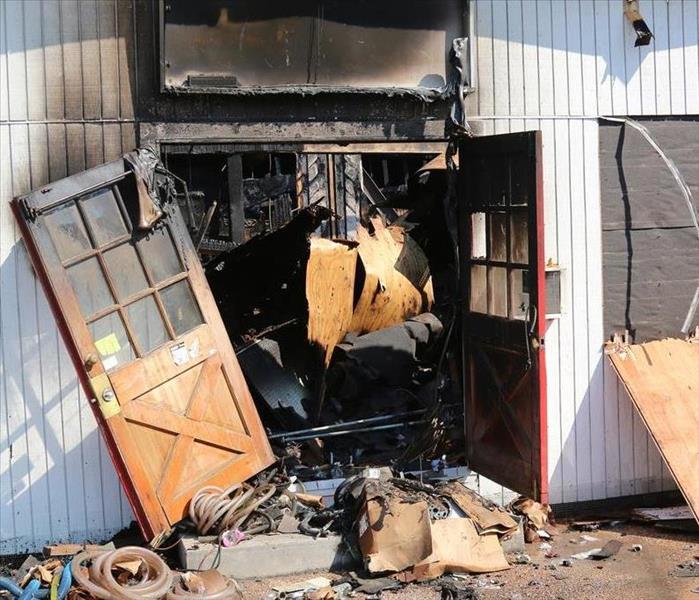 Make a good Fire Damage Estimate by Following These Steps.
Make a good Fire Damage Estimate by Following These Steps.
When a fire breaks out in your commercial building in Ogden, UT one of your first calls will be to your insurance provider. You will also want to contact certified fire restoration experts so that you can get an estimate for the cost of cleanup.
The more thorough and accurate an assessment they can make, the easier it is for your insurance company to process. Here are some items you can expect to find on the list.
Security Measures
The first step after the assessment is making sure your property is secure. Fire may bust windows and leave gaping holes in the roof as well as the exterior walls of your building. Technicians use board-up services to prevent several potential problems:
- Trespassing
- Vandalism
- Theft
- Animal Intrusion
Another security measure that some restoration teams offer is 24-hour security. This may be necessary if the board-up process is delayed by weather or another factor to ensure that your building is safe overnight.
Moving Services
Before the work on your building can begin, the technicians must remove all the items left inside. Office furniture, electronic equipment, furniture, textiles and documents must be relocated to assess whether they are salvageable. You want to make sure that the transfer process is included in the estimate so that you don't end up paying it out of pocket after your claim is filed.
Extraction and Removal
After a fire, there are two main problems that the cleanup team has to tackle. First, they must extract the standing water that is left over from the process of dousing the flames. They tear out all the saturated materials, such as drywall, flooring and ceiling tiles. Prompt removal of these items helps prevent secondary damage such as mold growth.
Then, of course, the parts of the structure that have fire damage must be removed. Burned joists and charred beams need to be taken out carefully so that the team can assess where temporary reinforcements need to be placed. This helps them save as much of the building as possible.
Soot and Smoke Cleanup
Another vital aspect of the commercial fire restoration process is getting rid of smoke, soot and the odor they leave behind. Mitigation experts use special chemicals and equipment to make sure they get into every crack and crevice to remove the grime left behind by the fire. This process is typically applied to even the parts of the building that weren't burned because smoke can easily travel beyond the affected area and leave damage in its wake.
Restoration Estimate
After all surfaces are cleaned and dried, the reconstruction of your building can begin. Hiring a team that handles both remediation and restoration means that all the itemized costs can be contained in one report. This makes the claims process more efficient for both you and the insurance company.
Before you file a claim with your provider after a fire, make sure you have a comprehensive estimate of every task it will take to restore your building to its former glory. Including the whole process helps you get the money you need to get back to business more quickly.
How Does Water Affect Building Materials?
4/9/2022 (Permalink)
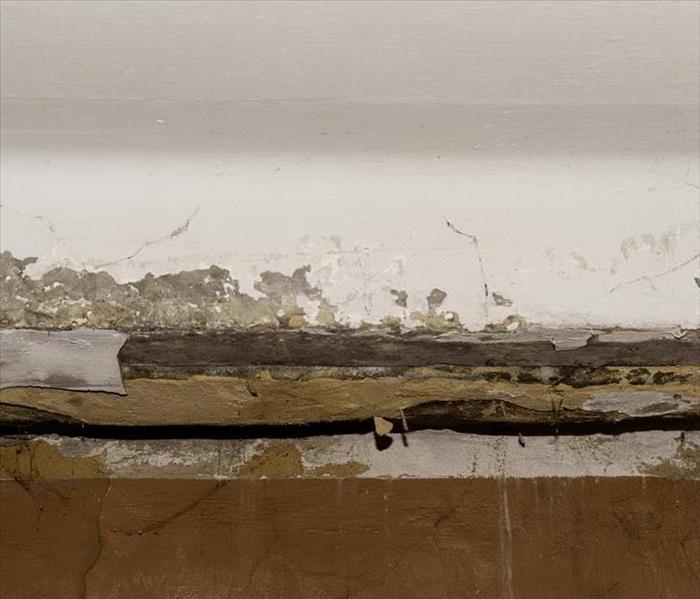 Prevent Water Damage by Following these Tips.
Prevent Water Damage by Following these Tips.
Discovering water damage in your Ogden, UT, home can be overwhelming. Sometimes it can even be more stressful than the disaster that initially led to the loss. Excess moisture can cause various types of deterioration; the structural makeup of the affected material is a huge factor in determining the extent of the damage. Some materials are much more absorbent than others.
Unfortunately, many materials used to build homes are quite porous. These materials include wood, drywall and insulation. Considerable damage can result from the intrusion of excess water from a flood, burst pipe, leaking roof or another catastrophe. What if this happens in your home?
6 Steps for Dealing With Water-Damaged Materials
Unfortunately, every second counts when it comes to water's effect on many materials. This means that it will probably be impossible to prevent some loss. Therefore, the focus will be on mitigating the deterioration. There are some basic steps to take to lessen the risk of significant damage after a water disaster.
1. Shut Off the Electricity
First, remember to shut off the electricity to the affected area. Even very shallow standing water can carry an electric current that can harm you on contact.
2. Extract Standing Water
It's essential to extract all excess water as quickly as possible. Typically, the best way to do this is to use a wet/dry vacuum. Unlike a regular vacuum or mop, a wet/dry vacuum also lets you safely and efficiently remove wet debris.
3. Remove Flooring Materials
Your flooring will probably not be salvageable if you've had standing water. Water-soaked wood floors can swell and buckle if they are left to sit. Carpeting and padding typically won't be salvageable if saturated because they are usually impossible to dry completely quickly enough to prevent damage. You will also need to inspect the subfloor, dry it, or replace it before reinstalling flooring.
4. Tear Out Wet Drywall and Insulation
Soaked drywall and insulation should be torn out and replaced. Drywall is very porous and can soak up water like a sponge. It can be extremely tough to dry entirely in time to prevent permanent water damage and mold growth. Wood cabinets can also swell with water and must be replaced.
5. Begin Drying the Affected Area and Contents
First, you will need to remove anything that isn't salvageable to eliminate as much excess moisture as possible. Mold can begin growing within 24 hours, so it's essential to use multiple drying techniques. There are several ways to dry the area and contents: fans, heaters, dehumidifiers. You can also open doors and windows to allow fresh air to flow through, as long as the humidity outdoors is lower than indoors.
6. Call the Professionals
You will need to hire flood damage restoration professionals to thoroughly inspect the area and clean and sanitize it. After the plumbing repair, the remediation experts will ensure that everything is completely dry and free of mold growth. Ultimately, they will return the site to its pre-flood condition and perform a final inspection.
Floodwaters from a disaster, such as a supply line leak, can begin showing water damage immediately. Knowing the steps to take after a flood is vital to your family's safety and your home's security.
IICRC Certification: What It Means to You
4/8/2022 (Permalink)
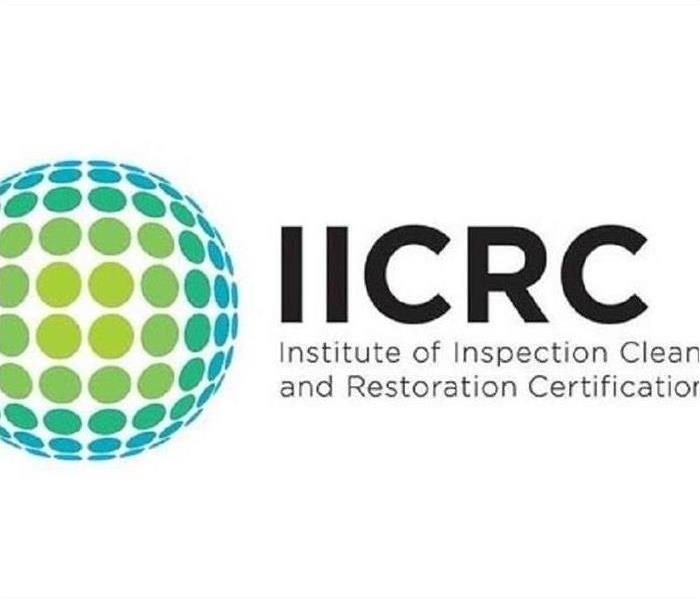 IICRC certified cleanup and restoration companies will the best option when suffering property damages in Ogden, UT.
IICRC certified cleanup and restoration companies will the best option when suffering property damages in Ogden, UT.
Property damages are nearly always frustrating to Ogden, UT, homeowners because the damages affect both home and work life. In a rush to get things corrected, sometimes homeowners rush into contracts with unreputable cleanup and repair businesses. Fortunately, the Institute of Inspection, Cleaning, and Restoration Certification (generally referred to as the IICRC,) provides training and certification to professionals, so homeowners can recognize trustworthy restoration companies.
What Does the Institute Offer?
When you find a cleanup and mitigation company with IICRC certification, you can be sure of a few important facts:
- The restoration company and its individual employees have completed classes, trainings, and standardized exams.
- Technicians and related professionals continue to complete coursework to maintain certificates.
- Companies abide by standards established by the Institute.
The contractor trainings and exams are offered consistently throughout the year, so professionals can update their credentials. Continuing education opportunities are an important aspect of providing modern services to keep homeowners, their families, and their property in safe conditions.
What Types of Classes Are Available?
Some of the classes offered by the certification institute include a mitigation certificate and water damage restoration training that includes education concerning basic containment, mold mitigation procedures, and techniques for drying a variety of structures. A mold certification course may cover the basics of identification or how to test for and abate mold growth.
Why Hire Institute Certified Professionals?
You may have a Ogden, UT, neighbor or two who are pretty familiar with construction techniques and general home upkeep. When you really need to know that the work to your home is done correctly, however, it's best to find a cleanup and reconstruction company that is IICRC certified.
You'll experience a lot of peace of mind knowing that there aren't hidden pockets of mold growth or structural elements of your home that have been compromised.
Working with trained professionals who hold a mitigation certificate gives you confidence that you've done everything you can to keep your family safe and healthy.
Ensure Mold Doesn’t Spread With Professional Mold Remediation
3/21/2022 (Permalink)
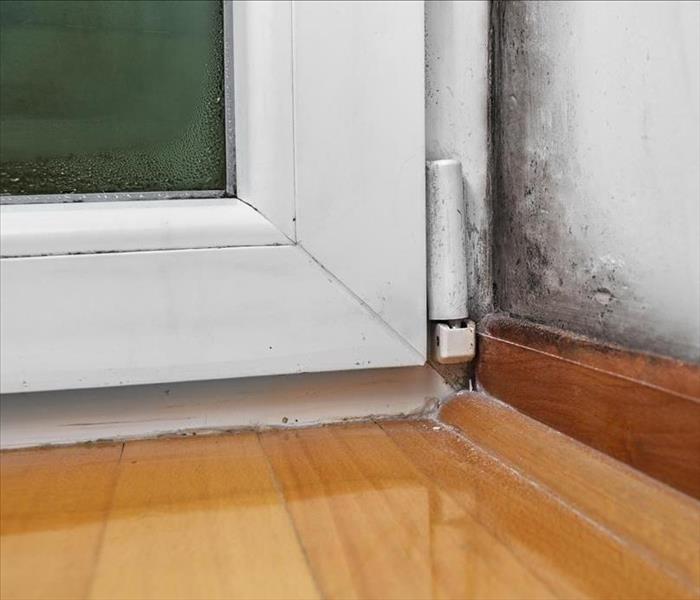 Prevent Mold Spread and Avoid Mold Damage by Following These Tips.
Prevent Mold Spread and Avoid Mold Damage by Following These Tips.
If you come across black mold in your Ogden, UT home, it’s one problem that needs to be addressed immediately. While the first thought might be to grab some bleach and start scrubbing, this makes the problem worse and often leads to a reoccurring problem. It’s ideal to consult with a professional mold damage restoration company before tackling a mold problem to ensure it is taken care of properly.
A Pesky, Lurking Fungus
Mold spores are everywhere, indoors and outdoors. Luckily, they require the right conditions to come out of their dormant stage and begin to spread. Unfortunately, a home is an ideal place to find that perfect environment. These spores, which are not visible to the naked eye, need the right temperature, moisture and food, which is any organic material.
Once spores have that perfect environment, they quickly begin a never-ending cycle. That means new spores are forming and becoming airborne to find another location in the home to start the process again. Unfortunately, this may be happening without any physical signs. Below are common reasons for mold to grow:
- Consistently high humidity
- Leaky pipes
- Damaged roof
- Condensation buildup
- Improper ventilation
- Damp or wet clothing
- Damp basements or foundation
- Flooding
The Benefits of Mold Remediation
Once a home has black mold, proper mold cleanup is vital to ensure the problem doesn’t persist. If that happens, it creates poor indoor air quality and may turn into a more expensive problem.
A hidden issue, such as behind walls or underneath the flooring, will eventually start to affect the home’s structure. Ensuring that doesn’t happen requires expertise, innovative methods and industrial equipment. A mold professional has everything needed to get your home free of mold. The remediation process typically involves the below steps.
Mold Inspection:
An inspector will perform a visual inspection, as well as take surface samples for testing and conduct air quality tests. Once the extent of the issue is determined, a remediation plan will be created.
Ventilation and Containment:
The affected area will be properly sealed off to ensure that the spores don’t spread. Air scrubbers and other air filtration devices will also be used to capture the spores, further helping to keep them only in the infected area.
Remediation:
This step involves the laborious work of cleaning and disinfecting. A professional will have a multitude of tools and industrial-grade cleaners to properly eradicate the problem. Once this task is finished, a solution will be applied to deter future mold growth.
Repair Source and Damage:
Whether the issue is a hole in the roof or an improperly sealed basement, the source of the problem will be fixed. Any other damage caused by the mold will also be repaired or replaced. In many cases, this will require tearing out carpet and drywall.
Once black mold is discovered, it's not a simple case of wiping it away and moving on. This pesky fungus continues to grow and spread to other areas of the home where the conditions are ideal. To avoid a small problem turning into a big one, it's best to trust the cleanup to a professional.
5 Important Smoke Alarm Questions
3/14/2022 (Permalink)
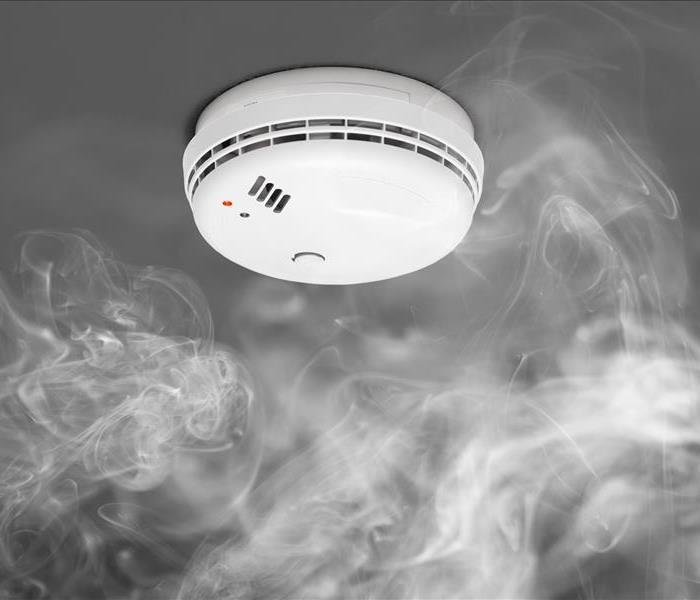 Learn How to Use your Smoke Alarms by following these Tips.
Learn How to Use your Smoke Alarms by following these Tips.
While you may not spend much time thinking about it, a smoke alarm or detector is an important part of your Ogden, UT, home. This small device can help keep you and your family safe and can alert you to a fire before it causes devastating damage. The following questions can help you get the most from your alarms.
Important Smoke Alarm Questions to Consider
1. What Kind of Smoke Alarm Should You Have?
Not all devices operate in the same way. When buying a new smoke detector, you will usually have two options. Photoelectric and ionization alarms are better at detecting smoldering and flaming fires respectively. Because of this, it is a good idea to have both types in your home.
You may also be able to find devices that use a combination of both technologies to ensure it has the best chance of alerting you to a fire.
2. How Many Alarms Do You Need?
A fire could start in any area of your house. There are many potential causes, including backed-up dryer lint, an unattended candle or a kitchen accident. Having alarms in several places makes it more likely that you will be alerted to a fire quickly, reducing the amount of fire damage restoration needed. There are some basic rules that you can use to determine where to put them.
There should be at least one detector on each floor, including basements and attics, in each bedroom and outside each sleeping area.
3. How Often Do Alarms Need To Be Tested?
While smoke detectors are designed to last a while, it is important to test them regularly to ensure they are still working as intended and that the battery is still functioning. You should do this at least once a month.
4. What Should You Do If the Alarm is Beeping?
It can be easy to think of a beeping alarm as an annoyance, but don’t ignore it. Beeping can indicate that there is a problem with the device that could reduce its effectiveness. A common reason for beeping is that the batteries are low. If this is the case, replacing the batteries should stop the noise.
The alarm may also go off if it needs to be cleaned or if there is an issue with the wires or other internal parts.
5. How Often Should You Change the Batteries?
How often an alarm needs to have its batteries changed depends on what kind it uses. If you have a device that uses a 9-volt battery or AA batteries, these should be changed at least every six months. Backup batteries in hardwired systems that use your home’s electricity should also be replaced twice a year. However, many newer alarms use lithium batteries that don’t need to be changed at all and will last for the life of the device.
Because they play such a big role in keeping your family safe during a fire, each smoke alarm in your house should be well-maintained, and there should be a sufficient number of them in the home. Test them regularly and change the batteries as needed to ensure that these important devices are working properly in case of an emergency.
Why Your Business Needs Flood Insurance
3/9/2022 (Permalink)
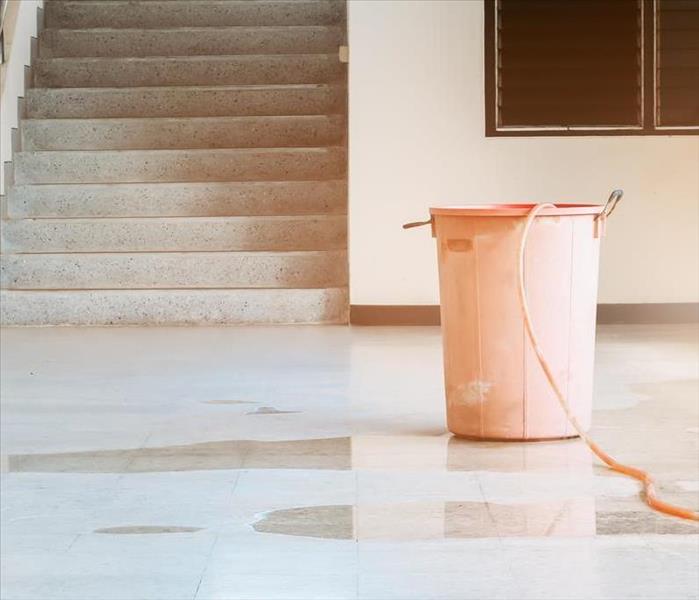 Learn More about Flood Insurance by Following These Tips and Avoid Storm Damage in your Ogden, UT Commerce.
Learn More about Flood Insurance by Following These Tips and Avoid Storm Damage in your Ogden, UT Commerce.
While many business owners may be aware that they need insurance in general, they may not understand exactly why flood insurance is important. The reality is that it can protect your business in ways you might not expect, even if you don't live in a flood zone.
If you are wondering what the benefits of this kind of insurance are, here are some things to consider.
Important Tips to Consider as regards Flood Insurance
1. It Can Help Save You Money
One of the primary benefits of getting flood insurance is that it can help save you money. If your business floods, the repairs can be costly and more extensive than they might seem right off the bat. Even though some may think that they could repair flooding damage on their own, the reality is that it can be complex to manage and that water damage professionals are often much better equipped to deal with it.
Having the right coverage can prevent you from having to cover the costs of repairs on your own. Not only that, but it can also protect you from potentially having to shut down your business altogether because of a loss of revenue. With insurance that covers flooding in Ogden, UT, you can help ensure that you are looking out for your business and protecting it from taking a hit due to unexpected costs.
2. It Can Reduce Closure Time
Another benefit of making sure that you are properly insured and have the kind of commercial insurance that you need is that it can help reduce closure time overall. When you are able to have all damage repaired quickly because you are well-covered, it can translate to less time closed, and less time being out of operation. Not only that, but you will also be better enabled to protect all of your assets and business equipment. This means that your revenue won't have to take a hit and that you won't have to slow down your business due to damage or other losses like you might if you weren't fully covered.
3. It Can Protect You From the Unexpected
Some may think that they don't need this type of insurance because they don't live in an area that is prone to flooding often. However, even if you live in an area that isn't known for flooding, it can still be possible to sustain flooding damage. Unexpected natural disasters can occur in a variety of locations and climates. Not only that, but flooding within your building can also occur due to plumbing issues. A leak or a busted pipe could easily cause flooding within your building. This is a risk that those with older buildings are particularly susceptible to, and need to be aware of.
To ensure that you are taking proper care of your business, you need to prepare for the unexpected. For many, this means making sure that you have flood insurance in addition to other forms of coverage. Taking this extra step for your company can not only help you save money, but it can also help maintain your business's stability, as well.
Don't Let Sewage Backup Ruin Your Day
2/23/2022 (Permalink)
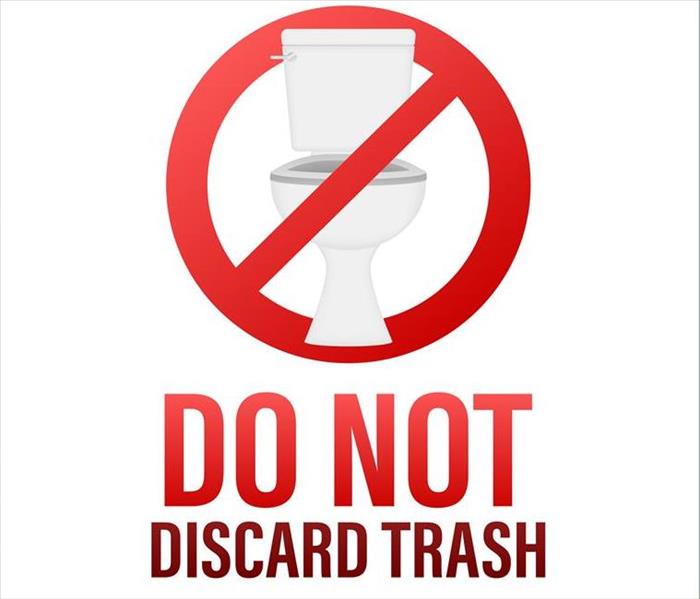 Follow these Tips and Learn more about Sewage Backup and avoid Storm Damage in your Ogden, UT property.
Follow these Tips and Learn more about Sewage Backup and avoid Storm Damage in your Ogden, UT property.
Few water damage emergencies are as unpleasant as sewage backup on your Ogden, UT, property. In addition to the discomfort caused by this type of flooding, exposure to urine, fecal matter, and other sewage causes a lot of damage.
The good news is that there are many things you can do to keep your plumbing system in good condition and prevent damage to your home.
Preventing Sewage Backup
The first step is avoiding sewage from flooding into your home is recognizing the major causes:
Clogs are some of the most common sources of trouble. Whether something has been inappropriately flushed down the toilet or the grease from the kitchen has caused the clog, when there's an obstruction along the sewer line, waste is forced backward rather than forward.
Broken sewer pipes often go unnoticed until sewer cleaning becomes necessary. Pipes may break because the ground freezes and thaws, tree roots grow into the pipes, age makes them weak, or heavy equipment drives over them.
Heavy rains and other external flooding fill the sewer lines up with water faster than they can drain. This running water may also drag sticks, leaves, and other objects down the drain. This heavy load of water forces water from your home to return through the sewer system.
Vandalism is a less common cause of sewer system trouble, but when drainage systems are purposely filled with debris, the results can mean sewage flooding into your home.
The more you know about how and why this trouble occurs, the better you'll be prepared to prevent problems. Once you've gathered a little bit of education, it's time to take action.
Maintenance
The second preventative step involves maintenance and minor repairs. One of the most commonly given pieces of maintenance advice is educating your family about what can be flushed and what should not be flushed, such as diapers, feminine products, and even too much toilet paper. As your family develops good flushing habits, be sure to address seemingly minor issues, such as a running toilet or slow drainage.
Backwater Prevention Valve Installation
These prevention valves allow water to flow away from your home and stop water from getting back into your home. It is possible to install one of these valves on your own, but sewer cleaning and recovery professionals may be willing to ensure that installation is completed without mistakes. The cost of completing this installation may vary based on the difficulty of the installation and the condition of your plumbing.
Professional Inspections
Plumbers and other sewer system professionals have the tools necessary to recognize the warning signs of trouble, such as encroaching roots and structural weaknesses. Remember that catching and preventing trouble is much less expensive than recovery from a sewer backup. Don't wait until you're forced to hire a storm damage and sewer cleanup team in Ogden, UT. Learn how to avoid clogs and other damage, and take steps today to keep your drains, pipes, and connection to the sewer system in great working condition. Recognize when it's time to call in professionals for more significant prevention methods.
How To Prevent a Dryer Fire
2/23/2022 (Permalink)
 Important Tips to To Prevent a Dryer Fire in your Ogden, UT Home.
Important Tips to To Prevent a Dryer Fire in your Ogden, UT Home.
The average family runs their clothes dryer one or more times per week without any issues. However, when lint builds up in the exhaust of your dryer it increases the risk of a lint fire. Removing the lint can help prevent an accident that could damage your home.
Clean Your Dryer Exhaust To Avoid Fire Damage
One of the main risks of a dryer fire is lint buildup in the exhaust. The first thing you should do to reduce your fire risk is to regularly clean the lint out of the lint trap:
1. Remove the Lint Screen
Find the lint screen on your dryer. It may be located on the top, bottom or side or at the bottom of the dryer door. Pull the screen out to check for lint before you use your dryer.
2. Clean the Lint From the Screen
Use your hands to ball up the lint and then rub the lint ball on the screen to pick up the remaining lint. Discard the lint in the trash. Alternatively, you can use a cleaning or vacuum brush to remove the lint.
3. Rinse the Screen
Run the screen under the tap in your sink. Rinse until the screen is clear. You don't need to perform this step every time, but it is a good idea to rinse the screen once every few weeks to remove residues on the surface.
4. Vacuum the Screen Vent
Before you replace the screen, use the attachment on your vacuum to remove any lint in the trap. This helps prevent clogs.
5. Replace the Screen
Insert the screen back into the lint trap. Repeat this process before each load.
Deep Clean the Vents
Occasionally deep cleaning the vents can help prevent a blockage that could start a lint fire. First, unplug your dryer. Next, pull your dryer away from the wall and remove the exhaust hose by loosening the o-ring and then pulling the hose away from the dryer and wall port.
Move to a well-lit area and use a brush or the attachment hose on your vacuum to remove the lint from the hose. Buy a vent cleaning rod from a home improvement store. Follow the directions to insert the brush into the vent. Gently push and rotate the brush until the inside of the vent is clean.
Reattach the exhaust hose to the dryer and the port. Plug your dryer back in and run it to make sure no hot air is escaping from the sides of the vent. If it is, tighten the clamps on the exhaust hose.
Finally, find the vent on the exterior of your home. It probably looks like a square hole that is covered by a plastic or metal screen. Use a brush or small vacuum to remove lint from the vent. When you are done, reattach the screen. Taking these steps should help avoid a fire, but if one does occur, contact a restoration company in Ogden, UT, for assistance.
Regularly cleaning the lint trap and occasionally doing a deep cleaning of the exhaust hose and vent reduces your chance of a lint fire. It also helps keep your dryer working efficiently.
Pipe Burst Cleanup and Supply Line Leaks: Remediation Efforts
2/18/2022 (Permalink)
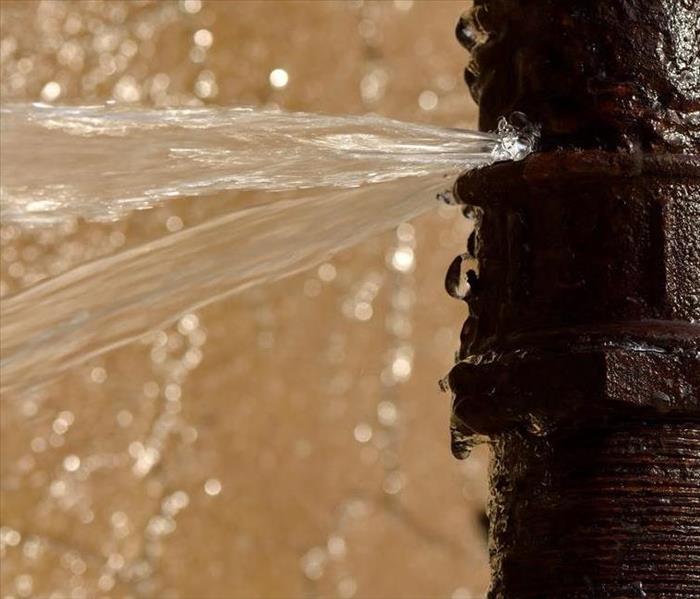 These tips can really help you If you experience a Pipe Burst in your Ogden, UT property.
These tips can really help you If you experience a Pipe Burst in your Ogden, UT property.
Commercial properties may experience more than their fair share of water problems because of the number of people using the facilities on any given day, which is why routine maintenance and inspections are necessary. However, even sticking to appropriate assessment schedules will not prevent every issue, including supply line leaks or pipe burst cleanup. When such disasters occur, it is crucial to contact a remediation specialist in Ogden, UT, to resolve the matter and minimize business interruptions. The specialist will focus on several key areas, including:
- Water removal
- Damage repair
- Property restoration
Pipe Burst Cleanup and Supply Line Remediation
When management notices a supply line leaking or suspects a pipe break, the main concern is cost and business interruption. A remediation service can ensure that the process is handled quickly and efficiently, and it will work with your commercial insurance to keep costs down. Every mitigation company is different, but all will typically follow the same five-step process for water cleanup.
1. Shut Off Water Supply
Before any work can be done, a remediation service will need to stop the flow of water into the affected space. When the service arrives, help them by guiding them to water shut-off valves. If you know where the valves are, and it is safe to do so, you can and should shut off the supply before the remediation technicians arrive. Letting the water run will not only cost you more money, but it can also cause more damage and delay recovery.
2. Remove Excess Water
With the water off, the remediation crew can focus on removing all excess water from the premises. Depending on the severity of the situation, the team might use a combination of shop vacs, portable pumps, and truck pumps. Once the water is removed, the team will need to focus on drying out the space.
3. Dry Out the Affected Space
To dry the affected area, the crew will use fans, air movers, and dehumidifiers. It is crucial to try and accelerate the drying process to minimize the risk of mold growth. Mold can begin developing within 24 to 48 hours of exposure to moisture. To help move the drying of your facility along, the remediation crew will likely open all windows and turn on all ceiling fans. Air circulation is your friend.
4. Repair the Break or Leak
With the water removed and the area dry, the team can repair the damage. To access damaged pipes, the crew may need to remove building materials, including drywall, insulation, concrete, etc. Whatever they remove now will be restored later.
5. Restore the Property
Once the pipe burst or supply line repair is complete, the team can begin restoring the property. At this stage, they will replace any drywall, carpeting, and other building materials they removed or that were damaged during the initial break or leak.
In the end, your property will look like it did before the incident. Remediation companies are experts in disaster recovery. A pipe burst cleanup is just another day on the job, and the five-step process ensures things run smoothly.
Efficient Ways to Repair and Clean Your Leaky Roof
2/8/2022 (Permalink)
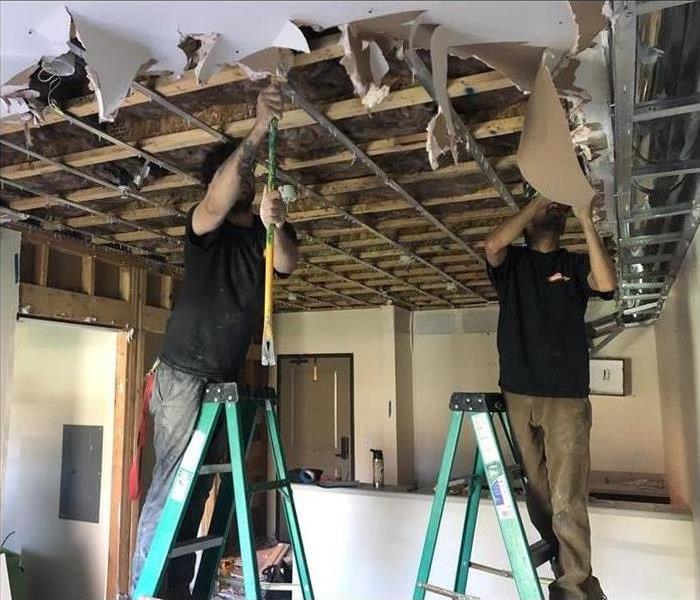 If you have problems with the ceiling of your Commercial Building in Ogden, UT, do not hesitate to contact us.
If you have problems with the ceiling of your Commercial Building in Ogden, UT, do not hesitate to contact us.
Your roof is one of the most important parts of your building. It protects you from the elements and gives you a feeling of safety and security. A well-built roof should last 20 years or more, but you may eventually discover a roof leak. This can lead to severe problems. It’s vital that you take the appropriate steps to fix and clean up the spots where water is getting in your Ogden, UT, business.
Remove wet Areas First
As soon as you detect water coming into your building through the ceiling, you need to act quickly and inspect the roof. Chances are good that you have a damaged roof that needs your attention. Follow these initial steps:
• Get on your roof and inspect the entire area.
• Identify any wet area.
• Remove wet shingles.
• Reapply caulking where necessary
Dry and Sanitize
If you’ve had a roof leak for weeks or months, the water damage could be significant. It’s essential that after you remove the wet materials and debris that you allow the area to air out and dry. You can let nature do this, but you should accelerate the process with heavy-duty fans or driers. Once the area is sufficiently dry, you need to disinfect it. This will help remove mold and other substances or prevent them from growing.
Restore and Rebuild
It’s now time to replace missing shingles and other parts of the roof you had to remove. This is an excellent job for a professional if you don’t feel confident doing it yourself. The professional will lay felt paper first, followed by the new shingles, overlapping each. This should take care of your roof issues, but don’t forget about any damage to ceilings. A qualified professional can help with this as well.
A roof leak can start small but turn into a larger problem if you don’t properly address it. Follow these steps, and you can avoid more costly damage down the road.
Water Damage and the Need for Professional Remediation
1/24/2022 (Permalink)
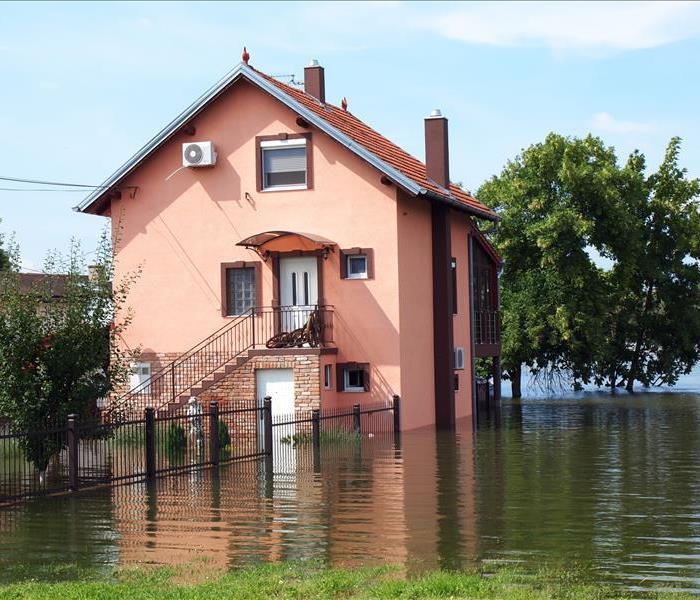 Water damage can vary in contamination levels. The information here presented can be really helpful if you experience this problem.
Water damage can vary in contamination levels. The information here presented can be really helpful if you experience this problem.
Before wading into a flooded basement, street, or property, it is necessary to understand the potential dangers of such actions. Floodwater can contain several contaminants, including:
- Bacteria
- Viruses
- Chemicals
- Biological agents
Before you decide to perform a DIY restoration, contact a restoration service in Ogden, UT. The company can send out qualified professionals to test the water and determine what precautions are necessary to protect both people and property.
Important tips to consider as regards Water Damage
Understanding Water Damage Categories
Every flood is not created equal. Water can become contaminated in various ways, and some forms of contamination are toxic to people and pets.
Professionals use a straightforward classification system to determine water's danger or contamination level. The designation will often correspond to the remediation's difficulty level.
Water loss with the quickest recovery time is category one because it is clean and represents the least risks. However, even category one water damage can evolve into more complex and dangerous categories.
A knowledgeable homeowner will consider the source of a flood to help them evaluate potential solutions. However, a professional is the best solution in most water loss situations.
3 Categories of Damage
Category one water damage is clean water and typically comes from a supply line. In most cases, category one damage is controlled and manageable without the need for professional remediation. However, when it involves a pipe break, the flooding can become extensive, in which case, time is of the essence, and professional interventional might be required.
Category two damage is often referred to as gray water. Gray water is slightly contaminated and can lead to illness if ingested. This type of water contamination usually occurs when clean water seeps through a ceiling to another floor or comes into contact with chemicals or other contaminants on the floor.
Category three water damage is considered the most dangerous. It is called black water. Water in this category is highly contaminated with viruses, bacteria, chemicals, and other biological substances.
Black Water and Its Risks
Because black water is highly contaminated, it is considered a significant health risk. People can become ill by simply coming into contact with the water.
If your home is declared a category three-site, it is best to relocate while recovery operations commence. A qualified remediation team will remove the water and disinfect the property. They will wear full PPE, ensuring their safety.
Category three water damage is not a DIY project. It is necessary to hire a qualified restoration service to avoid any property issues. While the damage can be costly, saving a dollar is not worth risking your or your family's health and wellbeing.
Water damage can vary in contamination levels. The higher the category number, the more dangerous the water. While DIY methods are tempting because of the potential of cost savings, they are not recommended, especially when water damage meets category three standards.
Category 3 Water Cleanup FAQs
1/13/2022 (Permalink)
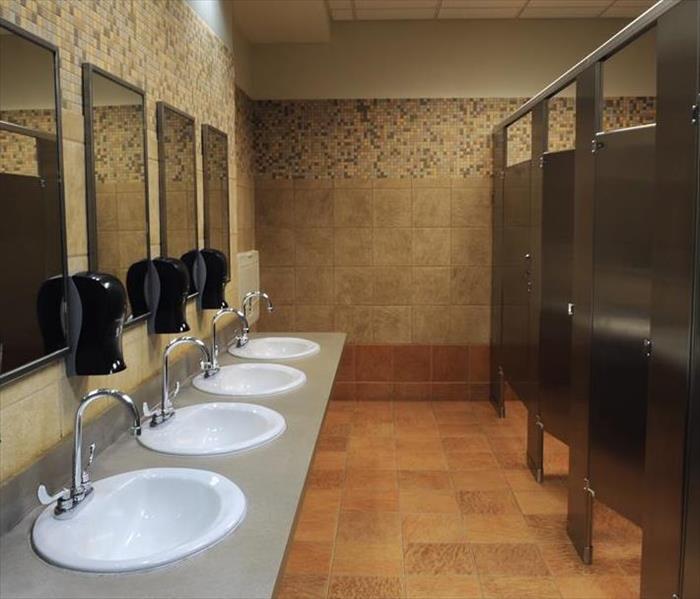 If you experience water damage in your Ogden, UT commercial, please contact us.
If you experience water damage in your Ogden, UT commercial, please contact us.
A clogged sewer line can cause overflow in the restroom of your commercial building in Ogden, UT. It may look like you just need to mop up the standing water, but it is likely that more issues persist under the tile where you can't see them. The floodwater from this type of accident requires professional cleaning due to Category 3 water damage.
For best results, you must contact water damage mitigation experts to assess and fix the problem. Here are some other questions you may have about the cleanup process.
FAQs related to the issue of Water Damage
What Are Sources of Category 3 Water?
Not every flood is the result of contaminated water. Sometimes, a simple faucet leak can be fixed easily with relatively little cleanup required. However, there are several common sources of Category 3 water that occur in commercial buildings:
- Sewer backup
- Toilet overflow
- Broken sewer lines
- Storm flooding
In contrast to the clean water that comes out of faucets or directly from the supply line, Category 3 water has the potential to contain grime, bacteria, and other microbes. Therefore, it's not enough to dry the area where the flood occurs. It also must be cleaned.
What Damage Can Category 3 Water Cause?
When a toilet overflows, the resulting floodwater puddles around the base of the toilet. It doesn't stay there, though. It can seep under the floor tiles and into the structure beneath them. If the restroom is on an upper level, it may even leak into the floor below it. All of the damage must be repaired to safeguard the structural integrity of your building and prevent further problems.
Why Do You Need Mitigation Professionals?
There are several reasons to call mitigation experts as soon as you know you have a flooding problem. First, you get a correct assessment of the whole scope of the problem. They can also help prevent secondary damage such as mold growth by removing affected items and materials quickly. If the fungus has already started to grow around the area, they can also include that issue in their overall cleanup plans. Finally, they not only handle the cleanup but can also restore your building to its previous state.
Does Insurance Cover the Cost of Mitigation?
Most basic property policies cover the damages caused by a sudden and unexpected event, such as an overflowing toilet. You will likely need to pay the cost of repairing the toilet itself if a plumber is needed. If Category 3 damage comes from flooding due to a natural disaster, you may have to rely on your flood policy. The best resource for questions about your insurance coverage, of course, is a representative from your provider.
Any time your building floods, it's important to know the source of the floodwater. From that point, you can make an informed decision about the best method for cleaning it up. For Category 3 water damage, you need certified mitigation experts who can clean up the mess, remove ruined materials and restore your building to its former state. The sooner you call for help, the less damage you are likely to have in the long run.
5 Tips for Maintaining Smoke Alarms
1/6/2022 (Permalink)
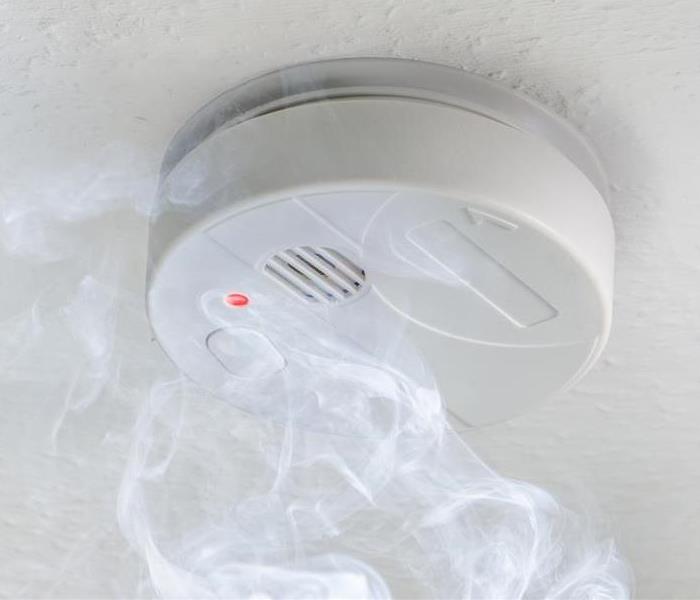 Checking your smoke alarm can be key for preventing fire damage in your Ogden, UT home.
Checking your smoke alarm can be key for preventing fire damage in your Ogden, UT home.
Smoke alarms are essential for keeping a safe home in Ogden, UT. A properly working fire detection system can potentially mean the difference between incurring no damage and sustaining a devastating total loss. Unfortunately, simply having a smoke alarm system isn't enough; you must ensure each unit is always operational and regularly maintained.
Important advices for your family's safety
Put these safety tips into practice to keep your family safe and your structure standing.
1. Invest in Good Quality Detectors
When it comes to your family's safety, penny-pinching is not an option. Research good quality smoke detector systems that have gotten good reviews from users and avoid ones with consistently bad reviews.
2. Test the Units at Least Once a Month
People often forget about their smoke detection system when doing their usual housekeeping. However, testing the units at least once a month can keep you aware of any potential issues with the system so you can correct them immediately. After all, taking a few minutes each month can potentially keep emergency services and the fire damage restoration company away.
3. Replace the Batteries at Least Twice a Year
Replace the batteries in your smoke detectors at least twice a year. This can provide peace of mind knowing your system will be there when you need it. It'll also reduce the risk of that annoying beeping sound that signals a low battery. Keep extra batteries on hand in case you discover you need them.
4. Clean the Units Annually
Dust and debris will accumulate on the individual units over time. This can block the sensors, making the smoke alarm malfunction. Once or twice a year, clean the units carefully with a vacuum hose or damp cloth.
5. Replace the Units Regularly
Unfortunately, like any electronics, your fire detection system won't last forever. Therefore, it's vital to replace the units regularly. Newer fire alarms are built to last longer, with a life expectancy of about 10 years. If you've had your fire detection system for a while, check to see when you purchased them and when the manufacturer suggests replacing them.
Ensure Proper Smoke Detector Installation
- Install units inside each bedroom and outside each sleeping area. Install detectors on every floor of the home, including the basement.
- Place basement alarms on the ceiling at the bottom of the stairway that leads to the next floor.
- Install detectors close to but at least 10 feet from any cooking appliances (if placed closer, false alarms could go off with regular cooking).
- Since smoke rises, install detectors on ceilings or high on walls. They should be placed no further than 12 inches from the ceiling. Never place smoke alarms near windows, doors, vents, etc. Drafts can interfere with the detectors' sensors.
- A system of interconnected units is the best type to install because all the alarms will sound when one goes off.
- Dual sensor smoke alarms are also recommended to detect both flaming and smoldering fires.
One of the most critical things you can do now is to check the functioning of your smoke alarm units. Ensuring they work today could mean the difference between no damage and pure devastation tomorrow.
How To Care For Burns
12/10/2021 (Permalink)
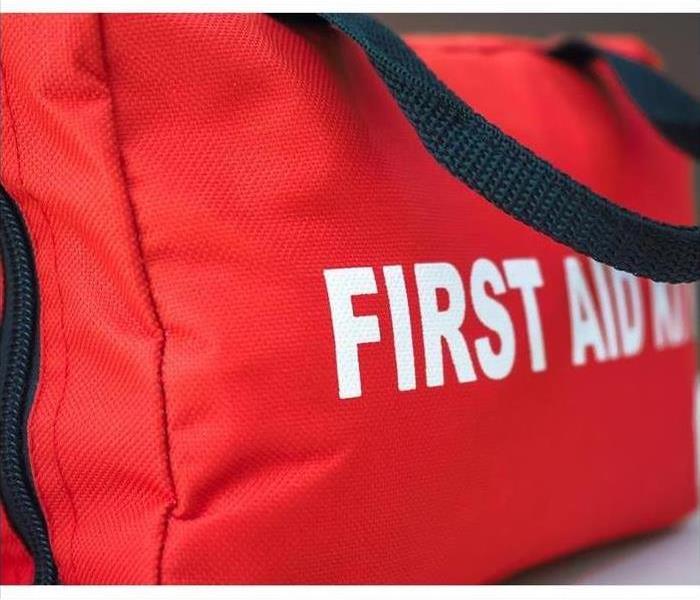 A first aid kit in your Ogden, UT can be helpful for treating minor burns.
A first aid kit in your Ogden, UT can be helpful for treating minor burns.
Measures to Care for Burns Caused By a Fire At a Commercial Building
Burn first aid is critical knowledge for business owners and employees. Every workplace should have a complete first aid kit. It is also important to have a safety plan and detection and suppression systems in place to limit the extent of fire damage. Take the following measures to care for burns caused by a fire at a commercial building in Ogden, UT.
Assess Burn Severity
The severity of a burn should determine the approach to aid. A major burn can be
- 3 inches or larger in diameter
- Deeper than the dermis
- White or charred
Emergency assistance may be necessary for extensive second-degree or any third-degree burns. It is important to monitor the injured individual until help arrives. Depending on the extent of fire damage, it may be advisable to administer care outside or in a safe structure nearby.
Retrieve a First Aid Kit
An emergency kit should contain burn cream, sterile gauze bandages, and other necessities. These items can be helpful for treating minor burns and protecting more severe burns until emergency responders arrive.
Cool and Moisturize
Hold a minor burn under cool running water or apply a damp compress to limit damage and relieve pain. Do not immerse burns in water and exercise caution when cooling severe burns.
Bandage and Keep Clean
Apply burn cream and loosely wrap a minor burn in sterile gauze. Cover more severe burns with a cool, moist bandage or clean cloth. Avoid breaking blisters, and cleanse any blisters that break with water and mild soap if desired. Reapply burn cream before re-dressing the injury.
Business owners may want to schedule a burn first aid training session. If a fire breaks out at a commercial building in Ogden, UT, the owner or occupants should contact the fire department and emergency medical assistance if necessary. A fire damage restoration company can help a business resume operations.
Understanding How Filing an Insurance Claim Can Raise Rates
11/25/2021 (Permalink)
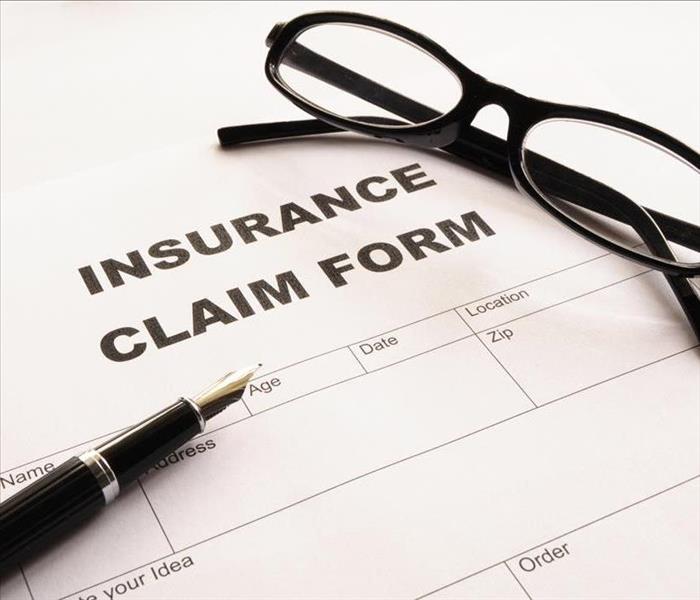 File an insurance claim only when it is essential to avoid increased rates.
File an insurance claim only when it is essential to avoid increased rates.
Home insurance is often necessary, and most homeowners do not mind paying the premiums because having a policy gives them peace of mind. However, while an insurance policy is welcome after experiencing a home disaster, like water damage, most people worry about filing an insurance claim because they are unsure how it will affect their premiums. While it might seem unfair, any mitigation professional in Ogden, UT, will tell you that you need to understand a few things before making a claim:
- Claims are necessary for financial protection
- Claims can affect rates regardless of circumstances
- Claims are advisable for large-scale losses
Understand the Rates of Filling Out an Insurance Claim.
Why an Insurance Claim Can Result in Rate Increases
When you signup with an insurance company, your premiums or rates are tied to your level of risk. Unfortunately, filing a claim increases your risks to the insurance company, regardless of the reason behind the claim. For example, your claim might be for a home flood resulting from a sudden pipe break. While your insurance might cover the damage, the expense still represents a loss and a risk to the insurer, meaning when it comes time to reassess your rates, your premiums might go up.
Essentially, your insurer performs a cost-benefit analysis every time they refigure your premiums. There is typically no reason for rates to climb if you make it through the year without filing a claim or using your policy. However, if you used your policy multiple times in a year, your account costs the insurer more than expected, meaning they will recover their losses by increasing your premiums.
Preventing Rate Hikes Because of Claims
The obvious solution to preventing rate hikes is never to file a claim, but this solution is impractical. Sometimes, you will need to make a claim because making the repairs alone is not financially possible. The key is to handle minor issues on your own whenever possible, limiting the number of times you use your policy.
If you experience damage that is not costly to repair, or if something does not even meet the deductible for your policy, then pay for it out of pocket. By paying for minimal expenses out of pocket, you can protect your insurance rates.
Rate Hike Circumstances
While your rates can increase regardless of the cause, some situations are more likely to result in an increase than others. For instance, if you file a claim and during the course of the investigation it is determined that you were at fault for the damage, your rates will typically always increase.
However, if you are not at fault and rarely use your policy, the insurer may or may not raise your rates. The primary takeaway is only to use your policy when it is absolutely necessary.
An insurance claim can lead to increased rates regardless of your responsibility or the extent of the damage to your property. To protect your current rates, you should only file claims when it is essential. Contact your insurance representative if you want to know how your rates might be affected by making a claim.
How To Avoid Frozen Pipes
11/15/2021 (Permalink)
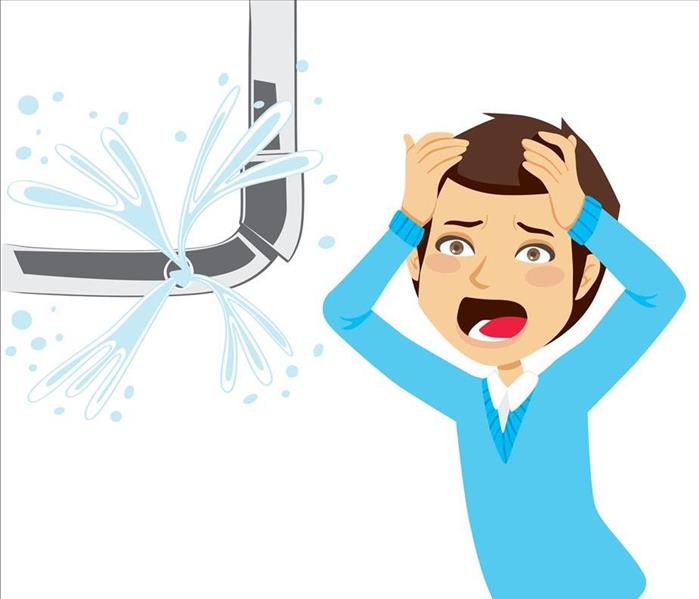 Water damage caused by burst pipes it can be expensive and catastrophic for your Ogden, UT home.
Water damage caused by burst pipes it can be expensive and catastrophic for your Ogden, UT home.
Frozen pipes can cause a lot of damage to your home if they burst. In addition to having to repair or replace the pipe itself, you must also contend with the damage to the structure around it caused by the surge of water it releases. To protect your home in Ogden, UT, from extensive water damage caused by a frozen pipe, take the following precautions.
6 Tips to Prevent Frozen Pipes
Proper Insulation
You probably pay close attention to general insulation for your home, but what about insulating the pipes themselves? Even if you have a layer of protection from the extreme winter cold, it may not be enough to protect your home from a pipe freeze. Add extra insulation to pipes located in specific areas:
- Attached to an outside faucet
- Along an external wall
- In the crawl space or attic
You can purchase heat tape or cables directly to vulnerable pipes. Most hardware stores have these items in stock. Be sure to follow the manufacturer's instructions carefully when applying them for optimal results.
Protection From Outside Air
No matter how well insulated your home is, pipes can still freeze if you have spaces where cold air can leak in. Check your windows and doorways for drafts during regular inspections, particularly right before the first freeze. Any appliances that vent to the outdoors are also common sites of leaks. Use caulk to seal any gaps you find.
Steady Stream
Sometimes a simple solution is the best one. A slow drip from your faucets can prevent frozen pipes. The steady stream of water keeps the pipes warm enough to stay intact. While you may worry that this wastes water and drives up your utility bill, think instead of how much money you save by not suffering the immense water loss caused by a broken pipe.
Warm Home
Keeping your home warm can also keep your pipes warm. Some homeowners lower the thermostat overnight when the family is bundled up in bed, but this can lead to water damage from a pipe burst. Set your thermostat at a consistent temperature throughout the day and night to keep pipes warm at all times.
Vacation Preparation
If you are not going to be at home for several days or weeks, you must protect your pipes so that you don't come home to a big mess. Set the thermostat no lower than 55 degrees so that the house stays warm. Turn off the water main. That way, if a pipe does break, there is nothing in it to flood your home. Ask a neighbor or a friend to check on your house occasionally while you're gone to make sure everything is as it should be.
Quick Response
Even if you take all of these precautions, a pipe may still freeze and release water. A fast response is key to minimizing the damage it leaves behind. Call your plumber to repair the pipe and water damage mitigation specialists to provide the cleanup.
Taking care of your pipes is important, particularly when it's cold outside. Know how to prevent frozen pipes and what to do if a break does occur.
Why Your Building Smells Like Mold
11/8/2021 (Permalink)
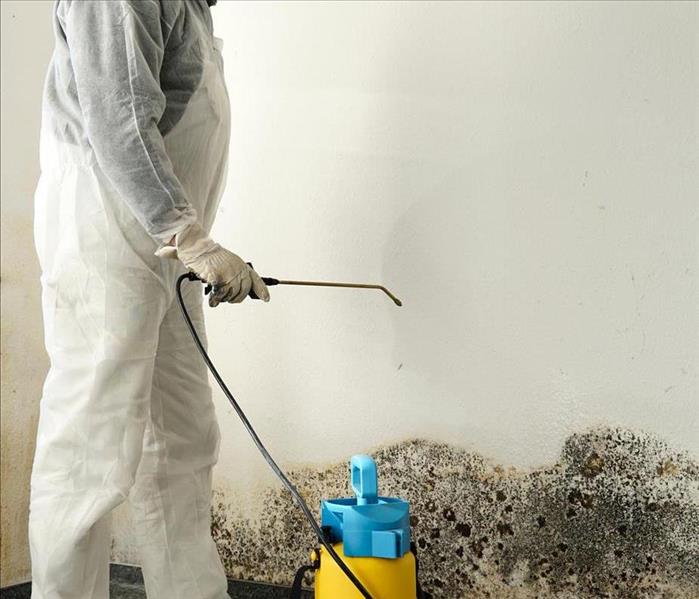 If you smell a musty odor, you probably have mold damage in your Ogden, UT building.
If you smell a musty odor, you probably have mold damage in your Ogden, UT building.
A mold smell that you can't find the source of can be frustrating for property owners. Fortunately, there are steps you can take to identify and eliminate the problem.
How To Eliminate Mold Smell
The characteristic fungus smell caused by the presence of mold or mildew is the result of gasses, called microbial volatile organic compounds, that are produced when molds reproduce. Not all MVOCs have an odor, but mycotoxins are responsible for the musty smell of mold. Eliminating the odor involves getting rid of the mold.
1. Identify Sources of Mold
Sometimes the source of a mildew smell is obvious. You may see patches of green, black, brown, pink, grey, or white mold or mildew growth on surfaces such as walls, ceilings, windowsills, and carpets. Other times, mold is more difficult to locate. Check hidden areas with high moisture, such as under sinks and inside HVAC vents. Mold can sometimes grow inside of walls or other places that are difficult to check. An infrared camera can be useful for detecting hidden mold and moisture.
2. Get Rid of Mold and Mildew
You may be able to remove small areas of mold or mildew by scrubbing with diluted bleach or using cleaners specifically intended for removing fungus. However, for larger jobs, you may need to contact a mold remediation company in Ogden, UT. The mold that is behind walls or beneath surfaces can be difficult to remove with do-it-yourself solutions. If you don't remove all of the molds, it is likely to come back.
3. Let in Some Fresh Air
Open some windows and doors to get the air circulating. This can help remove musty odors and may assist with drying out wet areas.
4. Use Odor Absorbers
If you still have lingering odors after mold removal try using odor absorbers or ozone machines to remove odors from the air. If the smell persists, you may still have hidden mold somewhere.
5. Eliminate Excess Moisture
Prevent future mold problems by controlling sources of moisture. If your property is located in an area with high humidity, install dehumidifiers. Make sure any industrial equipment, kitchens, showers, and other areas that produce moisture have proper ventilation. If there is any standing water in your building, remove it with a wet/dry vacuum. Have your HVAC system inspected and keep it regularly maintained to avoid accumulations of moisture in the vents and other areas. Repair leaking plumbing, roofs, appliances, and equipment promptly.
6. Use Mold-Resistant Products
You can reduce your chance of future mold issues by using mold-resistant products whenever you replace existing materials or construct new buildings. Mold-resistant drywall, sheetrock, and paint can help prevent mold growth in and on walls. It is particularly beneficial to use these materials in areas that tend to have high moisture levels.
If you are noticing a mold smell, you probably have mold, even if you can't see it. The key to getting rid of the smell is to get rid of the mold. Because mold isn't always easy to find, you may need to utilize special equipment or hire a professional to perform an inspection.
Why You Shouldn’t Drive Down a Flooded Street
10/23/2021 (Permalink)
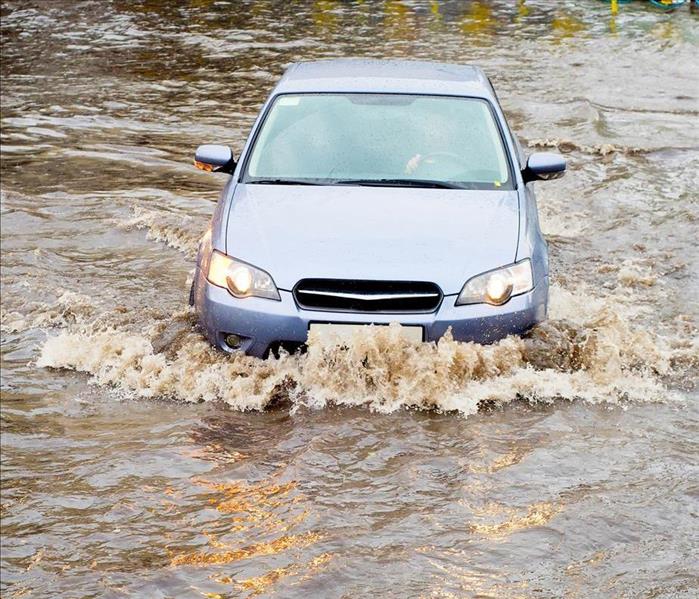 A flooded road can damage your car leading to permanent damage.
A flooded road can damage your car leading to permanent damage.
Floodwaters in Ogden, UT, can arise from heavy rainfall, broken water pipes, or overflowing bodies of water. When you have somewhere you need to be, and you're just ready to get there, driving down a flooded street can be tempting. It may look OK from your steering wheel, but it can actually be perilous. Here are just a few reasons why you should never drive down flooded roads.
1. It Can Be Deeper Than You Realize
It can be challenging to determine how deep water is when you encounter it on the road. Even if it appears shallow, the road surface and underlying ground could have washed away, making the water much deeper.
2. You Can Quickly Lose Control
Six inches of water can touch the bottom of the typical car and cause stalling and even loss of control. Most vehicles will float if they come into contact with one foot of water, and two feet of rushing water can sweep away even large trucks and SUVs.
3. You Can't Always See What's Below
You can't see what's underneath murky floodwaters. Therefore, it can be frightening to think about having no control over where your car is being carried and not knowing what you could run into that could hurt you, your vehicle, or others.
4. It Can Destroy Your Car
Floodwaters can not only do immediate damage to your car, but they can also have lingering effects that may not show up for months. You may have everything from cosmetic damage to engine damage and electrical short-circuiting.
Flood damage experts will tell you to never drive in water that you don't know the depth of. However, there are times when you may already be in it when it floods.
Travel Tips for a Safe Journey in Bad Weather
1. Turn Around
Avoid fast-moving floodwaters. They can carry even large vehicles with ease. Floodwater can even flip a car in as little as 12 inches.
2. If There's No Alternate Route, Take Shelter
If there's no alternate route to take, get out of your vehicle and move to higher ground. Wait until you can safely travel to get back in your car.
3. Travel Slowly
Enter a road as slowly as possible, usually at 1-2 mph). Cross a flooded street at a maximum speed of 3-4 mph. Cars should take turns crossing the road one by one, providing plenty of room and time for each vehicle to pass through.
4. Watch for Obstructions
Floodwaters are usually murky, meaning you won't be able to see what's underneath the water. You will not only have to worry about what is underneath but also what is floating at the surface. Large tree branches, other vehicles, and various other hazards could be floating in the water. You also need to look out for obstacles, such as trees, buildings, and parked cars, that you could run into after losing control of your vehicle.
5. Dry Your Brakes
Once you're out of the water, lightly tap the brakes slowly several times. This will help dry the brakes.
You should avoid traveling down a flooded street at all costs. Now you know why it can be hazardous and how to navigate enough to safely make it to a stop.
Learning To Create an Effective Fire Escape Plan
10/18/2021 (Permalink)
 A fire escape plan can save your life during an emergency in your Ogden, UT residence.
A fire escape plan can save your life during an emergency in your Ogden, UT residence.
Do you have a fire escape plan? If not, you are not alone. Many families fail to plan for fire disasters, which makes the disaster even more dangerous. Having an emergency escape plan significantly reduces the risks of injury or death, but it is not enough to have a plan; it must also be an effective plan designed for your specific home and circumstance. You can contact the local fire department or a fire remediation company in Ogden, UT, for assistance.
4 Steps for the Ideal Fire Escape Plan
An escape plan is all about accessibility and ease of use. If you make your plan too complicated or your designated exit points too complex, you risk injury or worse. Every plan is only as effective as its weakest exit strategy, so make sure you can find and acquire the necessary tools to make escape easy and convenient. There are at least four steps for developing the ideal escape plan.
1. Rooms Need Two Exits
While most people feel that having two designated exits from their home is enough to keep them safe during a fire emergency, they are mistaken. You never know where a fire will start or how it will spread. If you only have two exits from your home, you up the chances you will become trapped.
An effective escape plan requires a minimum of two exits per room, meaning bedrooms, basements, attics, kitchens, bathrooms, etc., need two manageable exits. You do not have to get overly creative here. A window and a door are good escape routes; just make sure that every space in the home has a minimum of two ways out, including hallways.
2. Escape Routes Must Remain Clear
As you design your escape routes, remember the paths need to remain clear. Do not place bookshelves in front of windows or couches in the direct line to the front door.
While this seems like a simple rule, it is easy for people to become complacent, especially if they do not practice their routes at least once per month. When too much time passes, it is easy to forget about routes and clear paths. People become more interested in design and style, leading to clutter and potential barricades to your escape.
3. Communication Is Key
Do not underestimate the power of communication, especially repeated communication. When you come up with an escape plan, please do not shy away from talking about it. Quiz your kids on the routes out of their rooms and the house. Ask your spouse to explain to your children how to make quick choices during a fire. By having conversations, even repetitive ones, you ensure your escape strategy remains a priority in the minds of your family.
4. Practice Makes Perfect
Similarly, the physical practice is crucial to developing muscle memory. In a genuine emergency, your brain can freeze, wasting the few precious moments you have to escape a fire. By practicing at least once per month, you ensure your family knows how to get out of the house.
A fire escape plan is a crucial part of family safety. Follow the steps above to create and practice your ideal plan.
How To Mitigate Sewer Damage to Two or More Floors
10/6/2021 (Permalink)
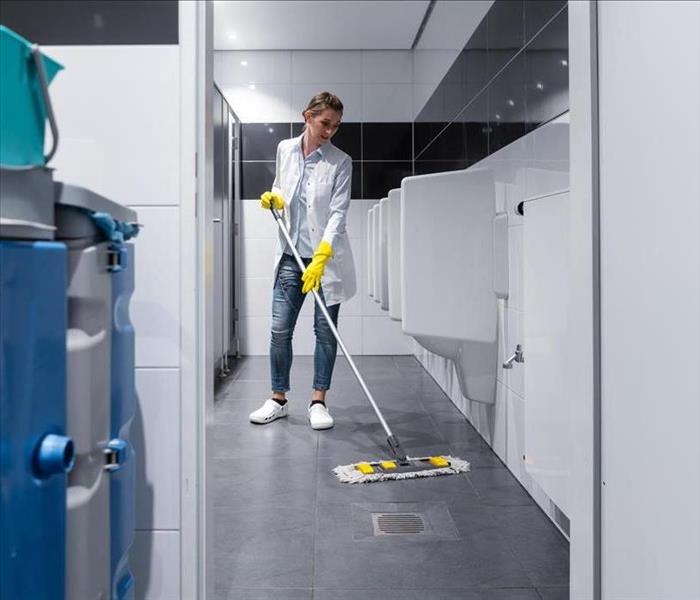 An overflowed toilet means sewer damage in your Ogden, UT commercial building.
An overflowed toilet means sewer damage in your Ogden, UT commercial building.
Restrooms in your commercial building in Ogden, UT, are designed for easy cleaning. Every surface is easy to wipe down, and toilets are often self-flushing to prevent backup. When overflow does occur, however, it can make a big mess that doesn't necessarily stay in the room itself. Any space adjacent to or under the restroom may have sewer damage after a toilet malfunction. Water damage mitigation specialists often must address the issues in the restroom as well as the materials and floor beneath it. The typically simple remediation process gains a few steps when damage to multiple floors is involved.
1. Assessment of Sewer Damage
The first thing that technicians do when they arrive on site is to assess the extent of the damage. Because much of the overflow from the flooded toilet is likely to seep in between the tiles on the floor, they may have to remove portions of the material to see how far the problem goes. At the end of the assessment, they should be able to provide a report that provides useful information about the rest of the process:
- Cause of the problem
- Repairs the sewage company needs to provide to prevent further damage
- Areas affected
- Level of contamination and damage
- Tasks involved in mitigation
- Estimated cost of repairs
2. Extraction of Water
Once the members of the remediation team know what needs to be done, the next step is extracting any excess water or sewage from the affected area. Industrial pumps and various other drying methods may be used to remove water, thus stopping the damage in its tracks.
3. Removal of Materials
Having extensive sewer damage that affects the floor beneath the restroom means that technicians will probably need to remove a lot of materials. Not only must they rip out ruined pieces of flooring under the toilet itself but they also must tear out drywall, insulation, and ceiling tiles from all surrounding areas that have been contaminated by the flooding.
4. Disinfection of Surfaces
Since damage from a flooded toilet most likely has a Category 3 contamination level, all remaining surfaces must be disinfected. This part of the process removes any harmful microbes or bacteria, protecting your building and the people in it.
5. Drying of Area
Unmitigated water damage can lead to secondary issues such as mold growth. Therefore, ensuring that the entire area is completely dry before the structure is rebuilt is essential for preventing additional problems. All remaining materials must be free of damage and excess moisture.
6. Restoration of Building
The final step in the mitigation process is restoration. The team doesn't just leave your building gutted and clean. They replace the ceiling, walls, and flooring materials, matching them to the existing structure so that no one can tell there was damage.
Sewer damage from an overflowing toilet may seem like a small problem on the surface, but it can have far-reaching effects, particularly if the water seeps into the floor below it. A trustworthy mitigation team can find and fix all the damage caused by the overflow so that your building's structure remains secure and strong.
How Can an Electronic Claims Service Help?
9/29/2021 (Permalink)
 Electronic claims service makes the process easier and faster.
Electronic claims service makes the process easier and faster.
If your home sustains loss from a disaster in Ogden, UT, whether a pipe burst, fire, or mold infestation, you're probably going to want to file an insurance claim. Thanks to modern technology, the claims process is easier than ever. SERVPRO offers an electronic claims service that extends many benefits in addition to its ease of use. This service is just one reason the company is on the shortlist of your insurance agent's preferred restoration providers. In addition to being a locally owned business with corporate reach and resources, industry competitors can't beat SERVPRO's electronic claims service.
Why Choose SERVPRO's Electronic Claims Service?
1. It's Convenient and Readily Accessible for Everyone Involved
People can access the electronic claims system remotely, from anywhere with an internet connection. They can also access and edit it on various devices, including computers, tablets, and smartphones. This easy access makes it super convenient for an adjuster or restoration professional to upload information about and photos of the damage to the system as soon as they take them.
2. It Preserves Multiple Types of Information
Digital files are very similar to paper files, containing all of the information you would've found as paper documents in the past. This variety of data often includes itemized lists of damaged contents, photographs of the damage, the plan of action for restoration and repair, and progress reports from various contractors. To be put simply, everything you would find in a tangible file is now stored electronically.
3. It Creates a More Efficient Claims Process
Thanks to the electronic claims service, the insurance claim process is more efficient than ever. In the past, once completed, paper documents had to be shared by hand. They would move through multiple hands of different professionals and clients, and some required them to be mailed, which takes more time. Then, they had to be filed. There were risks of the documents becoming damaged or misplaced. Filing your claim electronically with SERVPRO makes the process virtually seamless and shared nearly instantaneously amongst everyone involved. Everything is in one location and can be viewed and updated by anyone with authorization at any time. Even better, the changes are made and seen in real-time.
4. It Improves Accuracy
Because the information is in a digital format and stored in a virtual file, accuracy is strengthened. As various professionals, such as insurance adjusters and fire damage restoration experts, add and subtract information to the claim, the computer is good at catching errors that the insurance agent or other people might miss.
5. It Requires Less Paper
The electronic claims service is not only user-friendly, but it's also eco-friendly. No longer is there a need for vast shelves of boxes and long rows of file cabinets packed with paper documents. The electronic storage system digitally saves, encrypts, and backs up for even more security. It has also reduced administrative costs and decreased the need for paper correspondence.
Whatever type of disaster your home experiences and whatever the damage, SERVPRO's electronic claims service makes filing an insurance claim super simple. Technology is improving all the time, and SERVPRO will continually be on top of it.
Preparing for an Adjuster Visit After Water Damage
9/23/2021 (Permalink)
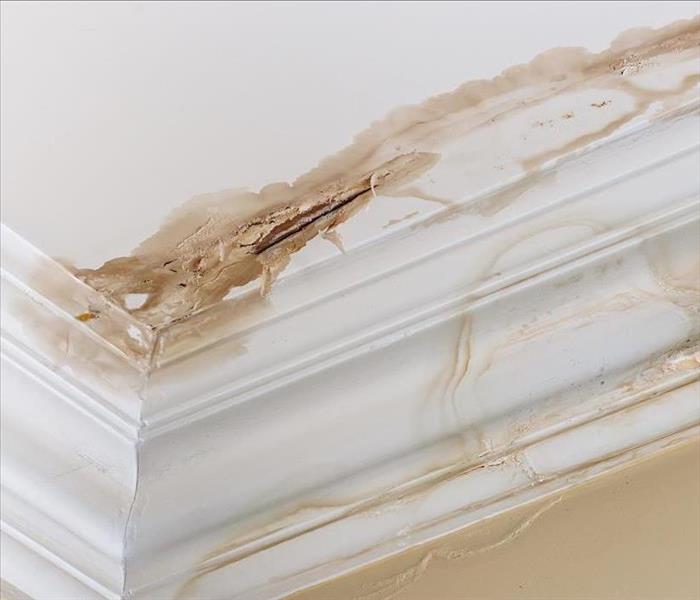 Schedule as soon as possible a visit with an adjuster after water damage in your Ogden, UT home.
Schedule as soon as possible a visit with an adjuster after water damage in your Ogden, UT home.
Water damage can stem from a variety of circumstances, from pipe breaks to storm surges. While your home insurance policy will vary depending on the cause of the damage, in most situations, an insurance claim will require a visit from a home adjuster. The adjuster will want to identify and verify any damage to make a proper recommendation about claim approval. During their visit to your home, the insurance adjuster will be looking for several things, including:
- Evidence of structural damage
- Cause of the damage
- Receipts for claimed losses
- Estimates for repairs
- Mitigation attempts
Looking To Ensure Damage Was Mitigated
While you might feel overwhelmed after a water disaster, you need to remember that you still have responsibilities as the homeowner. An insurance company expects all clients to mitigate further loss after a disaster, meaning if water damage occurs because of a hole in the roof or a pipe break, you are likely expected to either cover the hole or shut off the water supply to prevent more damage to the property. Be aware that failure to mitigate further loss can result in the denial of your claim.
It is also worth mentioning that your insurer likely doesn’t expect you to resolve the issue completely. They mainly want to see that you put forth an effort to minimize the extent of the damage. Additionally, you do not have to mitigate the problem alone; it is strongly advised that you seek assistance from a professional mitigation company in Ogden, UT.
The home adjuster will take time to assess mitigation efforts because if they find evidence that you didn’t do enough, it saves the insurance company money. Remember, the insurer is not your friend; they do not want to give you money, and they especially do not want to give you more than they have to.
Making the Adjuster’s Visit Easy
Do yourself a favor and make the adjuster’s visit as straightforward as possible. To make their visit easy, you should put together a loss inventory. This document will include an itemized list of all damaged or destroyed items. If possible, include pictures of all the items along with copies of receipts.
Additionally, you should compile a list of any structural damage to your home. The list should identify the specific location and any damage; for example, the left interior wall of the basement has a crack and is showing signs of moisture penetration.
Finally, you will want to have copies of repair bids. The adjuster will need to see estimates of the damage done to the property. A remediation company can help you gather any necessary information, including a loss inventory.
It is important to remember that while an insurance company might have preferred contractors, you do not need to work with them for a claim to be approved. It is important to hire the professional you feel most comfortable with.
A home adjuster visit is a requirement of the claims process. While every insurance company is different and will have different expectations for their clients, the above information is pretty standard. For more information, you might want to contact your insurance provider.
Steps To Take When You Discover Mold
9/9/2021 (Permalink)
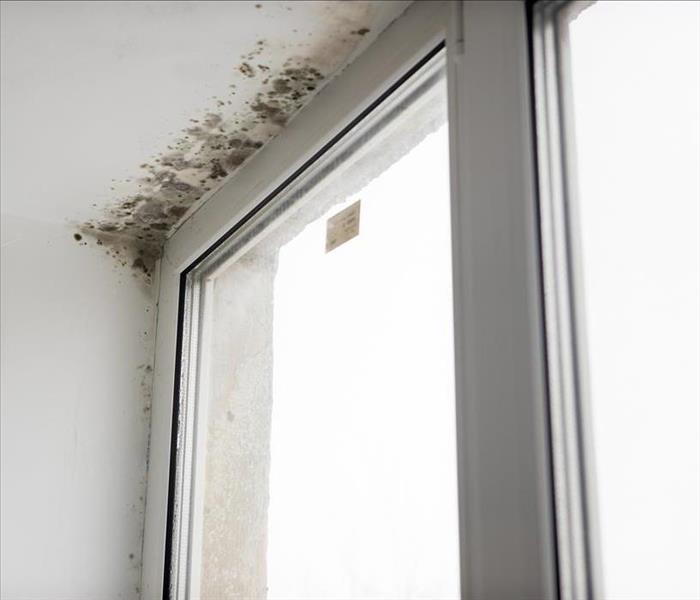 When you discover mold in your Ogden, UT home, act quickly to avoid further damage.
When you discover mold in your Ogden, UT home, act quickly to avoid further damage.
You can't always prevent water damage in your commercial building or the fungus that grows on wet materials. You can, however, influence how big the problem gets. If you discover black mold in your building in Ogden, UT, the immediate steps you take may mean the difference between a quick remediation process and a long-term rebuild.
Call for Mitigation
The first thing you should do if you see patches on the wall or ceiling of your office building is to contact local mold damage, mitigation experts. The faster the technicians get there, the sooner they can start the steps of the mold cleanup process:
- Assess the scope of the problem
- Extract excess moisture
- Tear out ruined materials
- Disinfect area, if necessary
- Dry all surfaces
- Rebuild structure
- Restore aesthetic components
Mold can start to grow on surfaces within as few as 24 hours after a water loss has occurred. If you want to keep it from getting out of control, you need to call for help quickly.
Turn Off Water Main
Chances are good that the moisture problem causing the mold growth in your building stems from a blockage or leak somewhere. A toilet may have overflowed in the upstairs restroom. A pipe may have burst along an exterior wall during an ice storm. To prevent further damage, it makes sense to stop the flow to the location of the problem. Locate the water main and shut off the water for the building. Then call a trusted plumber to investigate and fix the issue before you turn the water back on again.
Shut Down HVAC System
While continuous airflow may help prevent black mold in your building, that changes once a fungus problem is discovered. An important step in slowing the spread of the growth is containing it, which means it doesn't help you to continue to blow mold spores throughout the building by way of the air ducts. By shutting down your HVAC system until the problem is resolved, you can help ensure that the technicians can isolate and mitigate the whole issue the first time around.
Leave Mitigation to the Professionals
It may be tempting to grab a bucket of soapy water and a brush to scrub away the mold on the wall. Unfortunately, this may make the problem worse, even if it looks like you're getting rid of the growth. Mold not only covers the surface of the materials it invades but also embeds itself into the fibers and cracks beneath. Despite your best intentions, your attempt to clean may just be feeding the mold by adding more moisture. It's best to wait for the mitigation team to arrive so that they can contain the mold and get rid of the problem for good.
You may not be able to completely prevent black mold growth in your building, but you can minimize its invasiveness. By calling the right professionals who can tackle the problem quickly and stopping the spread of the growth beyond the affected area, you are on the right track. Your fast action may be the key to stopping the mold before it gets out of control.
Understanding the Fire Cleanup Process
8/20/2021 (Permalink)
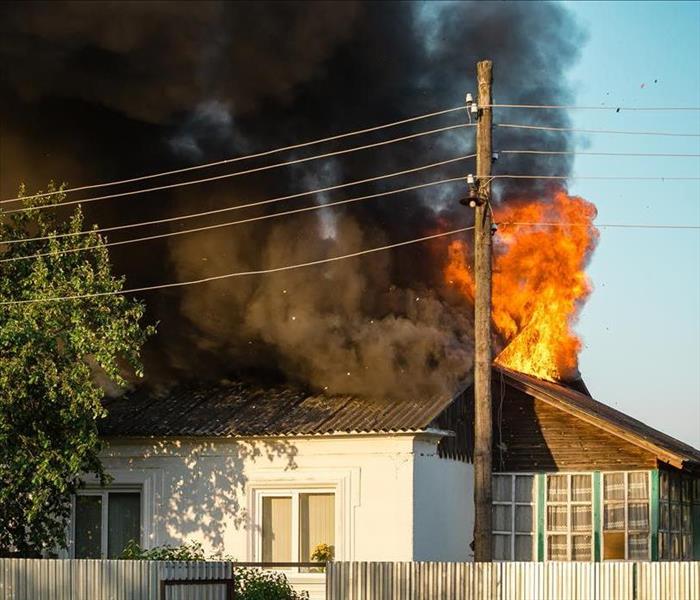 The cleanup after fire damage will require a professional team.
The cleanup after fire damage will require a professional team.
Most homeowners worry about the fire and smoke damage after a fire, but there are more issues to deal with than that. Most fires will leave behind a trail of debris and water damage in their wake. If you experienced a fire, contact a fire remediation specialist in Ogden, UT, for assistance. They will institute a multi-step plan for recovery, including:
- Water removal
- Debris cleanup
- Smoke and soot cleanup
- Restoration
Water Excavation
The first thing a remediation crew will need to tackle is any excess water in the home. Between the fire hoses and burst or broken pipes, a fire can leave behind a substantial amount of water.
The crew you hire will likely come prepared with shop vacs, pumps, and possibly van pumps. These tools should make quick work of the water.
With the water removed, the crew will need to dry the area before they begin cleanup and restoration. Again, they will have several tools for the job: dehumidifiers, fans, and air movers.
Trash and Debris Removal
When the area is dry, the crew you hire can begin removing all the debris and assess the house's structure. Sometimes, the level of damage does not become apparent until after water and garbage are removed.
Most items touched by the fire will need to be thrown away, especially porous items present in a chemical fire. However, you might be able to salvage non-porous or hard surfaces, as these can be cleaned easily of any residue.
Smoke and Soot Cleanup
The most challenging aspect of fire cleanup is smoke damage. Smoke and soot get into and contaminate everything. Even when a fire is small, the smoke and soot can contaminate multiple floors of a home because of HVAC systems connecting different levels of the house.
A mitigation crew will need to examine all appliances, devices, and surfaces to eliminate any trace of soot damage. If any amount of soot remains in devices and appliances, it can damage or contaminate the outputs.
In many situations, experts recommend discarding any equipment present in a fire because of the challenge of cleaning the items. If you choose to keep as much equipment as possible, you might want to hire a cleaning specialist.
Restoration
The final fire and smoke cleaning stage is the part of the process that all homeowners look forward to the most: restoration. During this phase of construction, the home's structural integrity is re-established, drywall is replaced, flooring is restored, and painting and other finishing touches commence. When all is said and done, the homeowner will never know that anything bad happened to their home, at least not by looking at it.
While smoke damage is a concern for many homeowners after a fire disaster, the primary concern should be the house's structural integrity. A fire is not an automatic loss for the structure of the house. In fact, there are many situations when mitigation and restoration services can rectify the beauty and soundness of a fire-ravaged home. The point is, allow experts the opportunity to assess your home because it might not be as bad as it seems.
7 Steps for Restoring Your House After a Major Storm
8/20/2021 (Permalink)
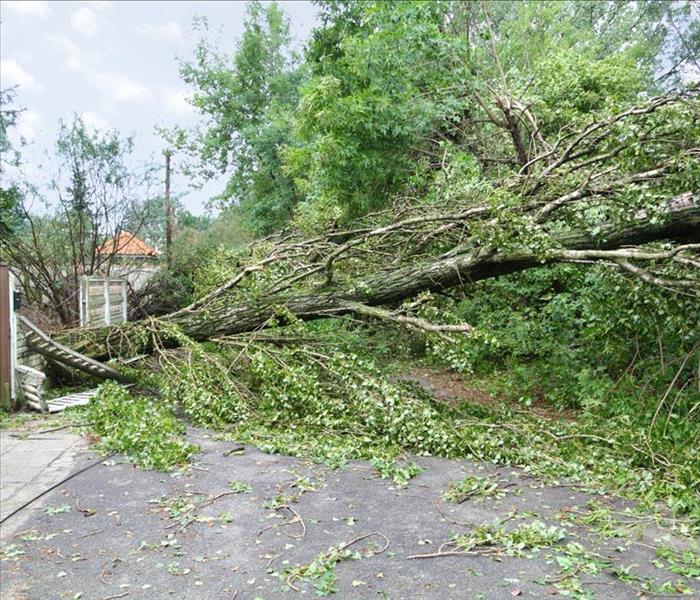 A storm can cause several damages to your Ogden, UT, home.
A storm can cause several damages to your Ogden, UT, home.
A severe storm can quickly wreak havoc on your house, from wind to flooding to fallen trees. You could have a significant job on your hands. You might even have to arrange temporary housing during the remediation process. Of course, you don't want to think about your Ogden, UT, home sustaining any kind of loss. However, being prepared with an emergency plan for the worst-case scenario can keep your family and your home more shielded from the storm and its after-effects.
Prioritize Safety
Safety should always come first. Always wear personal protective equipment, such as safety goggles and a hard hat, when you're performing post-storm cleanup. Don't operate machinery if you're unfamiliar with how to use it safely. Also, be careful of downed power lines, standing water where electricity might be on, and other safety issues.
Document Loss for Insurance
Report the loss to your insurance company as soon as possible to start the claims process. Don't do any cleanup until the insurance adjuster says to do so. They may need to see the damage and take photos of the loss for the claim before restoration begins.
Clear Tree Damage
If you've endured a heavy storm, you're likely to have fallen trees and/or limbs and debris. If you can't safely handle it due to downed power lines or large trees or branches, wait for the professionals to use their specialized equipment and expertise. If you're familiar with this type of cleanup, use a chainsaw to cut large branches into smaller, more manageable pieces and be mindful of more falling debris.
Extract Water
If you've had significant rains and water has infiltrated your house, you'll need to begin water damage remediation as soon as possible. Cleaning and drying the affected area within 48 hours is essential to prevent widespread mold growth and structural damage. The most efficient way to quickly remove standing water by yourself is by using a wet/dry vacuum. If you can't access one of these units in time, mops and towels will also work. If the job seems too challenging for you to handle yourself, flood damage restoration experts can help.
Remove Soaked Items
If flooding has occurred indoors, it's essential to remove all excess moisture. This means removing all soaked materials from the area. These items could include wooden and upholstered furniture, paper materials, even carpeting, and drywall.
Dispose of Ruined Food, Medication, and Cosmetics
Food, medication, and cosmetics that have been exposed to water or heat must be disposed of, as they could be dangerous to ingest or use. Also, if you've had a power outage for more than a few hours, the food in your refrigerator, and possibly your freezer, are spoiled and must be thrown out.
Clean and Dry Everything
One of the most critical parts of cleanup is cleaning, sanitizing, and drying everything in the affected area. Everything must be thoroughly dried within 48 hours. If it's not possible, the item probably won't be salvageable.
Remember these steps in case your home undergoes flooding or any other storm damage. Preparation is key to a swifter restoration after a disaster.
How To Safely Use a Fire Extinguisher
8/17/2021 (Permalink)
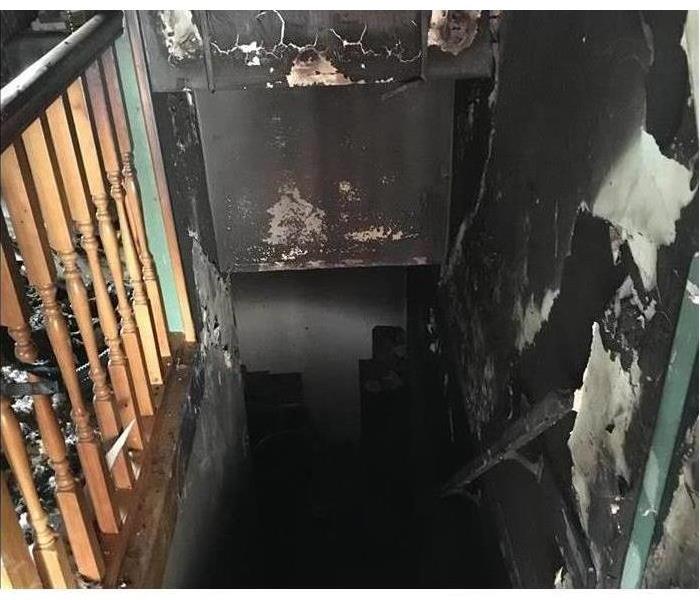 A fire extinguisher can save your life and your home in Ogden, UT.
A fire extinguisher can save your life and your home in Ogden, UT.
A kitchen fire can start in a matter of seconds and spread just as quickly. Knowing how to safely use a fire extinguisher in your Ogden, UT, a home could be the deciding factor between fire prevention and fire restoration.
Understand the Limitations.
A portable fire extinguisher can serve a wonderful purpose in protecting your home from the spread of flames. However, certain considerations must be made before deploying its use:
- First, it must be easily accessible. Fire can spread in mere seconds, and if your extinguisher isn’t nearby or outside of the inflamed area, its purpose will be negated before you can reach it.
- The fire should be in its incipient stage; small and contained to the original ignited material, such as a stovetop or wastebasket.
- A safe evacuation path should be behind you, not behind the flames.
- There is a limited amount of extinguishing agents within portable extinguishers that can be gone within seconds, rendering them useful only for the smallest of fires.
With these considerations in mind, it’s important to understand how to use the device.
Understand the P.A.S.S. Technique.
The effective range of your fire extinguisher depends on the style. The common ABC extinguisher utilizes a dry chemical stream that can reach five to twenty feet, discharging within ten to twenty-five seconds. To use the extinguisher is simple as remembering the P.A.S.S. acronym:
- Pull: Break the tamper seal by pulling the pinout.
- Aim: Direct your aim low, pointing the extinguisher nozzle toward the base of the fire.
- Squeeze: Squeeze the handle slowly and evenly, releasing a consistent stream of the extinguishing agent.
- Sweep: Use a sweeping motion from side to side, continuing to aim at the fire near its base until it goes out. Continue to discharge once the flames have been extinguished to prevent reignition.
Fire damage is something all homeowners want to avoid, but safety should always remain a top priority. If you have any doubt about your ability to stop a fire, or your portable extinguisher cannot smother the flames, evacuate immediately, and call emergency services.
For more information, please visit us at SERVPROogdenut.com/fire-smoke-damage-restoration.
How To Deal With Wayward Sprinklers and the Damage They Cause
8/17/2021 (Permalink)
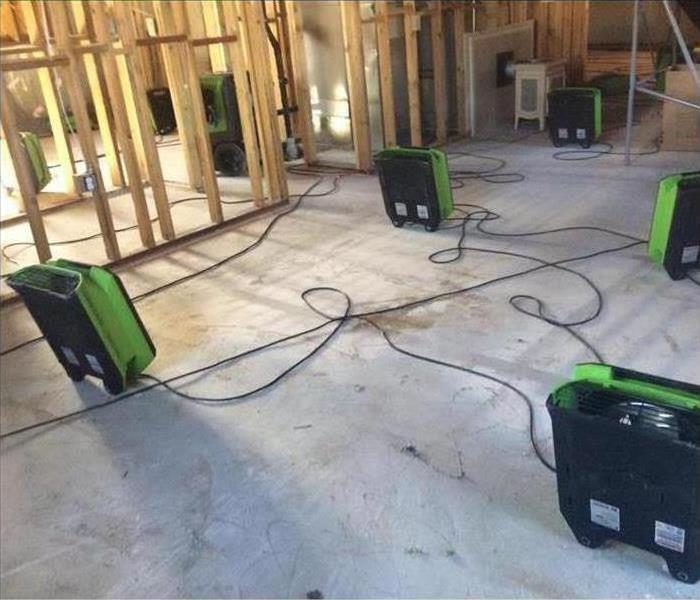 Air movers on water damage in a South Ogden, UT home
Air movers on water damage in a South Ogden, UT home
Studies indicate the fire sprinklers do far more good than harm, and that they actually end up saving both business owners and homeowners money when they deploy. When sprinklers deploy during a fire, they cut the typical cost of fire damage by half. Then there are the life-saving benefits of sprinklers. Some statistics that may surprise you are as follows:
- Sprinklers reduce the average property loss by as much as two-thirds compared to a fire not controlled by sprinklers, even if they do cause a bit of flooding.
- There are no accounts of a fire killing more than two people in a public building fire in which a working system was present.
- Combined with smoke alarms, sprinklers cut the risk of a person dying in a home fire by 82 percent.
The stats clearly show that sprinklers are a worthwhile and necessary investment. That said, it is not unheard of for fire sprinklers to deploy without cause. When this happens, they can cause significant water damage, and you may want to know what your options are when they do.
What To Do When Sprinklers Go Off Without Cause
When sprinklers go off without cause, they can cause significant flooding and costly damage. You can minimize the cost of damage by turning off the water supply line immediately. Once the line is off, take down the wayward sprinkler and its components and bring it to the sprinkler's manufacturer or your Ogden, UT, fire department. Someone should be able to help you determine the cause.
If the cause of the malfunction has to do with faulty equipment rather than lack of maintenance, damage caused to your building, as well as replacement of the system, should be covered by your insurance company. As for cleaning up the flooding and subsequent damage caused by the faulty sprinkler, contact your water remediation team right away before the damage becomes much greater than a bit of wet carpeting and equipment.
How To Keep Your Construction Site Free of Water Damage
8/11/2021 (Permalink)
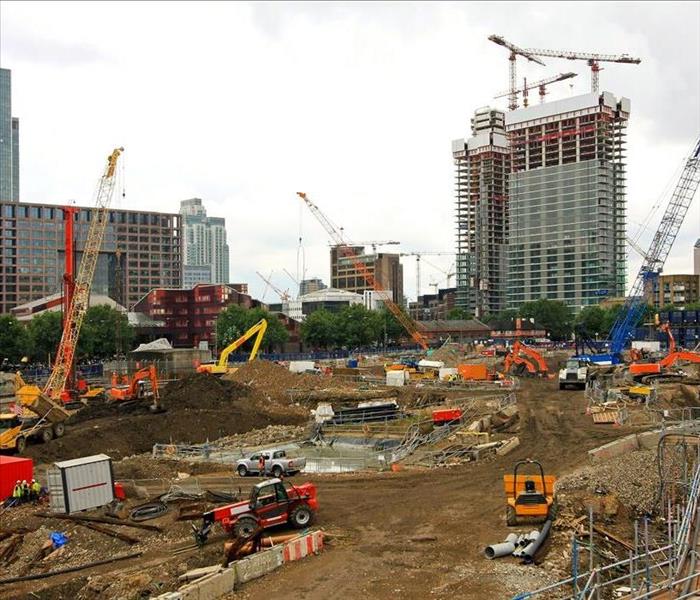 Water damage can be prevented at your building construction site in Ogden, UT.
Water damage can be prevented at your building construction site in Ogden, UT.
There are many things that can delay the construction process of your new commercial building in Ogden, UT. Malfunctioning equipment or delays in paperwork approval are likely to disrupt the timeline of the overall project, and that is not something you can always avoid. Other issues such as water damage, however, can usually be prevented through timely water pipe repair, proper drainage, or effective tarping. Here are some ways to ensure that your project isn't unnecessarily derailed
Building Envelope Protection
As the building is being erected, there are several ways to prevent water from getting inside, even if there are storms or flooding in the area. Measures should be taken when the crew is not present to board up or secure tarps over all the open areas:
- Doorways
- Windows
- Roof openings
The crew members should also identify other vulnerable spots in the structure as they finish up each shift so that they can cover those areas as well. Consistent protection keeps the crew from having to redo parts of the structure by preventing water damage in the first place.
Groundwater Awareness
Rain is not the only way that water issues can occur. Unexpected seepage from groundwater can lead to a flooded building in no time. Avoiding this problem is one of the benefits of a thorough land survey before construction even begins. Having a detailed map of the area where the site is located helps the crew avoid unpleasant surprises.
Good Drainage Practices
No matter how careful the construction crew is, accidents sometimes happen. For example, if a pipe breaks during testing, there will be some type of water loss, even if the source is shut off quickly. Having a good drainage system that diverts the excess water away from the structure already in place can minimize the damage it causes. The project manager can then focus on finding someone to complete fast water pipe repair and complete any minor mitigation that is needed.
Damage Mitigation
A broken pipe can lead to significant water damage, particularly if it happens overnight when no one is present to respond quickly to the problem. If this occurs, the affected parts of the structure will likely need water damage mitigation services before further construction can continue. The cleanup experts can assess the extent of the damage, tear out ruined materials and make sure the building is dry so that further damage doesn't happen. Then work on the project can resume with the confidence that no structural damage remains.
The construction of a new commercial building from the ground up is an exciting prospect. With the freedom of design and increase in control, it brings, however, it also comes with certain risks. Quick water pipe repair alone may not be enough to prevent water damage to the vulnerable structure while it is under construction. Having solid flood prevention measures in place can minimize damage, and putting trusted mitigation experts on speed dial can get the project back on track in a timely manner. Your contractor should be able to walk you through the measures the crew has in place to protect your building throughout the process.
Mitigation Reduces the Risk of Fire Damage
7/29/2021 (Permalink)
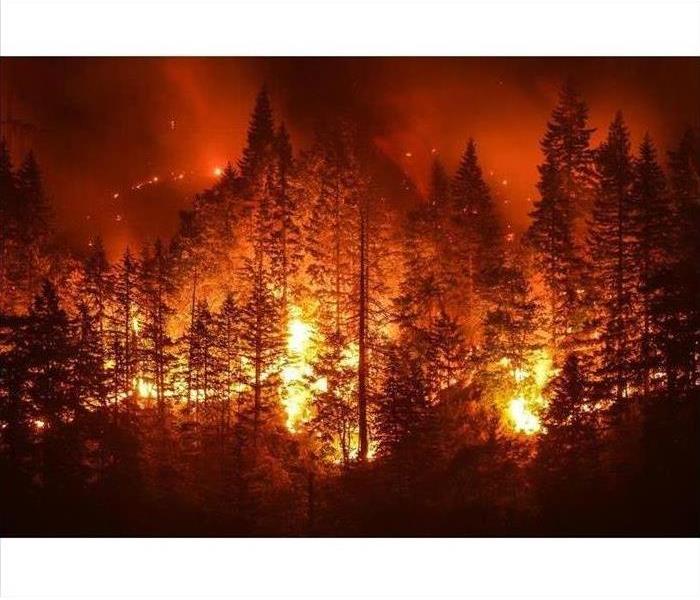 How likely are wildfires in Ogden, UT?
How likely are wildfires in Ogden, UT?
There's more to recovering from a home fire than just putting out the flames. After the smoke has cleared, you're likely to face a lot of work, often including unseen damages. Fire restoration efforts generally begin with inspections, move on to mitigation and cleanup, and then conclude with rebuilding. During inspections, professionals will look for structural weaknesses, smoldering hot spots, and areas of risk.
Mitigation
The next step is mitigation. What does this involve?
- Removing fuels from the home could lead to increased heat
- Clearing away brush and debris that could catch fire
- Assessing risks on the property
- Creating a defensible space around the home
Mitigation is generally an issue when wildfires are a risk. How likely are wildfires in Ogden, UT? Get area-specific answers from fire restoration and cleanup professionals. Defensible space is a zone around the home that has been treated or cleared to slow the spread of fire. Many communities require a specific zone around homes to ensure the safety of homeowners and firefighters and to slow down wildfires.
Clean Up
After creating a defensible space, professionals will move on to treating smoke damage and will carry out other damage cleaning tasks. Smoke leaves behind two types of damage, including visible soot and unseen odors. Professionals have dealt with problems like yours many times and have the tools and experience necessary to handle the cleanup.
Rebuilding
Many of the products used to control fires and to clean and sanitize a home after a fire contain caustic ingredients, including tri-sodium phosphate. You may feel tempted to tackle cleanup and repairs on your own, but many experts and local authorities recommend leaving these tasks to professionals. When your home has been restored, rebuilt, and repaired, you'll still have plenty of work you can do.
When your home has been affected by fire, you'll have plenty of work to do; let fire restoration professionals tackle inspections, mitigation, and rebuilding. You can turn your attention to the safety of your family and the recovery period after professionals have finished their work.
Important Steps To Take If Water Drips From Light Fixtures
7/29/2021 (Permalink)
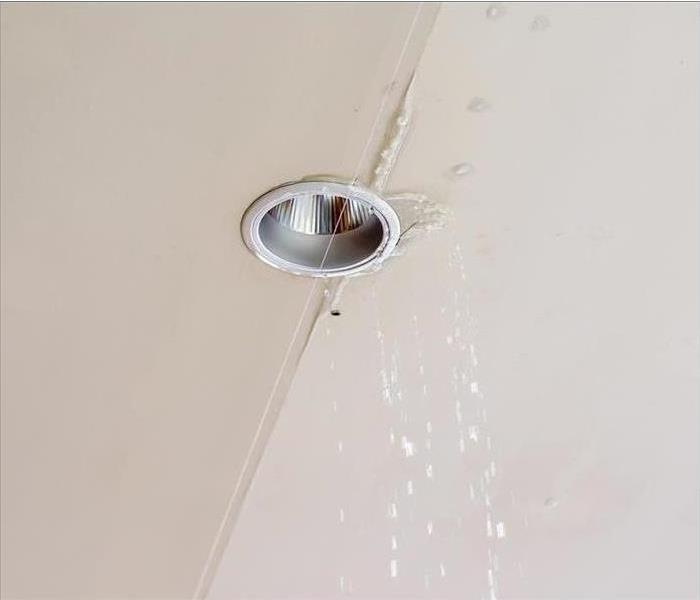 Water dripping from a light fixture is a dangerous problem that must be fixed as soon as possible.
Water dripping from a light fixture is a dangerous problem that must be fixed as soon as possible.
There are certain places in your Ogden, UT, home where you expect to find water, and there are places that will alarm you if water is there. For instance, if you walk into a room and see water dripping from your light fixtures, you know you have a big problem on your hands. Water in a light isn’t a situation you want to take lightly or ignore. With some quick action, you can resolve the ordeal and reduce the risk of widespread flooding.
What To Do First
Water in a light is a dangerous situation, as you know water and electricity aren’t a good combination. For the safety of everyone in your home, make sure you respond to this issue quickly and properly.
- Shut off the power in your home at your breaker box.
- Test to ensure the electricity is off.
- Contact a plumber.
- Contact an electrician.
Turn Off the Power
If you notice water dripping from your ceiling or light fixture, don’t simply turn off the light. You definitely shouldn’t touch the fixture either. Instead, locate the main breaker box in your home and turn off the power to the affected area. In fact, it may be safe to turn off all power to your house. Doing this will eliminate the risk of shock or even electrocution.
Test It Out
To be safe, even after you have shut off the power, make sure there is no electricity flowing through wires and fixtures in your home. With a voltage meter, check whether you detect any current in a dry wire in the home.
Call the Pros
It’s important that you contact the right professionals to help correct this potentially devastating situation. A restoration expert can handle ceiling damage, while a plumber will know how to eliminate the water issue. Also, a trusted electrician will help you install new fixtures without worrying about the risk of shock.
No one wants to see water in a light, but there are fortunately strategies you can follow to help ensure your safety. Act fast and get the right people on the job, and you should be in good shape.
What To Do With a Leaking Toilet
7/27/2021 (Permalink)
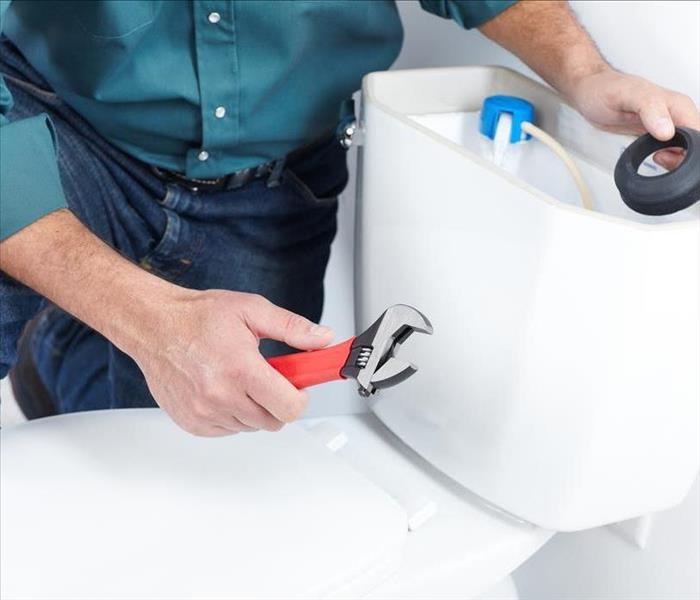 Hire a professional team to repair the toilet leak of your Ogden, UT, home.
Hire a professional team to repair the toilet leak of your Ogden, UT, home.
An old, leaking toilet in your commercial building can be more than annoying. When the leaking water begins to seep into the flooring materials, it can lead to mold growth, warped wood, and structural weakness. You may also find that you're paying more for water each month. There are several possible causes for the leak:
- Faulty seals
- Broken toilet tank
- Worn out joints in the supply line
- Damaged washer, bolts, or flapper
- Trouble with the shutoff valve
It's often hard to determine the exact cause of trouble without removing the entire toilet, and you may avoid some of this hassle by contacting SERVPRO professionals who are Here to Help whenever you need them.
Gather Supplies and Shut Off the Water
If you do decide to replace the leaking toilet, begin by gathering the necessary equipment, including an adjustable wrench, some screwdrivers, a putty knife, and a large rag. You may also need a hacksaw and something to protect your floor from the old toilet. Turn off the water before you take any toilet repair steps. You should also drain water out of the tank and bowl of the toilet.
Remove and Replace the Toilet
Next, remove the caps covering closed bolts and remove the nuts that keep the toilet in place. Lifting from underneath the bowl, move the old toilet out of your way. Remove the wax gasket by loosening the screws and then replace it with a new gasket. After attaching the new toilet to the water supply, carefully position it and tighten the nuts and bolts to hold it in place. Doublecheck all seals before turning the water back on.
Hire Professionals
As a property owner, you may find that the best way to avoid further damage, including mold and water damage, is to hire a professional water remediation company to handle the cleanup and repairs caused by a leaking toilet. Remember that SERVPRO is Faster to Any Size Disaster in Ogden, UT.
3 Considerations When Dealing With the Aftermath of a Flood
7/27/2021 (Permalink)
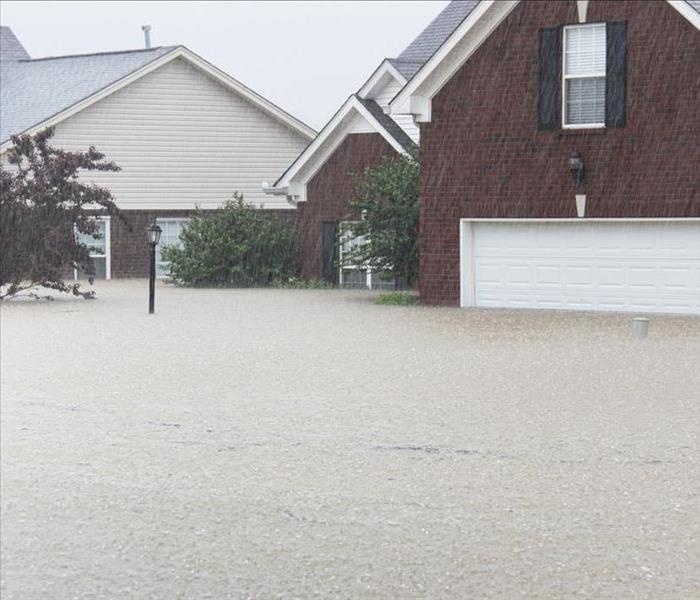 Natural disasters can cause floodings and permanent damages to your Ogden, UT, home.
Natural disasters can cause floodings and permanent damages to your Ogden, UT, home.
A flood is never a good thing, but when it happens in a residence, especially among family heirlooms and other valuables, the experience is devastating. When dealing with water in home, it is crucial to act fast. You might want to call a water remediation specialist in Ogden, UT. These professionals can help to excavate the water and possibly salvage a majority of your belongings. However, when dealing with water-damaged items, there are a few things to keep in mind.
1. Porous Items Might Not be Salvageable
Depending on the type of water damage you are dealing with, it might be best to discard any affected porous items. For example, if the flood is the result of black water, it is likely best and recommended that you throw the affected items away. However, you can reach out to a dry cleaning specialist advertising flood recovery for any heirlooms or items with historical or real value.
2. Appliance Might Need To Be Thrown Away
With water in home, all sorts of materials and devices are affected. If the water level reaches above electrical outlets or submerges appliances, it is best to discard the devices. Hanging on to flooded appliances can be a fire hazard, and it can result in secondary damage, like mold growth.
3. Clean Water Floods Offer More Opportunities for Salvage
If the flood results from a broken pipe or clean water supply line, you will probably have more opportunities to salvage personal items. However, that depends on how long the water has been standing. Even clean water can become contaminated if left to stand for days.
Whenever you end up with water in home, it is best to have a professional service, like SERVPRO, come out and assess the damage. The technicians can help you determine what is salvageable and what is not, possibly presenting the option to save family heirlooms.
3 Tips for Preventing Mold After a Home Flood
7/15/2021 (Permalink)
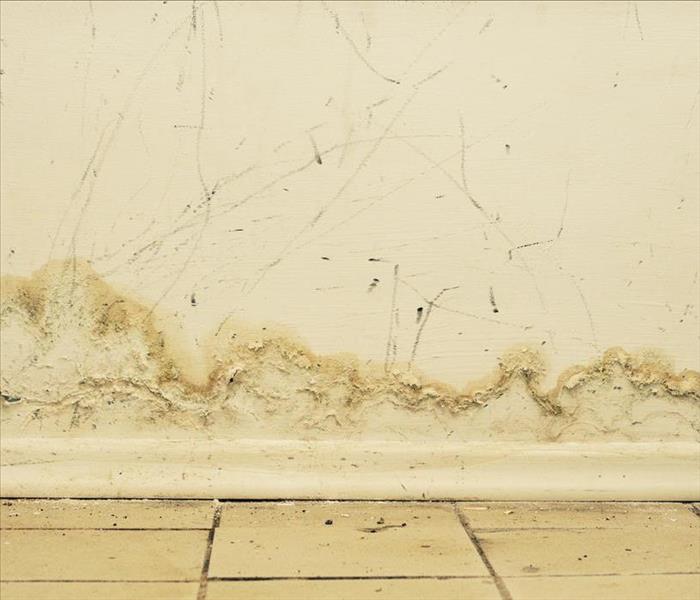 If water damage is not treated properly on time, mold can appear and cause problems.
If water damage is not treated properly on time, mold can appear and cause problems.
The water from a home flood can do severe damage to the structure of your home and its contents; however, the problems don't stop when the water is gone. Mold growth often follows flood damage, unless steps are taken to avoid it.
1. Clean and Dry Your Home Within 24 to 48 Hours
The longer excess moisture stays in your home after flooding, the more likely you are to have issues with mold. As soon as it is safe to enter your home, begin the process of cleaning and drying it out. Because floodwater can contain contaminants and pose other risks, such as electrocution, it is usually a good idea to contact a flood remediation company in Ogden, Utah, rather than attempt to do the job yourself.
2. Increase Air Circulation
High levels of humidity caused by damp surfaces in the home are one of the primary reasons mold growth occurs after a flood. Increasing air circulation can help reduce the level of humidity in your home. Open doors and windows. If it is safe to run your electricity, use fans and dehumidifiers to help with the drying process. If you have ceiling fans, turn them on. You can also add box fans or industrial fans.
3. Remove Wet Contents
Your home will dry out faster if you remove as many of the wet materials as possible. It is particularly important to remove difficult-to-dry items, such as wet carpets, carpet padding, mattresses, and upholstered furniture. If it is not raining, some items can be placed on the lawn to dry out. Items that can not be salvaged should be discarded. Clearing out the contents will also make it easier to complete mold removal, if necessary.
Drying out your home as quickly as possible is the key to avoiding mold growth after a flood. However, always check with authorities to ensure safety before going into a flooded home.
Understanding the Limitations of a Renter's Insurance Policy and Mold
6/28/2021 (Permalink)
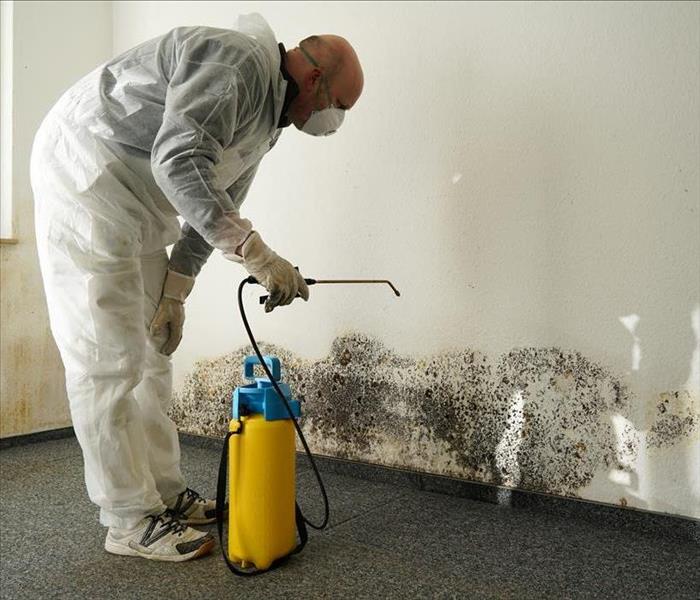 Mold Cleanup in Ogden, UT
Mold Cleanup in Ogden, UT
When you purchase a rental insurance policy, you likely believe it covers you for any personal property loss related to any disaster, but that is not true. Many policies have exclusions, and one popular exclusion is mold damage. However, many insurers will still permit some coverage for a mold remediation service in Ogden, Utah, if the mold is a result of other covered issues, like:
- Lightning or fire
- Hail or windstorm
- Vandalism
- Water damage from plumbing
The only surefire way to know if an insurer will cover mold issues is to talk with them directly. However, there are a few basics that might apply to your policy.
1. Storm Surges
Most rental insurance policies exclude storm surges. If you live in an area where external flooding is possible, consider purchasing additional insurance. A flood insurance policy will offer more protection for your personal property than typical rental policies.
2. Tenant Negligence
No insurance company will cover damages caused by your negligence. For example, leaving wet towels in a corner for weeks that result in mold growth and damage to your personal property is not covered. Furthermore, a landlord might also have grounds for a lawsuit to seek compensation for any structural damage.
3. Structural Damages
As a renter, you are not responsible for mold removal or damage if it stems from a property issue. A leaky pipe, roof damage, internal flooding, etc., are all the landlord's responsibility. However, while the landlord is responsible for structural damage and property upkeep, they are not responsible for damages to your personal property.
If you believe your personal property was affected by a landlord’s negligence, you might want to sue or demand compensation. Before you do so, it might be best to contact a local attorney to receive advice.
Rental insurance, especially standard policies, will not cover mold damage. You will probably need additional coverage for specific issues. You can always talk to your insurer to determine the best course of action and discover what you are covered for.
The Process of Becoming a Preferred Vendor
6/28/2021 (Permalink)
 SERVPRO is always there to provide the best service possible.
SERVPRO is always there to provide the best service possible.
Many homeowners in Ogden, Utah, rely on an insurance agent to recommend a preferred vendor when they need the services of water damage mitigation experts. To receive referrals from the corporate office, SERVPRO franchises must follow 21 different guidelines. This standard of excellence assures both insurance providers and their clients that they are getting the best professional service possible.
Claims Information Center
When providers look for preferred vendors, one of the factors they consider is usually the accuracy of job progress reporting. The SERVPRO Claims Information Center keeps track of every aspect of each job:
- Assessment of original damage.
- Ongoing updates of process.
- Estimated cost.
- Additional damage found during mitigation.
The CIC is instrumental in helping providers streamline the claims process so that they can better serve their clients. It helps maintain transparent communication between the technicians involved in the restoration and the company footing the bill. It also is an easy way to keep homeowners up to date on the progress being made.
Franchise Responsibilities
Carrying the name SERVPRO your franchise isn't enough to secure referrals from the corporate office. Each franchise must meet certain standards of excellence to qualify for the vendor program. For example, all technicians must undergo a background check and complete rigorous training by the IICRC to ensure their work is up to par. The franchise owner must also be insured to protect customers. Only franchises that have passed all 21 points of the validation guidelines are eligible to receive referrals for jobs that come through the call center.
Every insurance agent knows the importance of having reliable contacts in the damage mitigation and restoration industry. Each SERVPRO franchise should aspire to the standards set by the company to become a preferred vendor for insurance providers and their clients. Maintaining that level of excellence is a lot of work, but it pays off in the trust that it inspires in your reputation.
3 Types of Loss a Roof Can Sustain From Hail
6/22/2021 (Permalink)
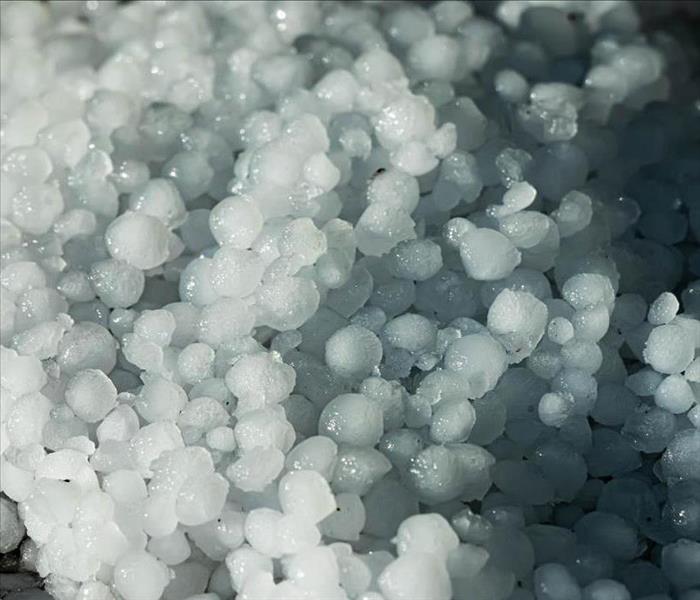 Hail can cause storm damage to your roof.
Hail can cause storm damage to your roof.
Everyone knows that a building can take quite a beating from relatively small hailstones (as small as one inch in diameter). The extent of the damage depends on several roof characteristics, including the roofing materials, the roof's age and quality of construction and the degree of the roof's slope. The amount of loss also depends on hail factors, including the size, density and shape of the hail and the velocity and angle at which it falls. Hail damage can be classified as functional (i.e., affects the roof's durability and life) or cosmetic (i.e., damage that doesn't affect the roof's functionality). Here are three types of functional loss that roof damage can cause.
Types of Loss a Damaged Roof Can Cause
1. Cracked Shingles
Hail can crack or shatter denser roofing materials, such as wood shake, concrete or clay immediately upon impact. Asphalt shingles are vulnerable to cracks, punctures, tears and displacement of granules.
2. Granule Displacement
Granule displacement is the most common type of damage to asphalt shingles. The impact of falling hailstones knocks off the granules. The granules protect the roof, so when they're knocked off, the underlying asphalt is exposed to sun rays which do even more damage due to UV light degradation. This can make the roof more susceptible to cracking, edge damage, blistering, algae formation and water leaks.
3. Water Leaks
Roof damage, such as cracks, missing or damaged shingles, can cause water leaks into the building from rain and melting snow. These leaks can cause various issues, such as wet insulation, which must be replaced. Also, water damage in the attic and mold growth wherever excess moisture lingers can occur. It's essential to thoroughly get rid of these problems, which requires an inspection by water damage restoration professionals.
When your Ogden, UT, commercial building sustains roof damage from a hail storm, immediate action is necessary to minimize additional loss. If you catch it early enough, you may only need shingle replacement.
What Is IICRC Certification?
6/22/2021 (Permalink)
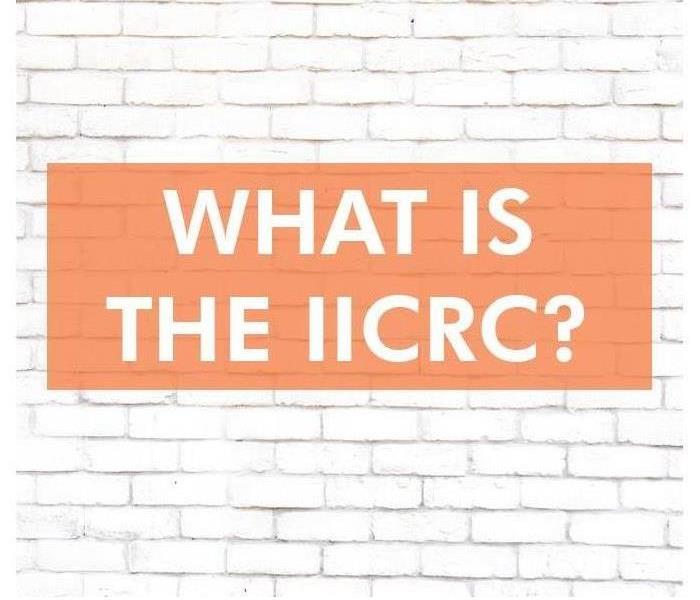 IICRC is a third-party certification agency for the restoration industry.
IICRC is a third-party certification agency for the restoration industry.
The Institute of Inspection Cleaning and Restoration Certification is a third-party certification agency for the restoration industry. The IICRC is a member and accredited standards developer for the American National Standards Institute and also develops and maintains BSR standards. Find out more about these standards and the certification process.
ANSI and BSR Standards
A number of standards fall under the purview of this organization. These standards cover most of the major types of restoration:
- ANSI S500 for Professional Water Damage Restoration
- ANSI S520 for Professional Mold Remediation
- BSR S700 for Professional Fire and Smoke Damage Restoration
There are many other standards pertaining to cleaning, maintaining, and restoring other types of materials. This certifying body develops and maintains these standards in cooperation with ANSI to establish best practices for the professional mitigation and restoration industry.
Employee and Franchise Certification
SERVPRO is an approved IICRC training school that offers training in certified cleaning and restoration methods, as well as a mitigation certificate. A wide range of certifications are available for specific contents and materials as well as different types of disaster cleanup and restoration:
- Applied Structural Drying Technician
- Carpet Cleaning Technician
- Fire and Smoke Restoration Technician
- Mold Removal Specialist
- Water Damage Restoration Technician
In order to be considered certified, a firm must employ at least one trained Technician. Franchise owners and employees can also participate in continuing education and e-learning programs. Cleaning and restoration technicians are required to earn 14 continuing education credit hours of approved instruction every four years. SERVPRO makes it possible for franchise owners and employees to earn and maintain this industry-leading certification.
IICRC certification makes it more likely that insurance company vendor networks will include a franchise or local company in Uintah, UT. For the best results, insurance representatives and homeowners should make sure that the mitigation and restoration service they plan to use holds this industry-leading certification.
How To Get Help After a Flood Without Flood Insurance
5/28/2021 (Permalink)
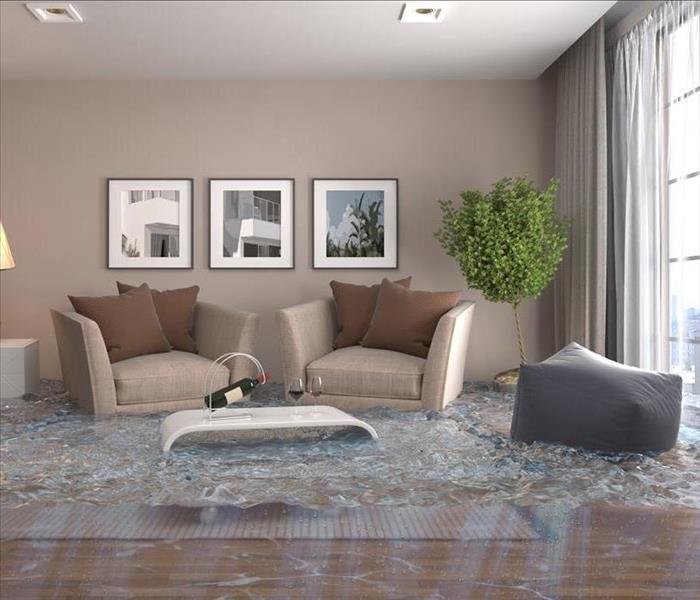 Flood damage
Flood damage
While some areas across the United States are in designated flood zones requiring flood insurance, not every location at risk of flooding has such requirements. When a homeowner experiences a flood in one of these locations, they can feel abandoned by their insurer and government, but depending on the severity of the flooding, you might have options.
If you are unsure of available disaster relief programs in your area, you can reach out to a restoration specialist in Ogden, UT, for guidance. They will likely point you to one of four potential organizations or programs.
4 Potential Organizations or Programs That Will Help After a Flood
1. FEMA Grants
The Federal Emergency Management Agency or FEMA is in charge of coordinating governmental response during natural disasters and more. If the flood you experienced was designated a disaster by the federal government, you might be eligible for grants. To learn more, reach out to a government representative and ask about the designation of your location.
2. SBA Loans
The Small Business Association does not only provide loans to business owners. During times of crisis, the SBA can and will provide loans to qualified applicants without flood insurance. The loans can only be used for your primary residence, and they can come with terms of up to 30 years.
3. Local Emergency Management Services
Every state, county, and local government has its own protocols for responding to disasters, including some programs to help people who need it most. While a local flood plane can be a precipice for a larger scale disaster, flood zones with minimal risks don’t often require preventative insurance. Your local emergency management department, however, might have planned for such emergencies or developed financial aid programs.
4. Nonprofit Organizations
During times of crisis, nonprofit organizations tend to step up to help. These services might offer shelter or one-on-one support to those who need it most.
Flood insurance is nice to have, and it can make the recovery process much easier. However, it is not your only option for finding help.
Important Benefits of the SERVPRO Electronic Claims Service
5/25/2021 (Permalink)
 Insurance coverage in Ogden, UT is very important and the SERVPRO electronic claims services can help.
Insurance coverage in Ogden, UT is very important and the SERVPRO electronic claims services can help.
Property damages from natural disasters, vandalism, and other sources happen in Ogden, UT, and all across the country. As agents and adjusters work to complete each insurance claim, an electronic claims service offers invaluable benefits, including:
- Speedier results
- Improved accuracy
- Consistency from one claim to another
Of course, the real value of the electronic system is only seen when it is used correctly.
More Than a Virtual Paper Record
Digital files are replacing paper in many industries, and there are many important benefits to this transfer, including reducing the required amount of space and cutting down on paper, ink, and related costs. However, the SERVPRO electronic claims system offers many more benefits. For example, when an insurance agent prepares to complete a claim, the agent can pull up pertinent information from the office or the damaged property. The claims service provides access to nationwide comparisons and damage specifics from local properties.
More Than a Digital Storage System
Agents, adjusters, and other damage restoration professionals can conveniently input data using smartphones, tablets, laptops, and desktop computers. The same devices can be used to pull information when it's needed. One of the most significant benefits of this service is that all of the professionals involved in resolving an insurance claim can receive updates and communications very quickly, reducing confusion and the potential for mistakes.
More Than a Locked Filing Cabinet
In the past, many records were kept in filing cabinets or even cardboard boxes. Although a bit of security may have been possible, these storage systems couldn't guarantee confidentiality. The digital electronic claims system offers high-quality digital security. In addition to providing safeguards that prevent unauthorized actions, the computerized system is backed up by corporate security teams who monitor who accesses files and how information is shared.
The full benefit of working with the SERVPRO system means understanding everything available for filing each insurance claim. Get work completed more quickly, improve communication, share information, and be sure to keep related information confidential. It's all possible with the electronic claims service.
4 Steps To Take After a Toilet Flood
5/25/2021 (Permalink)
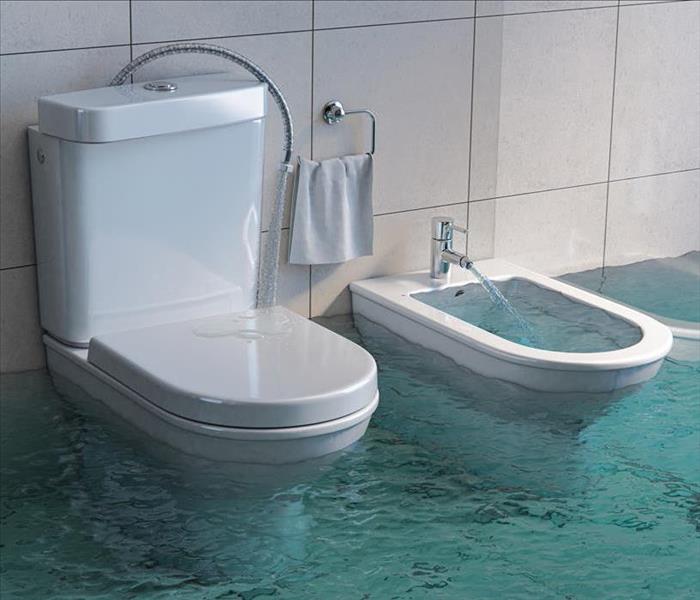 Toilet flood can lead to severe damage.
Toilet flood can lead to severe damage.
Toilet floods are one of the most common flooding issues businesses face. Toilet floods can be caused by a number of issues from sewer damage to clogs. Whatever the cause, it is important to know what steps to take when a problem occurs.
Steps for a Toilet Flood
1. Turn Off the Water Supply
Shutting off the water immediately will minimize the amount of water restoration that needs to be done. If you have just one flooded toilet, look for a shutoff valve near the toilet. If the problem is affecting more than one fixture, shut off the water at the main water shutoff valve.
2. Call a Plumber
Unless the cause of the flooding is something obvious, such as a toilet clogged by too much toilet paper, contact a plumber in Ogden, UT, to assess the problem. If you have sewer damage or other plumbing issues, it is important to get the problem fixed to prevent the flooding from occurring again. You may need to contact your sewage company if the problem is your sewer lines.
3. Remove Standing Water
Removing standing water promptly will reduce the amount of damage to your property. It will also help prevent potential future problems such as mold growth. If the standing water is clean water from an unused toilet, you can attempt to remove water with mops or a shop vac, but if you have widespread flooding, or the water is contaminated with urine or feces, contact a water remediation company.
4. Dry Out the Property
Once the standing water is gone, the area needs to be dried completely to reduce the chance of mold growth and other issues. You can speed up this process by using fans and opening windows and doors.
A toilet flood caused by sewer damage or some other plumbing issue can cause substantial damage to your property. Taking these four steps can help reduce the amount of damage and prevent future damage from occurring.
Contact SERVPRO for Water Damage Repair
4/30/2021 (Permalink)
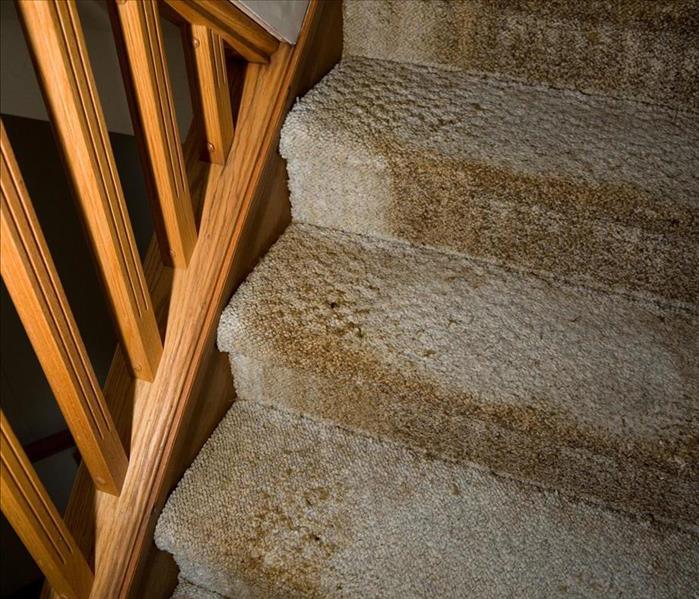 Prevent further damage and contact SERVPRO.
Prevent further damage and contact SERVPRO.
Many things could lead to water in home, but if you want the best results, there's only one way to respond. When you hire SERVPRO professionals at the first sign of trouble, you can expect quality results in a short amount of time.
Start Removing Water
Contacting Ogden, UT, professionals is just one of the things you can do to minimize damage when there's water in home. You should get started on several other steps as you wait for the pros to arrive:
- Shut off power to your home.
- Turn off water at the water main or at the source of the flood.
- Remove water as quickly as possible with towels, mops, and wet/dry vacuums.
- Begin drying off furnishings and moving them to dry locations.
- Open windows and install fans to provide ventilation.
- Send clothing, curtains, and other fabrics for dry cleaning services.
- Separate items to be thrown out and those that can be repaired.
- Turn memorabilia over to experts who know how to prevent lasting water damage.
It's also a good idea to contact your insurance provider for more information about avoiding damage and to understand your coverage.
Save Documents, Artwork, and Other Valuables
If you have valuables, ask SERVPRO technicians whether those items can be repaired. Important documents, paintings, beautiful rugs, and other important items can be treated with care to avoid further damage.
Ensure Complete Disinfection
Remember that floodwater isn't clean. SERVPRO water damage cleanup and repair professionals will thoroughly disinfect your home, the furnishings, and many of your belongings. This step is vital in preventing lasting damage, mold growth, and unpleasant odors. If your home isn't disinfected properly, it could become attractive to pests.
SERVPRO Is Faster to Any Size Disaster
A quick response is essential to avoiding serious damage from having water in home. As soon as you notice signs of water or a broken pipe, take steps to prevent further damage to your Ogden, UT, home.
Mitigation and Restoration of a Commercial Roof Leak: The Three-Step Process
4/15/2021 (Permalink)
 Commercial roof damage can be devastating.
Commercial roof damage can be devastating.
Commercial roofs require a lot of upkeep. When properly maintained they can last 25 to 30 years, but there is no telling when damage can occur. Overwhelming storms can compromise a business's roof, sometimes causing a roof leak. When this occurs, it is normal to call a mitigation service in Ogden, UT, for assistance. Most of these services will attempt to repair the leak with a three-step process.
1. Assessment and Elimination of Damaged Materials
The first task of any mitigation service arriving on the scene is to assess the property. They walk around the perimeter and also the roof of the building to find where the leak is coming from. They may look on the inside first, removing any ceiling tiles to find the direction and the source of the leak.
In their search, the mitigation crew removes all damaged materials. The materials can include ceiling tiles, insulation, electrical, sheeting, or missing shingles. All the materials removed from a building can make owners uncomfortable, but it's all for the benefit and restoration of the business.
2. Drying and Disinfection of the Affected Area
A roof leak can lead to many problems, especially mold. If not corrected soon enough—within 24 to 48 hours—a leak can result in mold growth. As water seeps through the ceiling, it gathers bacteria and other harmful compounds, meaning disinfection is paramount.
Beyond sanitizing the sight, the mitigation service dries all surrounding areas, ensuring moisture levels are within normal ranges. By controlling the moisture content, the crew can help reduce the likelihood of a mold infestation.
3. Restoration of the Damaged Roof
With damaged materials removed and the structure dry, the mitigation company can begin restoration work. This step includes cosmetic finishes, helping the site look as it did pre-damage.
When a roof leak occurs, calling a professional is the best option. A team reduces the likelihood of more extensive damage.
Preventing Water Damage
3/29/2021 (Permalink)
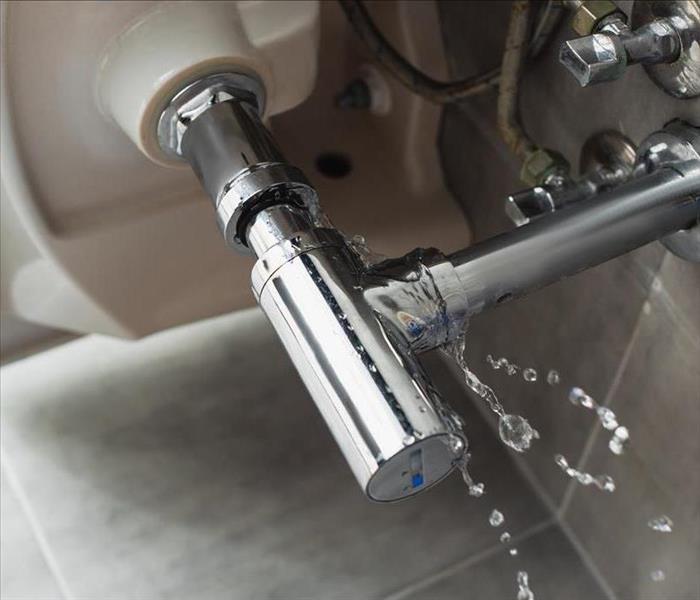 Schedule a biannual inspection to prevent water damage.
Schedule a biannual inspection to prevent water damage.
Most homeowners think of water in home as that coming from taps or faucets. The idea of floods or broken sewer and water lines are typically the last things any homeowner wants to think about because it can lead to stress. However, as any water mitigation specialist in Ogden, UT, can attest, there are at least five ways to prevent residential water damage.
5 Ways to Prevent Water Damage
1. Maintain Appliances
While the break of a supply line can lead to a pipe cleanup, many home water issues stem from failing appliances, like washers or water heaters. All equipment in your house needs to follow a strict maintenance schedule. By creating and following such a schedule, you can resolve most problems before they cause significant and costly damage.
2. Clean Downspouts and Gutters
One of the leading causes of water in home is a clogged or backed-up downspout or gutter. If you do not clean the gutters and downspouts, the rainwater has no place to go except back up under the sheathing of your roof, leading to leaks and rot.
3. Install Water Detection and Flood Prevention Devices
It can be challenging to find a broken pipe because most sit behind walls or within ceilings. By installing water detection and flood prevention devices, you can receive alerts to excess water in the home, allowing you to address the matter quickly.
4. Maintain Trees and Plants
Roots can cause a lot of damage to sewer lines. Ensuring that all trees, shrubs, and plants are well-groomed and maintained, you can save yourself from the expense of sewer collapse or failure.
5. Schedule Annual and Biannual Inspections
The key to water damage prevention is annual or biannual inspections of all vital systems, including your roof. Routine assessments mean you can catch problems before they become significant expenses or lead to extensive damages.
Finding water in home is a nightmare scenario for most homeowners. Do yourself a favor and heed the above advice to reduce your water damage risks.
Understanding the Mold Remediation Process
3/19/2021 (Permalink)
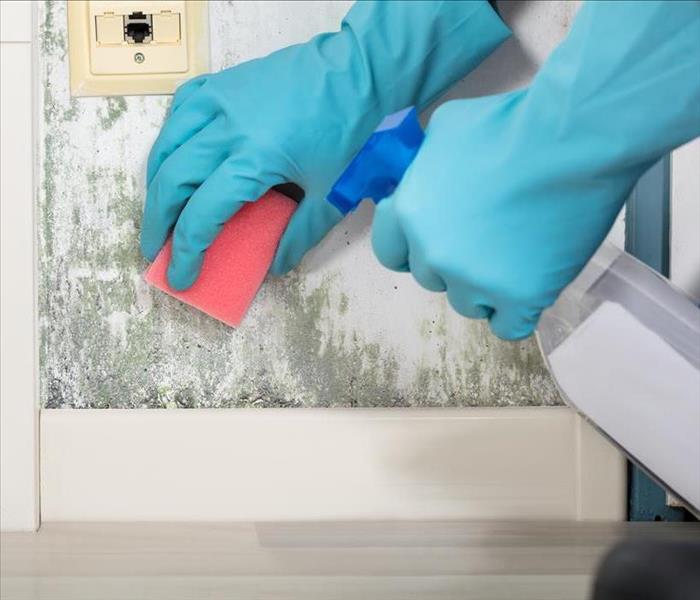 Mold can cause severe damage to your property.
Mold can cause severe damage to your property.
People get used to smelling old, musty basements, but should they? While some odors relate to older unwashed items, mustiness is often the result of dampness, which can lead to regular or black mold. Reading musty and mold in the same sentence is often enough to unnerve some homeowners, but with the help of a mold remediation specialist in Ogden, UT, there is a quick solution to your potential problem: the remediation process, which typically involves three steps.
3 Steps for Mold Remediation
1. Testing and Quarantine
The remediation team you hire will probably test the mold before proceeding with removal. They will take samples of the infestation to identify the species. Through identification, the team learns about the necessary precautions to take during the removal phase.
Depending on the species of mold, the team might need to seal off or quarantine the affected part of the home, which is often the case with toxic black mold. They will do this using plastic sheeting and tape, masking over vents, doors, and most windows. They might also use air movers to maintain ventilation.
2. Removal
Once identified, the team will begin removing the mold species. Depending on the level of the infestation, they might need to remove sections of the wall, ceiling, or floor to get to the root of the growth. Mold tends to root deep into porous materials, including insulation.
Many homeowners find this part of the process overwhelming because large areas of the house might get stripped bare to expose and remove the problem. While intimidating, there is nothing to fear when using a qualified remediation and restoration team.
3. Restoration
With all evidence of mold removed and the mold cleanup complete, the remediation and restoration team will inspect the area and design a restoration plan. By the time the team finishes, you will never know they were even there. The goal of any restoration expert is to make a home look like it did before the disaster.
Mold, whether black mold or common, can cause tremendous property damage. The sooner you can start the remediation process the better.
Damage To Expect After a Partial Fire Loss
3/16/2021 (Permalink)
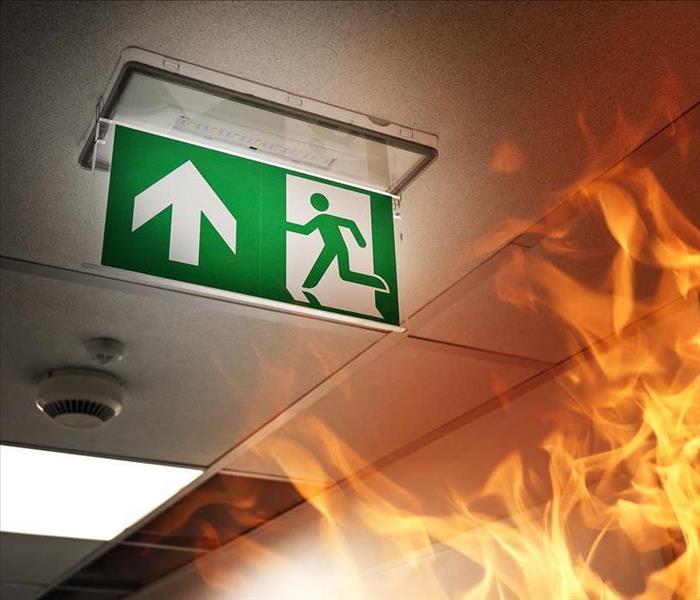 Prepare your business for fire damage
Prepare your business for fire damage
A business fire is devastating and the process for recovery can take some time, depending on the level of damage. A commercial fire loss can take on many forms, which can surprise some business owners who assume fire damage only deals with flames and heat. However, talk to any fire restoration specialist in Ogden, UT, and they will tell you to expect at least three types of damage even after a partial loss.
3 Types of Damage to Expect After a Partial Fire Loss
1. Soot and Smoke Damage
Most business owners will expect to find soot and damage, a natural product of fire. The extent of the damage depends on the volatility of the fire. For extensive fires, the smoke and soot damage can affect equipment like HVAC units and other small appliances. All equipment should be cleaned to ensure no toxic remnants remain in the facility.
2. Water Damage
One element of fire loss that many business owners do not expect is water loss. Between the established fire suppression systems and the hoses, a fire will often result in a tremendous amount of water damage, especially when dealing with a significant blaze. A business owner should try to mitigate further loss from water damage by hiring a mitigation service to remove and dry out the facility.
3. Mold Damage
Depending on how long water is left to sit in a facility, mold can develop. Most mold infestation can occur within 48 hours of moisture damage. If you cannot get a mitigation and restoration service for an assessment within the two-day window, it is wise to request a mold inspection to be on the safe side.
A partial fire loss requires a significant amount of work to rebuild from, but it is likely possible. However, a business owner should prepare for the various types of damage a company is likely to find in the process. The key to any disaster recovery is to get a professional out to the site ASAP.
Mistakes To Avoid After a Flood
2/24/2021 (Permalink)
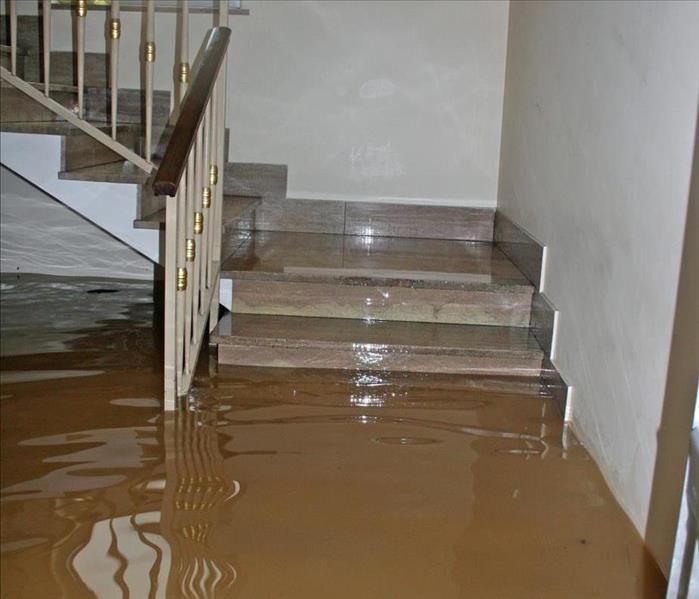 Flood water in a home after a storm.
Flood water in a home after a storm.
Having flood water in your home in Ogden, UT, after a storm can be heartbreaking. It makes sense that you would want to get the problem resolved and get your home back to normal as soon as possible. To do that, though, your gut instinct to rush the process or handle it all yourself may have to take a back seat to better advice. Here are a couple of things you want to avoid when your home is flooded.
2 Things to Avoid After a Flood
1. Handling Remediation Yourself
When you look at your flooded home, you are likely to see many things that need to be done. Rather than marching into the standing water yourself, , though, find storm restoration experts you can trust to handle the remediation. Hiring professionals to take care of your flooding problem has several benefits:
- They already have the appropriate PPE to wear to avoid injury.
- They have the necessary equipment to get rid of flood water efficiently.
- They can repair water damage and rebuild the affected areas.
- They can take measures to treat or prevent secondary damage from mold and mildew.
- They can provide an official assessment to corroborate your insurance claim.
2. Failing To Notify Your Insurance and Mortgage Companies
Your home is important to you, but you're not the only one who has a vested interest in its well-being. Your insurance company needs to know about any damage that is covered under your policy so that it can send an adjuster out and start processing your claim. Your mortgage company expects payment but may waive late fees or extend due dates if you let a representative know that the home has been severely damaged. Neither of these companies can work with you, however, if you don't keep them informed.
You are responsible for your home, but you don't have to always carry that whole burden by yourself. If a storm leaves it filled with flood water, there are many people you can call on for help.
Decorative Alternatives That Are Safer Than Candles
2/23/2021 (Permalink)
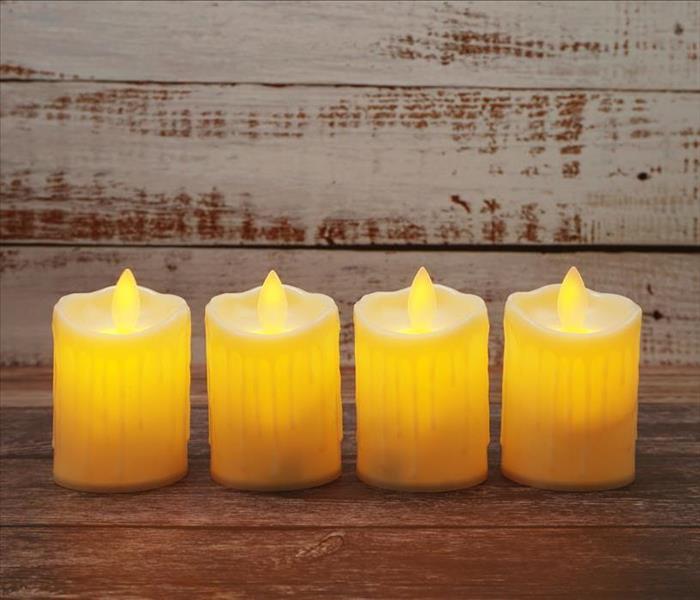 Candle alternatives can keep your home safe from fire damage.
Candle alternatives can keep your home safe from fire damage.
There is nothing quite like the look, smell and feel of the flame from a candle, but they can be dangerous. There is nothing worse than having to involve insurance companies and a smoke and fire cleaning company to repair the smoke and fire damage from a candle fire. Fortunately, you can alleviate all of the safety concerns by using one of the many alternatives available in Ogden, UT.
Candles Are Dangerous
Candles are inherently dangerous because of their flames. They can easily be:
- Knocked over by kids, pets or partygoers
- Placed near something flammable
- Burned too low
- Forgotten about
An easy way to avoid the dangers of candles is to purchase candle alternatives.
3 Candle Alternatives
1. Flameless Candles
Flameless candles look and feel just like regular candles. They even flicker like candlelight. These simple devices operate off double or triple A batteries and provide similar lighting conditions. Since these battery-operated candles do not generate heat, they are safe around pets, kids and partygoers.
2. Electric Candles
Like batter operated candles, electric candles produce the same look and ambiance as a real candle. These candles plug in instead of working off batteries. They are a bit less versatile because of the plugs but work off the same principle. These are great candle alternatives if you want the look of regular candles.
3. Candle Warmers
Candle warmers are useful when you want the scent of a candle but not the danger of a scented candle. These lamps are a flameless solution for all those who love the myriad of scents that candle makers have created but don't want to deal with the fire. The heated light sits above the scented candle. It melts the wax and releases the scent into the room.
No matter which of these candle alternatives you choose, they are much safer than having an open flame around. These alternatives are available in almost every department store or grocery. Keep yourself and your property safe by using a flameless alternative.
Common Commercial Water Damage Problems
2/11/2021 (Permalink)
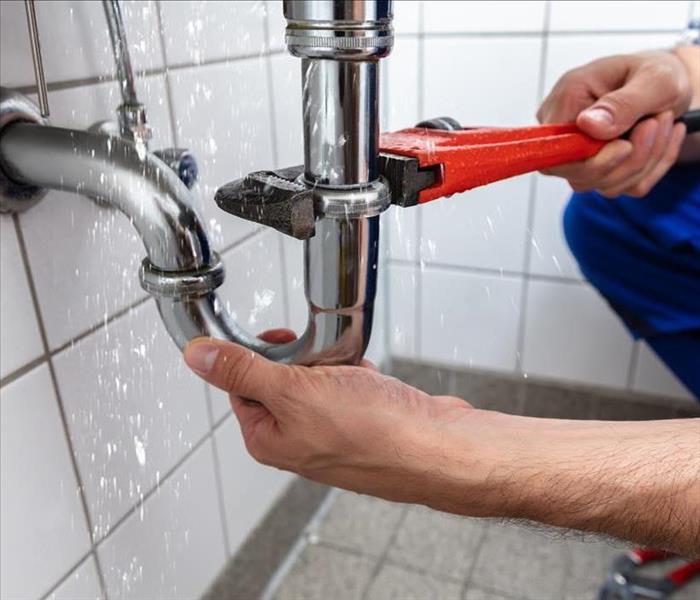 Leaky pipes and damaged plumbing can lead to water damage problems.
Leaky pipes and damaged plumbing can lead to water damage problems.
When you think of common commercial water damage risks, you may be envisioning a leak from a broken pipe or flood damage from a storm. However, there are several common water damage risks faced by commercial building owners. These are three of the most common.
3 Most Common Commercial Water Damage Problems
1. Roof Leaks
Leaking roofs are a common source of damage that requires water repair. In addition to the damage caused directly by water entering your building, the excess moisture can lead to mildew or mold growth, electrical fires and structural damage. To avoid additional damage, it is important to make repairs to your roof and dry out wet areas promptly. It may be helpful to contact a water mitigation company in Ogden, UT, to assist you.
2. Damaged Plumbing
A broken pipe can be caused by deteriorated water supply lines, pressure changes, cold weather and other issues. Because pipes are usually hidden from sight and may not be easily accessible, leaky pipes can be difficult to detect. If you see bulging walls, cracked or loose tiles, water stains on walls or floors, unexplained flooding or notice a musty smell, these can be signs of a leaky pipe. Additionally, you may notice unusual increases in water usage or the size of your water bill.
3. Sprinkler System Leaks
Sprinkler systems are an invaluable tool for mitigating fire damage but can develop leaks over time, particularly if they are not maintained regularly. Standing water, wet carpets or walls and mold or mildew growth may be signs of a sprinkler leak. To prevent this problem, have your sprinkler system regularly inspected and maintained.
Whether you are dealing with a leak from a broken pipe or a hole in your roof, it is important to promptly address any water damage issues, before they get worse. Regular inspection and maintenance can help you detect and avoid many common commercial water damage problems.
Easy Steps to Using a Fire Extinguisher
2/10/2021 (Permalink)
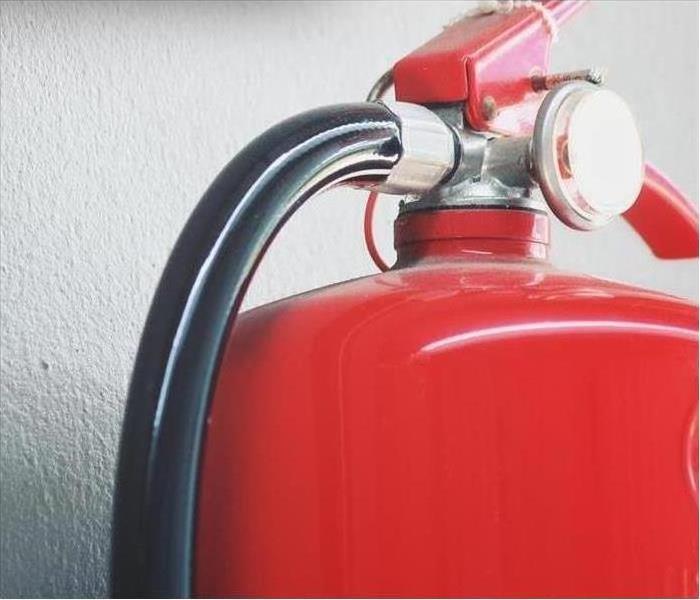 Having a fire extinguisher in your Ogden ,UT property can help in a small fire.
Having a fire extinguisher in your Ogden ,UT property can help in a small fire.
You’ve heard throughout your life that in case of a fire, you should call 911 and get away from danger. While this is sound advice, there are things you can do at the outset of the fire to keep it from spreading and threatening your Ogden ,UT, office. In small fires, a fire extinguisher can be your most important tool to keep the incident from getting out of hand.
Why Use a Fire Extinguisher
You see extinguishers in buildings everywhere you go, but what makes them such effective tools to help prevent major fire damage?
- They can act quickly and effectively against a wide range of fires in many places.
- Anyone can learn how to use them properly.
- If you use them properly, they can keep a small fire from getting out of control and causing extensive damage or even bodily harm or death.
The Correct Method
If you spot a kitchen fire in your office break room, or if there is a fire in any other part of your building, you need to act without hesitation. When you use the fire extinguisher appropriately, you can have confidence that you can put out the fire without much difficulty. Experts teach that you should use the PASS method: Pull, Aim, Squeeze, Sweep
Pull
Your first job is to take the extinguisher and pull the pin out of the handle at the top of the device. This will break the seal and allow you to spray the chemical.
Aim
Take the hose in one hand while holding the extinguisher by the handle in the other. Next, aim the hose low at the base of the fire.
Squeeze
Squeeze the handle firmly. This will release the extinguishing chemical.
Sweep
In a fluid motion, sweep the hose from side to side at the bottom of the fire. Do this until the fire is completely out.
If you follow these steps, you can put out small fires with a fire extinguisher. Study and practice this method in your workplace.
1, 2, 3 Get Rid of Crawlspace Flooding
1/28/2021 (Permalink)
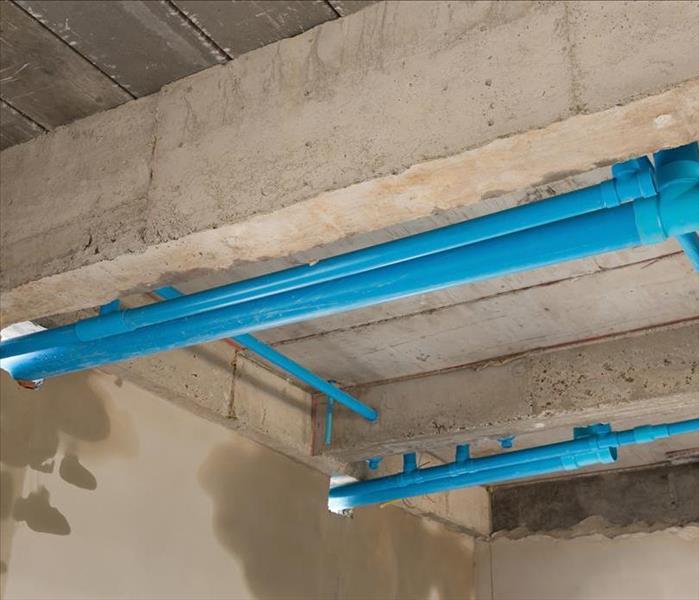 Whether a storm or broken pipe leads to crawlspace flooding, you need to respond immediately.
Whether a storm or broken pipe leads to crawlspace flooding, you need to respond immediately.
When water gets into your crawlspace, there's more at risk than extra moisture and a muddy surface. That standing water can weaken the foundation of the home, encourage the growth of mold and mildew, and attract insects and animals. There are three steps to take when you notice water under the home:
- Identify where the water is coming from
- Remove the water and dry the crawlspace
- Contact professionals
Remember that a wet crawlspace can lead to many expensive issues, so you need to work quickly and thoroughly.
3 Steps to Get Rid of Water in Your Crawlspace
1. Sources of Crawlspace Water
Unless outside flooding has caused the crawlspace to fill up with water, you should look for possible causes including weakness and cracks in the foundation, too much slope toward the home, damaged gutters, or cracks in your water line. Identify the problem quickly, so you can slow down or completely stop the water from rising.
2. Water Removal Methods
There are multiple methods of removing a large amount of water from the crawlspace, and most methods require the use of specialized equipment, such as a sump pump (that handles water) or a trash pump (that pumps water and solid debris) to remove water quickly and then use pumps, vacuums, fans, and dehumidifiers to continue drying the area. If you don't have pumps, contact water damage cleanup and repair professionals.
3. Water Damage Professionals
Although it is possible to evacuate water by hand, it is very difficult to be sure that you've thoroughly dried all of the wood, soil, and other materials under your home. The remaining moisture could lead to secondary problems, such as mold growth. Cleanup and restoration professionals can sanitize the area, address any remaining damage, and take preventative measures. It's also a good idea to call your insurance provider to find out what your policy covers.
Whether a storm or broken pipe leads to crawlspace flooding, you need to respond immediately. If you don't have the right equipment on hand, call Ogden, UT professionals to get started right away.
Protection During Mold Remediation
1/25/2021 (Permalink)
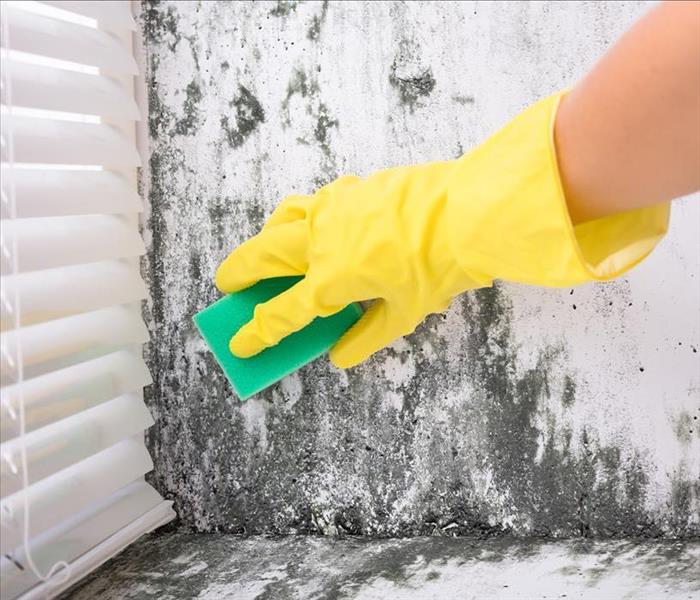 Use protection during mold cleanup
Use protection during mold cleanup
A musty odor in your home in Ogden, UT, may indicate that you have a mold problem. Before you grab your spray bottle and attack the patch with vigor, however, it's important to know the appropriate personal protective equipment you need to wear. Proper PPE goes beyond just wearing face masks. Follow these tips so that you know you're protected.
Use Proper Protection During Mold Remediation
Small Mold Growth
A relatively small patch of mold damage on your counter or a contained growth in the grout in your shower may be something you can handle yourself. Before you start any cleaning, however, you need to don the right gear:
- N95 face mask
- Rubber gloves
- Goggles
These items protect your eyes, nose, mouth and hands from any spores that you stir up during the cleanup process. Even if you have to upgrade your gloves because you decide to use a harsher chemical to clean, you should always take measures to ensure that you are working safely.
Large Mold Growth
If the mold growth takes up a whole wall or you smell the odor more strongly when the air conditioner comes on, indicating that it's inside the ducts, you must rely on mold remediation specialists to handle the cleanup job. The technicians are not only careful to wear face masks and other appropriate PPE throughout the mitigation process but also may put on protective coveralls. In addition to safeguarding themselves, they protect the rest of your house from additional fungal spread. The mitigation team starts by sealing off the affected area to prevent spores from traveling throughout the rest of the house. This protects your HVAC system and other vulnerable spaces.
Whether your mold problem is large or small, no mitigation should begin until you or the technicians whom you hire are wearing the appropriate gear. Face masks, gloves and goggles are the minimum requirements for proper protection.
5 Steps To Take Immediately After a Pipe Breaks
1/19/2021 (Permalink)
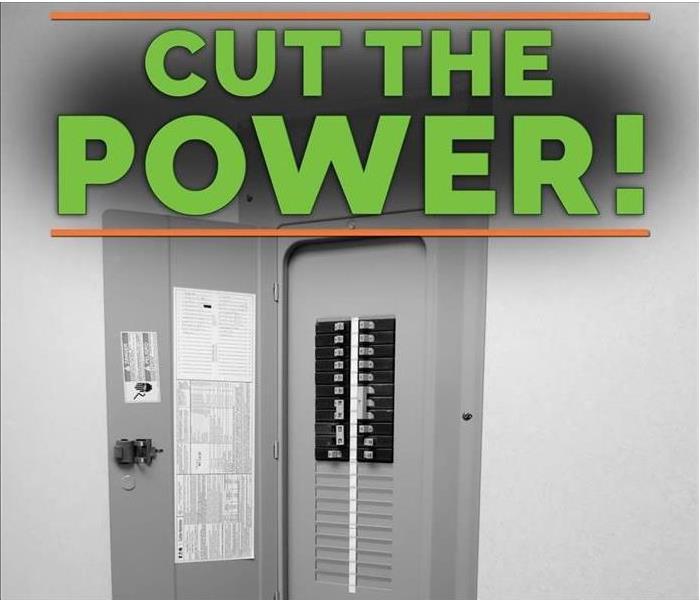 Cut off the electricity after a pipe breaks
Cut off the electricity after a pipe breaks
Winter storms can cause havoc outside your home with the buildup of snow, howling winds, and never-ending rain, but sometimes the unexpected occurs, and a storm causes your home’s pipes to freeze and break. When the temperatures fall to a record low, and you find yourself with bursting pipes, here are five steps to take as soon as you find the problem.
Five Steps to Take After a Pipe Burst
- Turn off the water.
To prevent additional water damage, make sure you turn off the water at the nearest valve. This may also eliminate the chance of any other weakened pipes breaking during the repair.
- Cut off the electricity.
Active electricity in an area with standing water is rarely a good thing. So, turn the breaker off that supplies electricity to the area to make sure everyone working to fix the broken pipe is safe.
- Contact your insurance company.
Letting your insurance company know about the bursting pipes and water problem can start the claim process. The insurance company can then send someone to view the damage.
- Call a remediation service.
Calling in water remediation service technicians to check the situation and help you clean and disinfect the area is a good idea. Removing the standing water as soon as possible helps stop the growth of mold and any possible secondary damage.
- Document the scene.
Using your phone or a camera, take photos of the area before, during and after the water removal process. You may also want to list each item that needs to be repaired or that is discarded.
The winter storms can be brutal as they batter Ogden, UT, with their frozen tendrils. When you find a storm has caused bursting pipes in your home, take the five steps above to help rectify the situation as quickly as possible. Don’t forget to ask the technicians for ideas about preventing future pipe damage.
How To Secure Your Business After a Wildfire
1/19/2021 (Permalink)
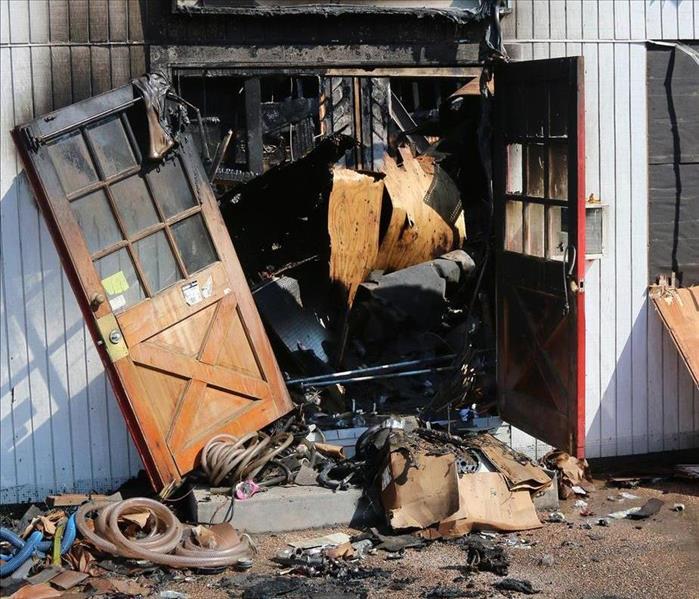 Protect your building after a fire with this simple steps.
Protect your building after a fire with this simple steps.
Wildfires cause more than just the destruction of forests and homes. It easily overtakes businesses as well. The first thing that most people do when they suffer fire damage is to call their insurance company, but many policies will only cover your business if you secure your business after a fire. Although it is not difficult, it is something that is extremely important.
4 Steps To Secure Your Business After a Wildfire
1. What You Will Need
To keep your property safe from further damage and looting, you may need to purchase:
- Tarps
- Boards
- Hammer or screwdriver
- Nails or screws
- Sandbags
These are only a few of the things that you might need.
2. Assess the Damage
One of the first things you need to do is take a close look at the smoke and fire damage. You do this by walking through your business once it has been declared safe. Make a list of the things that will need to be removed, covered or boarded-up. You should also make a list of the things that you need to replace at the same time.
3. Begin the Cleanup
At this point, you can begin the fire cleanup, or you can call a fire remediation company that works with your insurance in your Ogden, UT. This way, your insurance company can help offset the cost of keeping your commercial interests safe, and you can back to rebuilding your business.
Keep Things Safe
After assessing the damage, remove all of the undamaged inventory. You can then keep things safe by boarding up openings and tarping areas of the roof damaged by the fire. This keeps things safe from the elements and potential looters. This can also keep you safe from lawsuits if someone should enter the building and hurt themselves.
Smoke and fire damage is extremely difficult to clean up. Fire destroys, and smoke permeates almost everything, but that is not the end. By protecting your remaining business assets, you can get back to work as quickly as possible.
Choosing the Right Smoke Detector for Your Home
12/28/2020 (Permalink)
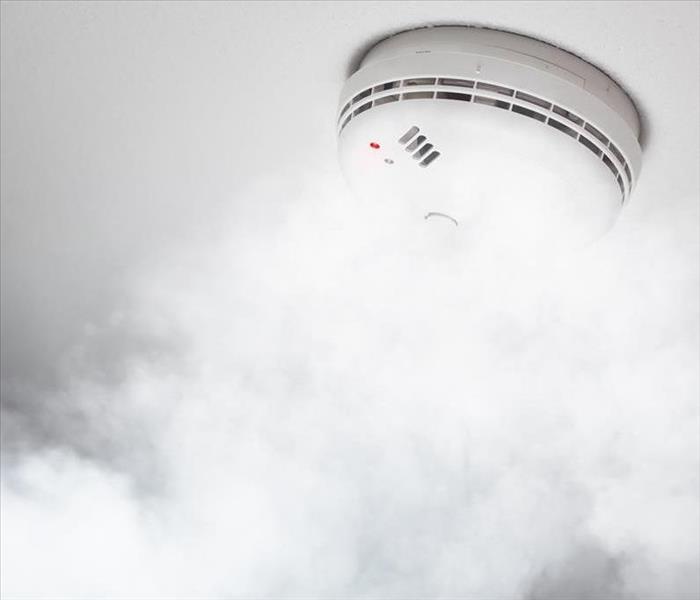 Having a smoke alarm in your home, can reduce the damage of a fire.
Having a smoke alarm in your home, can reduce the damage of a fire.
A house fire can be devastating to you and your family. It can rapidly destroy everything in your home. Having the right smoke alarm can save your life. Unfortunately, with so many types on the market, it can be difficult to choose the perfect one for you and your home. Here are a few things that you need to consider before purchasing one.
3 Things To Consider Before Purchasing a Smoke Detector
1. Types of Smoke Detector
Like anything, there are multiple types of fire alarms. Each type detects smoke in different ways. The types are:
- Air-sampling
- Photoelectric
- Ionization
- Dual sensor
Each works in a different way. For example, an ionization smoke detector uses small amounts of radioactive particles to sense smoke in the air around it. A photoelectric alarm uses light to detect smoke and a dual-sensor alarm does both.
2. The Size of Your House
This is one time that size matters. You have to take into account the size of your home for fire safety. It will not only determine the amount of smoke alarms you need to install, it will also tell you where to place them.
The best solution is to have a smoke alarm in each room but this is not always practical. At the very minimum, a smoke alarm should be installed in each room that a fire is more likely to start. Remember faulty wiring, accidental fires and electrical storms can also cause fires so kitchens are not the only places you need to protect.
3. How It Is Powered
Some fire detection devices are powered by batteries while others are wired into your home electrical system. Although it is more expensive to have it hardwired in, it is a good idea if you are bad at changing batteries. When a battery gets low your smoke detector may not work.
Although a smoke alarm may not save your home, it can save your life. It can also reduce the damage and the overall cost of fire damage. If your home is damaged by fire call a fire damage remediation company in Ogden, UT.
The Benefits of a Claims Inventory Service
12/22/2020 (Permalink)
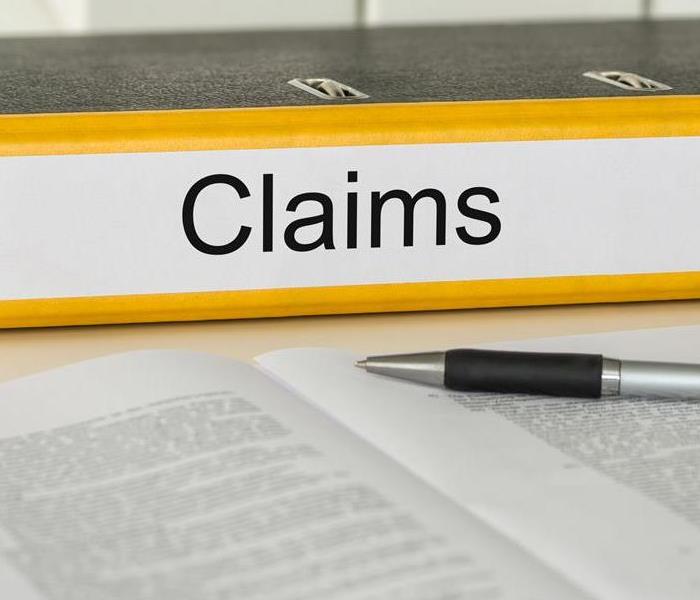 A claims inventory service can be beneficial.
A claims inventory service can be beneficial.
When a commercial client's property in Ogden, UT, is damaged, maintaining an up-to-date insurance claim is vital to serving the client well. One thing that you should look for when seeking preferred vendors is a claims inventory service. This system allows both you and your client to track the progress of the restoration throughout the whole cleanup process and understand the costs involved.
3 Benefits of a Claims Inventory Service
Assessment
As soon as SERVPRO technicians assess the damage to the building, they update your client's account in the Claims Information Center with key pieces of data:
- Type of damage
- Extent of problem
- Projected cost of repair
This fast response allows you to start processing the claim immediately. Once the adjuster visits the building and corroborates the claim, you have easy access through a simple login to verify that his or her report matches what the damage mitigation experts plan to do.
Updates
Sometimes during the remediation process, technicians run into problems that they didn't see before. Secondary damage may also have occurred since the initial report. Whatever the reason for the update to the insurance claim, the CIC allows you and your client to track changes as they are discovered.
Final Bill
With traditional filing methods, the insurance agent assigned to your client's case has to wait for the property owner to receive the final bill from the mitigation company and submit it with his or her claims paperwork. The benefit of claims inventory services is that all this information is already available to the building owner and the insurance company online. There is no more cause for delay in getting the information you need to process the final claim.
With all the technology available to businesses today, it just makes sense to choose a mitigation company that uses claims inventory services as a preferred vendor. Efficient reporting helps you finalize and process an insurance claim with unprecedented ease.
Preventing Water Damage During Construction
12/15/2020 (Permalink)
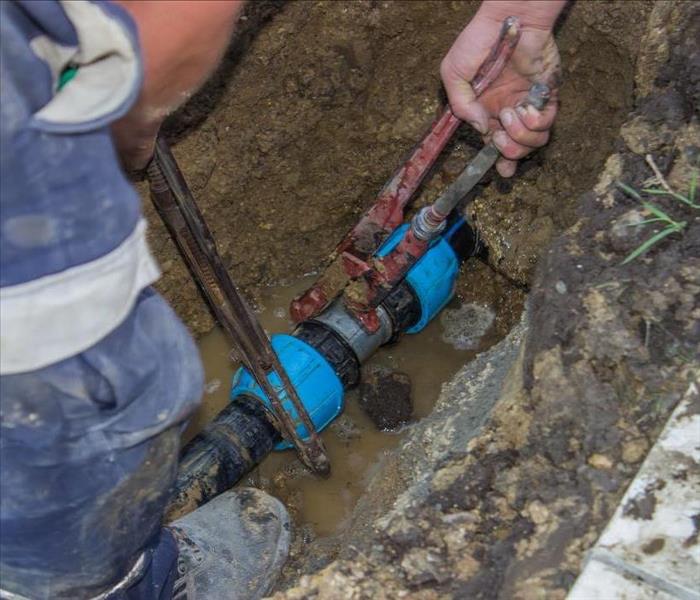 Prevent water damage during a construction.
Prevent water damage during a construction.
Business owners may not think of water damage as a concern during the construction phase of a facility. Unfortunately, the construction of a building is when most problems will occur with critical systems because it involves the real-world execution of blueprints and plans that until that point were only conceptual. Therefore, it is the precise time to worry about system design and water pipe repair. You might even want a restoration company in Ogden, UT, on standby for consultations and property assessments. However, beyond seeking advice from professional services, consider implementing three jobs or actions during the preconstruction phase.
3 Steps to Take During The Preconstruction Phase
1. Create Oversight
A broken pipe during construction is often the result of a lack of oversight. Workers focus on the blueprints or using their materials, but no one double and triple checks the connections and materials. Sometimes, a significant problem results from keeping your head down and not digging into the details. Create an oversight manager or committee to make sure that no little issues turn into significant delays.
2. Schedule Early Testing and Inspection
Too many projects focus on inspections and testing at the last minute. Instead of waiting for a water pipe repair, focus on early pressure tests and assessments. Give your team time to resolve issues without interrupting progress. While excitement and rushing are understandable, plowing through a project can lead to setbacks and delays if things fail or do not go according to plan.
3. Install Backup Power and Pumping Systems
Another must-have on the construction site is backup power and pumping systems. Many water problems arise from the weather and not plumbing. Ensuring your site can remain active during a storm prevents dealing with flooded footings and muddy grounds.
If you want to ensure that your construction project moves forward without costly problems, like a water pipe repair, then instill the above jobs and use the suggested materials.
Common Consequences of Water Damage
11/25/2020 (Permalink)
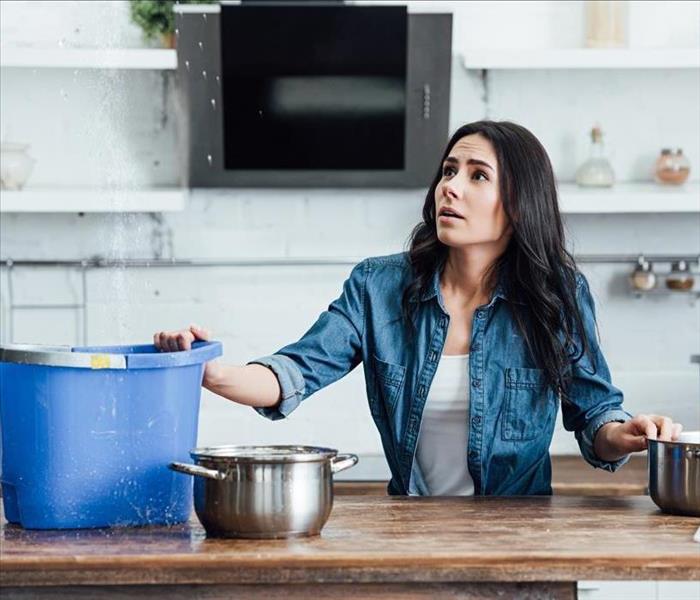 Water damage on kitchen ceiling.
Water damage on kitchen ceiling.
When people think of water, it is often in regards to sandy beaches or long, relaxing soaks in the tub. Hardly any homeowner thinks about water damage unless they actually experience it first-hand.
However, when a homeowner experiences such damage or threat of it, they likely fear the worst. Thankfully, water problems vary in the degree of challenges, and while there are significant and costly issues that may arise, the three most likely are as follow:
- Wallboard and ceiling tiles
- Flooring
- Cabinets and furniture
3 Common Consequences of Water Damage
1. Wallboard and Ceiling Tiles
Many people realize they need a plumbing repair because they find staining on wallboards or ceilings tiles. The staining is an indicator of where the problem is, but it doesn't always mean there is a significant problem. Sometimes, a large stain can stem from a small leak, meaning repairs are minor.
2. Flooring
Pipes also run under your flooring, which can lead to significant problems in the event of a pipe break. However, even water damage stemming from a sink leak can lead to issues with your flooring. While water may cause irreversible damage to laminate and other flooring types, hardwoods can often be sanded down and refinished. However, you will need to inspect the subfloor, and you might want to hire a mitigation service in Ogden, UT, for such an inspection.
3. Cabinets and Furniture
A supply line break can also damage cabinets and furniture, depending on its location. The quality of the furniture and cabinetry will also play a role in the salvageability of the materials. If made from hardy woods and materials, the pieces can likely be restored, but if the furniture or cabinets use particleboard and MDF, the damage is likely permanent.
As a homeowner, it is vital to familiarize yourself with common water damage issues. Knowing about the possible problems can help you in your preparation and home management.
How To Respond to Shower Mold
11/18/2020 (Permalink)
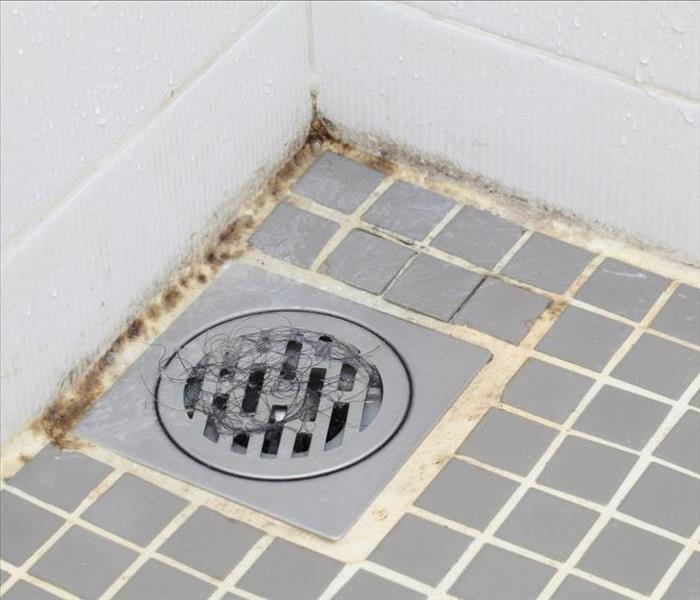 Bathroom mold growth is common because of the constant use of water and high levels of humidity.
Bathroom mold growth is common because of the constant use of water and high levels of humidity.
Your bathroom provides an ideal environment for black mold because of the constant use of water and the high levels of humidity. The good news is that you can clean up some of that unsightly shower mold between visits from Ogden, UT, mold remediation professionals. Before you get started, remember a few vital tips:
Vital Tips to Clean Up Unsightly Shower Mold
- Never mix bleach, vinegar, and other cleaning products.
- When you treat the surface mold, hidden growth is still present behind the tiles where you can't reach.
It's good to conduct surface cleaning regularly, but it's still necessary to have professionals visit to get rid of mold hidden by the shower walls, the ceiling, and the floor.
Use a Homemade Solution
You can use undiluted vinegar in a spray bottle. Full-strength vinegar is the most effective, and you don't need to wipe the vinegar away. Within an hour or two, you shouldn't be bothered by vinegar smell anymore. Alternatively, you could mix 1 cup of Borax or bleach with a gallon of water and put this mixture in your spray bottle. The Borax spray doesn't need to be rinsed off, but the bleach spray must be rinsed away. Remember that bleach releases toxic fumes.
Wipe and Scrub Affected Surfaces
It's important that you get the right amount of spray on the shower mold, so that there's an even coating, but not so much liquid that you increase the potential for mold growth. Use a clean cloth or sponge to wipe the area down. Pull out a scrub brush for stubborn areas. Don't use that brush for anything else, or you'll risk spreading mold throughout your home. Moldy grout can be particularly hard to clean.
Replace Grout, Tiles, and Other Surfaces
If you can't get rid of mold stains, there's probably a deeper problem. This should be addressed by professionals. Removing wallboard, tiles, or wallpaper can release mold spores into the air, allowing them to float into other rooms of your home.
Shower mold may be a common occurrence, but this doesn't lessen the severity of this risks of associated with this fungus in your home. Make sure you take steps to clean up and treat mold as soon as you see or suspect its presence.
When Is Flood Water Considered Black Water?
11/12/2020 (Permalink)
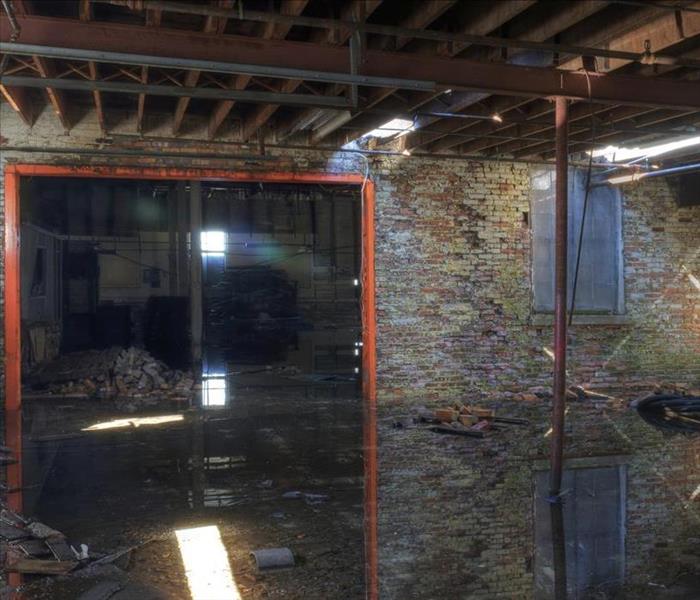 Building damaged after severe storm.
Building damaged after severe storm.
All flood water is not created equal — even if it’s all equally frustrating. When a flood strikes your Ogden, UT, commercial property, it’s important to know which category of water you’re dealing with, especially if that water is black water.
Category 1 Water
Water from a flood is classified into one of three categories, and of the three, this is the most benign. Category 1 water comes from a clean source, such as the following:
- Drinking fountains
- Toilet tanks
- Faucets
- Water supply lines
This type of water is free from contaminants and is generally safe for you to clean up on your own if you have the time and equipment. That said, if left untouched, Category 1 water can easily turn into Category 2 water.
Category 2 Water
Often referred to as “gray water,” this type of flood water likely contains bacteria that could make you sick if you ingest it. Category 2 water is the product of a variety of sources:
- Sink drains
- Failed sump pumps
- Dishwashers
- Washing machines
- Toilets containing urine only
- Seepage
Because of its unsanitary nature, it’s best to contact a flood damage restoration company to help you clean up after Category 2 flooding.
Category 3 Water
Category 3, or "black," water gets its name from the elevated level of contamination present. This type of water is typically highly toxic and should always be managed by professionals since contact with it can lead to considerable illness and other health problems. Its sources typically include the following:
- Rivers and streams
- Toilets containing liquid and solid waste
- Sewer backup
- Seawater
- Storm surge
- Stagnant water (where bacteria has likely begun to grow)
When in doubt, enlist the help of your local flood and storm damage mitigation company to help you clean up flood water. In addition to being the safest course of action, it’s also often the quickest way to return your property to its pre-flood state.
4 Major Ways Water Enters Your Basement
11/10/2020 (Permalink)
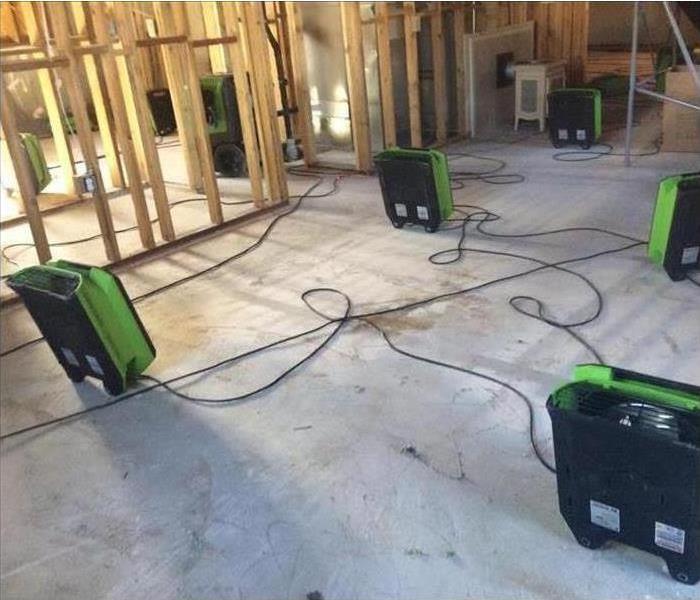 Air movers on water damage in a Ogden, UT home
Air movers on water damage in a Ogden, UT home
Nothing is more frustrating than dealing with a basement flood, especially when you can’t determine the cause. If your basement in Ogden, UT, has problems with water buildup during the rainy season, you may need to check for a few of these common problems.
4 Common Basement Problems That Can Lead To Water Damage
- Homes Built on Saturated Ground
When the ground is naturally moist, it can cause water to drain off into the lowest part of your property or the basement. If your home isn’t built on a floodplain, you can also check the soil moisture levels with the following tools:
- Soil moisture probe
- Tensiometer
- ET gauge
As a solution, you may want to direct water from the high points of your land to a drainage ditch by laying down tile lines.
- Improperly Sealed Walls and Floors
Cracks in the floors or walls can easily cause a basement flood, even if there isn’t a lot of rain. In some cases, the basement tiles of the house may not have been properly sealed or damage may have occurred to the concrete. Once you determine the source, you can patch up the cracks with epoxy sealers or cement.
- Damaged City Sewage or Drainage Systems
When a section of the city drainage system breaks or becomes plugged near your home, the water may come back up the pipes and cause a basement to become flooded. If this is the case, you may need to call a local authority to help resolve the issues.
- Blocked Gutters and Eavestroughs
When an eavestrough becomes blocked or clogged with debris, rain may overflow to the sides of your home and seep down into the soil next to your basement. Over time, the water buildup may create weaknesses in the foundation and cause cracks to occur. To fix this problem, you may need to install a screen mesh over the gutters or routinely clean the eavestrough system.
If you experience a devastating basement flood near Ogden, UT, make sure you call a professional cleanup crew. They can help you recover from water damage and help you resolve any major issues.
Getting Compensation for Flood Damage Repair
10/28/2020 (Permalink)
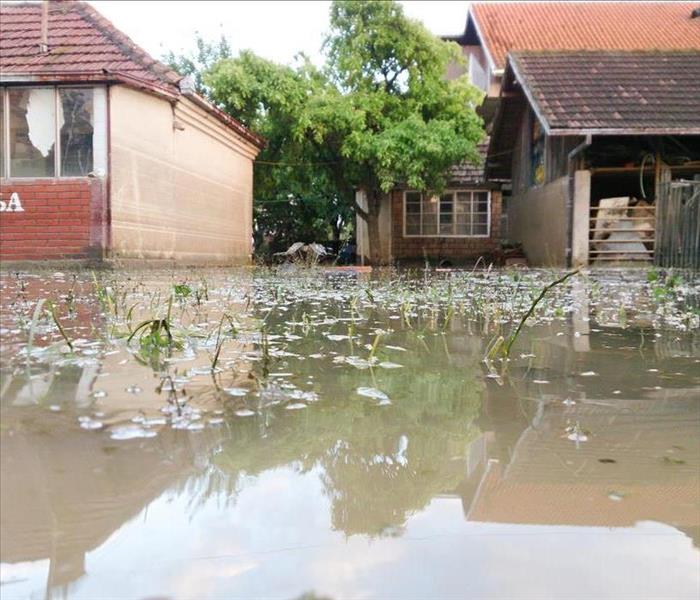 Heavy storms can cause severe damage to your home.
Heavy storms can cause severe damage to your home.
Any heavy storm can do a lot of damage to your home. If a hurricane or other natural disaster hits Ogden, UT, though, the results can be devastating. Whether you have flood insurance or not, you may be able to get assistance to help with expenses through a federal grant.
Getting Assistance Through a Federal Grant
What Is Covered?
Disaster assistance through FEMA may help you cover some of the typical costs that occur after a flood:
- Temporary housing
- Basic home repair
- Vehicle replacement
- Medical or funeral costs
This assistance does not cover the cost to restore your home fully to its previous state or replace every item lost in the flood. It can, however, pay for some of the work done by certified flood experts to help ensure that you have a safe, habitable home to return to.
Who Is Eligible?
In order to provide assistance where it is needed most, FEMA extends eligibility to a broad range of individuals who live or work within the affected floodplain. You can apply even if you don't have current flood insurance. The citizenship of everyone involved is not a factor as long as one member of the household is either a citizen, qualified alien or non-citizen national. Both homeowners and renters, including college students staying in dorms in the area, can apply for aid. Even if you have already started cleanup and paid for some of the services, you may be able to get reimbursed. If your life was affected by the disaster, you are eligible to apply for assistance.
How Do You Apply?
You don't have to determine your own eligibility for relief funds; you simply need to apply for it. To apply for a federal disaster assistance grant, visit the application website or call the FEMA helpline (800-621-3362). You will receive a determination letter that details the money that is available to you or directs you to further action.
Even if you don't have flood insurance, you may be able to receive aid for expenses after a natural disaster. Apply for federal disaster assistance to find out.
How To Save Your Belongings From Smoke Damage
10/20/2020 (Permalink)
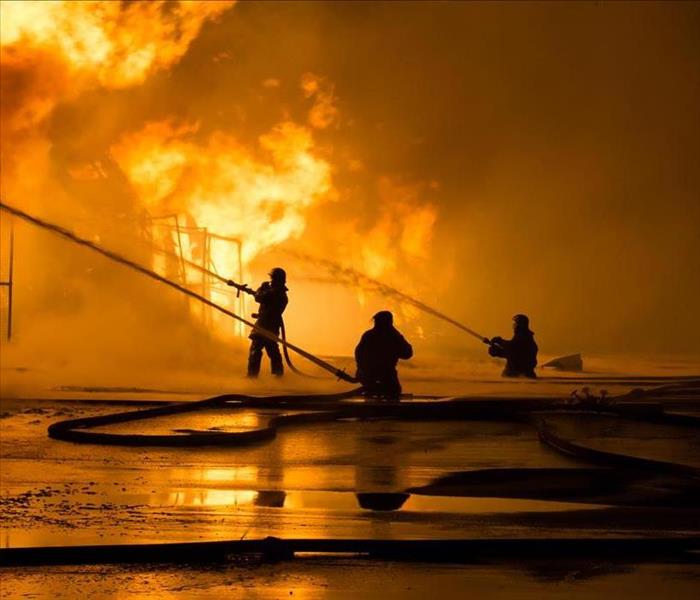 Fire damage in your Ogden, UT home can be devastating.
Fire damage in your Ogden, UT home can be devastating.
A fire in your Ogden, UT, home can leave you reeling. Even after the flames are out, the effects of smoke and soot can linger in every nook, cranny and favorite old T-shirt. From taking your smoky clothes to your favorite dry-cleaning establishment to ultrasonic cleaning, the good news is that it may be possible to save many of your belongings after a home fire.
2 Ways to Save Your Belongings From Smoke Damage
1. Clothing
After a fire, the cleaning instructions on your clothes’ tags go out the window. First, remove any soot from your wardrobe by taking it outside and shaking as much as you can off.
Next, enlist the help of your fire damage restoration company to deodorize your garments. If you skip this step, those clothes are likely to smell like smoke even after cleaning. Fire damage mitigation technicians can perform an ozone treatment that removes smoke odor for good by breaking the smoke down at the molecular level.
After clothes have been thoroughly deodorized, you may choose to wash some at home and take others to your preferred dry-cleaning service.
2. Virtually Anything Else
Fire damage professionals can also remove smoke and soot from a variety of materials using ultrasonic cleaning. These surfaces and substances include:
- Glass
- Plastic
- Metal
- Ceramics
- Rubber
Ultrasonic content cleaning uses highly pressurized waves to remove stuck-on smoke and soot particles. It’s especially useful in cleaning hard-to-reach places, which is why it’s routinely used in the medical and jewelry industries. While a fire used to spell disaster for content storage, this modern form of cleaning has drastically increased the number of household items, furniture and beloved family heirlooms that can be rescued from smoke and soot.
After a fire, you have enough to worry about. Let the professionals take most of the work off your hands — save a visit to your dry-cleaning outlet, perhaps — by using their experience and equipment to restore as many of your belongings as possible to their pre-fire state.
The First Three Steps To Take After Bursting Pipes
10/15/2020 (Permalink)
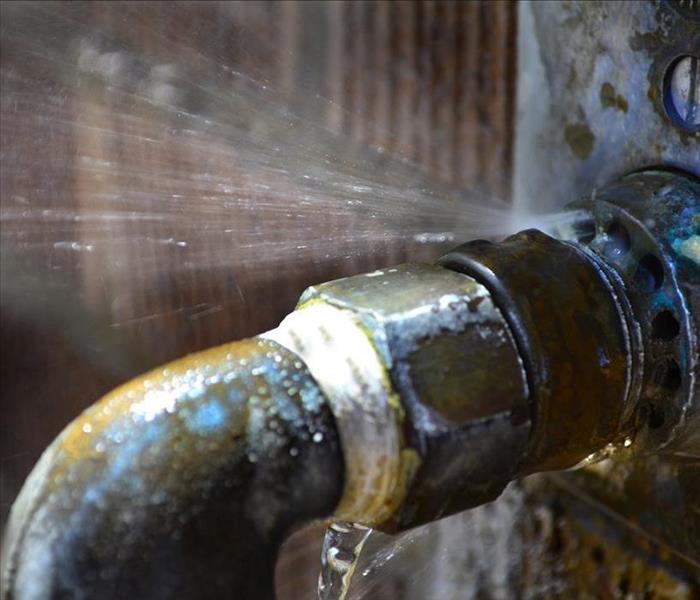 Bursting pipes may be one common issue that property owners face.
Bursting pipes may be one common issue that property owners face.
Owning a business or commercial property is often an expensive undertaking, especially if the buildings are old or weren't taken care of by previous owners in Ogden, UT. Unfortunately, bursting pipes may be one common issue that property owners face. The resulting flooding can cause a lot of damage to belongings inside the building, as well as to the building itself. There are three steps you should take as soon as you recognize a leak or a burst pipe:
3 Steps You Should Take After a Pipe Bursts
1. Turn Off the Water
It doesn't take long for pressurized water from bursting pipes to send gallons of water through the building. If you know where the source of the water is, you may be able to use the valves behind or under sinks, toilets, and other appliances. If you don't know where the leak originated or the damage is further along the plumbing system, use the water main to stop the water to the entire building.
2. Drain the Pipes
Once you've shut off the water, you'll need to flush the rest of the water out of the pipes. Do this by opening the cold water at all faucets. Flush all toilets in the building. Locate the hot water heater and shut that off. Finally, go back to the sinks and open the hot water lines.
3. Contact Professionals
Your top priority at this point is to prevent further damage. When you quickly call water damage cleanup and repair professionals, you can avoid secondary damage, such as mold growth and structural deterioration. You should also contact your insurance provider for directions. Sometimes, insurance companies work with professionals who fix broken pipe situations to be sure that bursts don't happen in the future. After making these phone calls, open doors and windows to increase ventilation and begin carrying out water.
The good news is that your insurance company will probably recommend a reputable water damage Ogden company. Although bursting pipes cause disruption to your day, it is possible to recover fully when you act quickly to shut off the water, call professionals, and remove water from your buildings.
How To Troubleshoot 5 Common Water Heater Noises
9/22/2020 (Permalink)
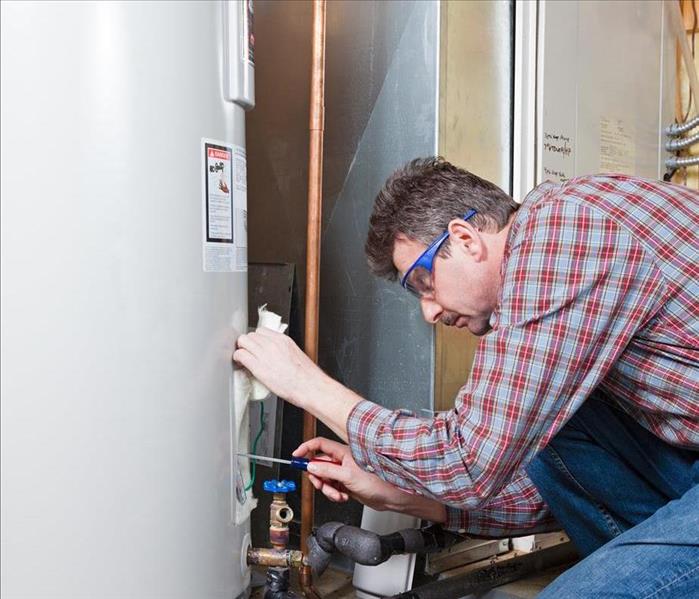 Regular maintenance is key to extending the life of your water heater.
Regular maintenance is key to extending the life of your water heater.
In a perfect world, your water heater would operate so silently and efficiently that you never have to think about it. In Ogden, UT, however, water heaters make noise. Here are five of the most common types of “concert” that they can perform and how to put an end to the performance.
5 Common Water Heater Noises
1. Screaming or Singing
When your unit makes a loud, screechy noise, it often means that there’s a valve that’s not opened completely. Check not only the water heater’s valves, but also your water lines and sinks.
2. Humming
This type of noise typically indicates that your electric water heater’s heating element needs to be tightened. The hum is produced by the flow of water surrounding the element creating a vibration.
3. Tapping
The pipes atop your water heater likely have heat traps on them that keep water flowing in the correct direction. It’s common for this to create a tapping sound from time to time, but if it’s bothersome, try replacing the manufacturer’s heat trap with a dielectric nipple from your local home improvement store.
4. Rumbling or Popping
These sounds are likely the result of sediment buildup in your tank. The popping happens when the trapped sediment is heated by the hot water. The rumbling occurs when the flow of water in the tank stirs the accumulated debris. To eliminate sediment, perform a water heater flush.
5. Hammering
Water hammering happens when the water flowing in and out of your water heater’s tank is shut off. Sometimes, this can cause the pipes in your walls to shake and shudder, essentially like an aftershock. While this jostling isn’t harmful to your water heater’s tank or other elements, it can cause damage to your home's walls over time. If hammering occurs regularly, consider putting in a water hammer arrestor.
Ask any water damage restoration company, and its technicians will tell you: Regular maintenance is key to extending the life of your water heater. Keep an ear out for trouble, and you can solve simple issues before they turn into big problems.
Fire Restoration and Content Cleaning
9/14/2020 (Permalink)
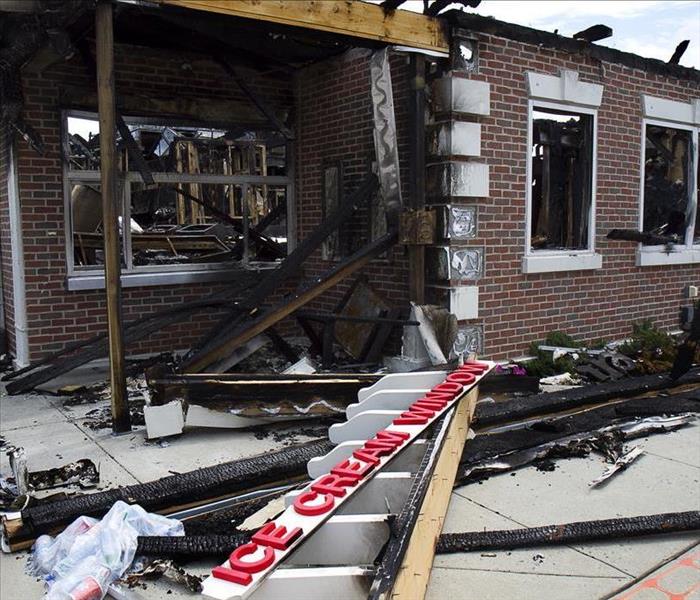 Commercial fire damage.
Commercial fire damage.
As a business owner, the threat of any disaster is a nuisance, but fire is potentially detrimental to your operation. Recovery from a fire can cost thousands of dollars in repairs, and you may find that you are throwing away more than you can keep. While a fire restoration company in Ogden, UT, can help your business return to normal, you may need to depend on outside organizations for the salvaging of essential documents and materials. There are a few services that can help.
- Dry-cleaning companies
- Remediation specialists
- Specialized cleaners
3 Services That Help With Fire Restoration
Dry-Cleaning Companies
Dry cleaners can help to clean porous items, like carpets ad other fabrics. Smoke damage tends to make these materials smell, and the potentially carcinogenic chemicals from the smoke are not safe for workers to breathe in. Therefore, the cleaning service will put the fabrics through steam washes to clean them, making them sanitary and safe.
Remediation Specialists
Remediation companies are great for content cleaning of permanent fixtures and removing damaged content from the premises. The team will use chemical cleaners and steam machines to restore smoke damaged non-porous items. They will also use technology, like ultrasonic systems. The primary goal of these companies is to ensure that the building is sanitized and deodorized before the restoration process.
Specialized Cleaners
If your business has unique documents that were damaged in the fire, then you may need the expertise of specialized cleaners. There are specific restoration experts that can salvage porous items, like paper and photos. If the fire damaged your files, then reach out to one of these specialists. Also, if computer systems or other content storage devices were damaged by smoke, many tech experts claim to be able to clean and restore electronic systems.
Whether you need dry-cleaning services or you want a specialized cleaner for your computer systems, you can salvage more than you think from a business fire. Reach out to a restoration company to discuss the cleaning methods they use.
3 Water Heater Noises That May Indicate Trouble
9/7/2020 (Permalink)
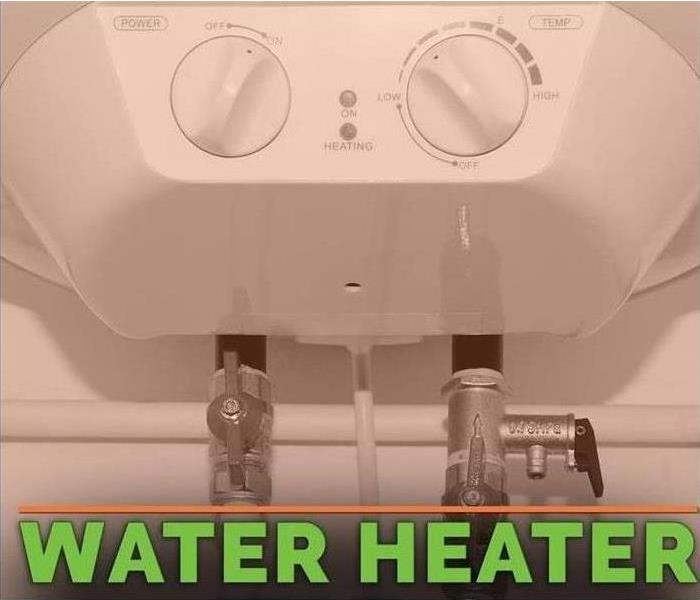 Water heater tips for your Ogden, UT home
Water heater tips for your Ogden, UT home
You may not give much thought to your Ogden, UT, home’s water heater until it starts to malfunction. One major giveaway is certain sounds it might start to make where it ran quietly in the past. While not all of these sounds are cause for alarm, there are a few that may be pointing to trouble or the need for maintenance.
Look Out For These 3 Water Noises
1. Hammering Sounds
If your water heater makes hammering or banging sounds, this may be startling but is usually not a cause for alarm. This means that someone in the family has turned the water off suddenly, which may cause the pipes to vibrate. When this happens, the pipes may knock against the wall. Wrapping them in heat-resistant soft insulation can fix this problem and prevent long-term damage to the wall
2. Screaming
This sound can also be startling because it sounds like the entire unit may burst at any moment. However, this usually means a valve somewhere in the unit, the lines or at another connected source may not be closed all the way. If you cannot chase it down, you may want to call in a water damage and restoration company to help you find the source of the faulty valve and inspect any lines for damage.
3. Crackling and Popping
If your water heating unit sounds like it is boiling rocks every time it turns on, this may not be too far from the truth. Over time, sediment can build up at the bottom of the tank and cause crackling or popping as the water forces its way through the buildup during the heating process. A water heater flush can rectify this issue.
Some noises your Ogden, UT , home’s water heater might make can be alarming. However, when you understand their sources, you can take the steps necessary to resolve or repair the problem before it becomes too serious.
Homeowners' Questions and Answers About Nor'easters
8/27/2020 (Permalink)
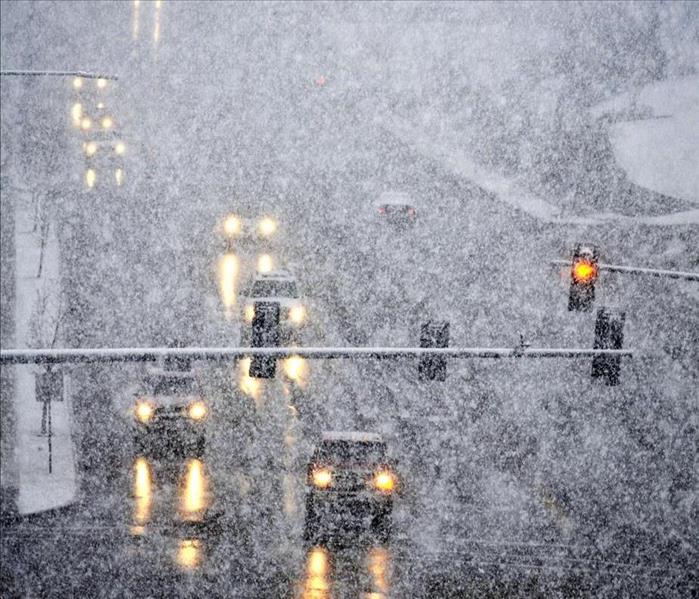 Nor'easter snow storm.
Nor'easter snow storm.
You may have heard the term "nor'easter," but if you haven't spent a lot of time in Ogden, UT, you may not really know what it means.
Facts About Nor'easters
Here's a quick overview of Nor'easter facts:
- Usually involves winds straight off the Atlantic Ocean in the northeast
- Generally associated with winter storms with or without snow
- May happen during any month but are most common between September and April
You aren't likely to experience this type of storm on the West Coast; these storms form when low-pressure areas along the East Coast take on power, specifically in the form of heavy winds. It is possible to experience one of these storms during the spring and summer, but they are really most common during the winter months.
Where Do The Storms Hit?
Most of the time, nor'easter storms form between the states of Georgia and New Jersey within 100 miles to the east or west of the coast. They generally move in a northeast direction, reaching their maximum power near the New England area or even in the Canadian Maritime Provinces. It's common to see areas such as Boston, New York City, Philadelphia, and Washington D.C., hit by the full power of these storms.
Can I Protect My Family and Home?
There are steps you can take to protect your Ogden, UT, home from flooding and other damages as these storms rush through. Begin by thinking of your own safety. Store food and water for three days, at least. Consider other provisions you may need if the power were to go out for several days. Do you have an alternate form of heat, for example?
You may want to talk to your insurance provider about flood insurance. Next, go through the lower levels of your home and move certain appliances or systems to a higher floor, such as the heating and cooling system and electric panels. Regularly inspect the check valves in your sewer system. Reach out to water damage cleanup and repair professionals for other tips specific to your community.
Where Can I Get More Information?
Before the next nor'easter season rolls around, learn more about the risks and the preventative steps you can take. Get information online, from your neighbors, and from the professionals who help homeowners recover from the storms.
The Basics of Smoke Odor Remediation
8/25/2020 (Permalink)
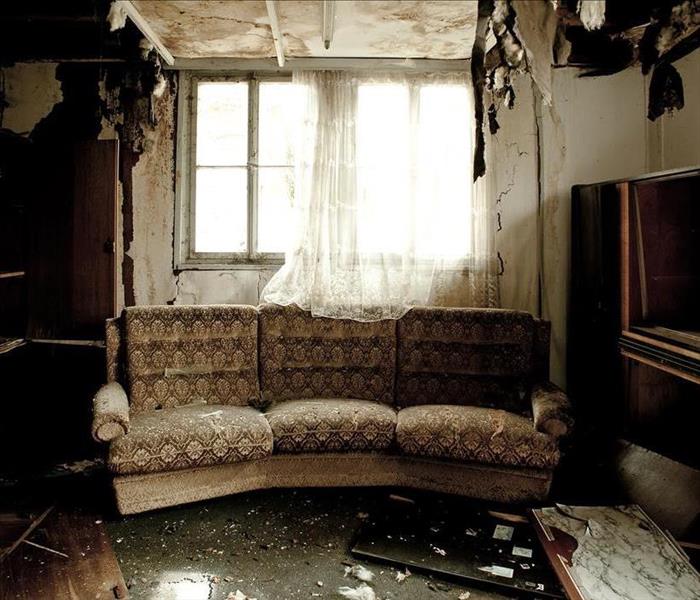 This room needs smoke remediation after small fire.
This room needs smoke remediation after small fire.
House fires often cause a significant amount of residual smoke odor. While smoke cleaning products advertise odor removal, most fires will require the expertise of a remediation company in Ogden, UT. Odor remediation typically comprises a four-step process.
- Remove damaged items
- Clean
- Run equipment
- Seal materials
4 Steps For Smoke Odor Remediation
1. Remove Damaged Items
To get an actual idea of the level odor in your home, a remediation crew will want to remove any visible smoke damage, including damaged items that may hold odor. The salvageable items removed from your house will undergo cleaning separate from the property. You can find several local cleaners who specialize in smoke damaged materials.
2. Clean
With all loose items and debris out of your home, the remediation crew will begin the smoke cleaning process. The physical cleaning may involve disinfectant, detergents and other materials to scrub and remove remaining soot. However, the company may spend a significant amount of time vacuuming the space to ensure they do not make matters worse.
3. Run Equipment
The mitigation crew may use a variety of equipment to help reduce the odors in the air. For example, air filtration devices, thermal foggers and ozone machines are standard tools used in odor removal. The team may also need to use shop vacs, water pumps and dehumidifiers to remove excess water and dry the house from fire hose exposure.
4. Seal Materials
Many remediation companies may suggest sealing porous materials, like wood floors, to trap the odor rather than replacing the material. While replacement is the best way to remove odor, it is not the most cost-effective solution, especially when the structure and appearance of the material remain intact.
Many homeowners try DIY smoke cleaning to save a few bucks, but when dealing with the aftermath of a significant fire, DIY methods are not the most workable solutions. Contact a fire remediation specialist to discuss alternatives and assessments.
The Benefits of IICRC Certification
8/20/2020 (Permalink)
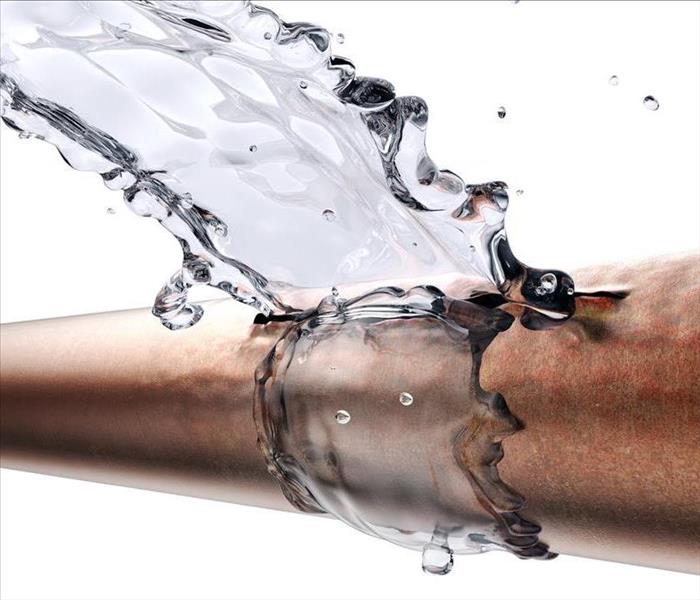 Broken pipe
Broken pipe
A lot can go wrong in an office building or warehouse. When your clients' report damage from a burst pipe, clogged plumbing or a fire, it's important to have speedy mitigation services in Ogden, UT, on call that they can trust. Referring them to a company that is certified by the IICRC has several benefits.
IICRC Certification And The Benefits
Training
The Institute of Inspection, Cleaning and Restoration Certification trains professionals in the remediation industry on a variety of skills:
- Water damage repair
- Fungus mitigation
- Soot and smoke removal
- Property restoration
After completing the initial rigorous coursework and passing the exam, technicians must engage in ongoing training to maintain their certification status. When you refer your clients to certified remediation experts, you know that their property is in the hands of specialists who have not just been trained once but also have undergone continuous education to keep up with the latest technology and updated methods.
Components
Another benefit of this training is that it is comprehensive, which is useful when a disaster requires multiple skills to resolve. For example, a fire calls for not only soot damage mitigation but also water damage repair and a thorough disinfection process. A certification from the IICRC ensures that technicians are trained to handle all the problems caused by a singular event.
Insurance
If something goes awry during the mitigation process, your clients shouldn't have to pay for the extra work. The company doing the work needs to have the means to compensate for such a loss. Many insurance providers, however, won't take the risk of providing liability coverage to technicians without a mitigation certificate. This can cause significant delays in getting the mistake fixed, or the uncertified workers may just disappear altogether, leaving shoddy work and a mess behind.
When their property is damaged, your clients need restoration services they can trust. Looking for technicians with IICRC certification is a good place to start.
What To Do To Prevent Frozen or Bursting Pipes
8/13/2020 (Permalink)
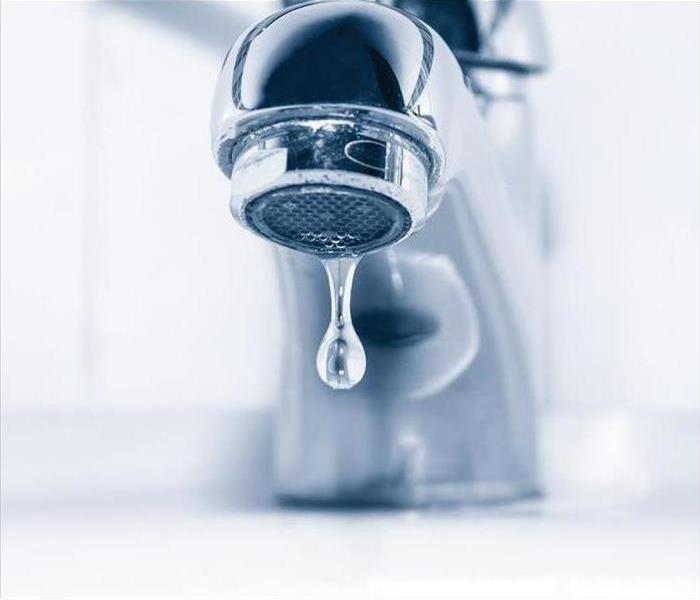 Allowing faucets to drip may prevent a broken pipe.
Allowing faucets to drip may prevent a broken pipe.
Three Simple Ways to Help Prevent Frozen or Bursting Pipes
For individuals in Ogden, UT who leave their homes for extended periods of time during cold weather, it may be important to know what to do to prevent water pipes from freezing and bursting. Water in a pipe that freezes and ultimately bursts may result in a family’s returning to a flooded home. This could create a terrible situation for a homeowner. While water damage repair professionals can certainly be called to complete a water pipe repair due to a broken pipe, there are steps that a homeowner can take to prevent the situation from occurring in the first place. Here are three simple ways to help prevent frozen or bursting pipes.
- Keep the Heat On and Keep the Air Circulating
In cold climates, it may be very helpful to keep the heater turned on anytime that the house will be vacant. Keeping the heat turned to at least 50 degrees Fahrenheit may help to prevent pipes from freezing. Additionally, opening cabinet doors underneath sinks and where pipes are located may help air to circulate around pipes and keep them warm. (The electric or gas heating bill may be a bit higher than simply turning the heat off. However, considering the mess that a flooded home can cause due to a burst pipe, the added heating cost may be worth it!)
- Turn Water in the Home Off or Allow Faucets to Drip
A homeowner may choose to turn the water to the home off entirely. However, if water is to remain on while the family is out of town, keeping faucets open a little bit may prevent a broken pipe. Water expands when it freezes. Therefore, faucets that drip can help prevent the freezing of stationary water and relieve pressure inside the pipes, avoiding the need for a water pipe repair due to a rupture.
- Wrap Pipes in Foam
Another simple way to avoid a water pipe repair is to wrap pipes in foam to keep the pipes warm. The warmer the pipes are, the better the chances are for everything to run smoothly while a homeowner is away!
How To Create an Emergency Storm Plan
7/28/2020 (Permalink)
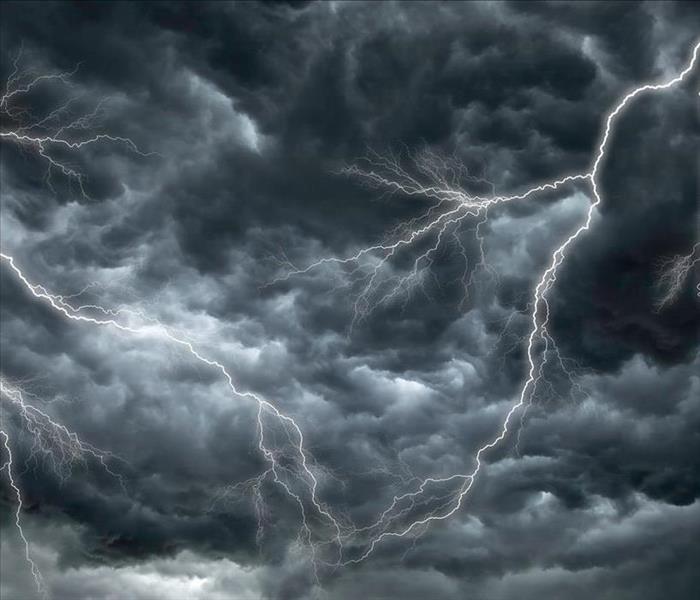 Thunderstorm
Thunderstorm
As a property manager, you juggle a lot of responsibilities. You must ensure that the property is safe for all tenants and that employees are not only doing their job but are also well treated. Having a storm preparedness plan is one way you can protect the building, grounds and all the people involved in an emergency situation.
Commercial Emergency Storm Plan
Building Readiness
Making sure your building is in top shape before storm season begins should be a priority for property management. Storm damage restoration experts recommend a building inspection before any major change in weather to safeguard areas vulnerable to high winds and heavy rain:
- Windows
- Doorways
- Roof
- Basement
When storm season in Ogden, UT, approaches, make sure that you have enough sandbags to slow the flow of water toward the building. Check your backup generator and sump pumps to ensure that they are working properly. The more precautions you can put in place, the better chance your building has of surviving the storm.
People Protection
A good storm preparedness plan revolves around keeping everyone safe and informed. Compile a list of emergency numbers that you can access from anywhere. Keep a hard copy in an easily accessible location just in case your electronic devices fail during the storm. Develop a system for alerting tenants in emergency situations, and inform everyone of this system in writing. It's important to keep the lines of communication open in case you need to evacuate the building or let residents know when they can return to their units. It's also helpful to have a backup plan just in case phone lines are down during or after the storm. Inform your renters and train your staff well so that everyone knows what to expect and what to do.
Having a storm preparedness plan is crucial for property managers. A good plan protects your building and all the people in it.
Why Does Your Basement Flood?
7/28/2020 (Permalink)
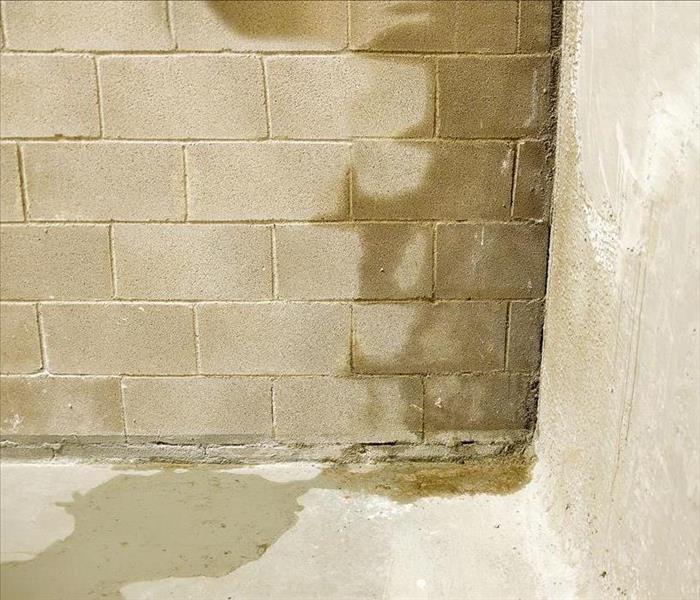 Unsuitable sealant can lead to moisture issues
Unsuitable sealant can lead to moisture issues
Do you experience frequent flooding in your basement that does not appear to come from an existing plumbing issue? While you can call a water mitigation expert in Ogden, UT, to assess your property, you are likely dealing with one or more of the following four issues when dealing with a basement flood.
4 Leading Causes For Flooded Basements
1. Clogged Eaves and Gutters
Not all homeowners are great at maintaining the exterior of their homes, especially when it comes to the dreaded eaves and gutters. No one likes to climb a ladder and scoop out all of the gunk that builds up over the winter. Unfortunately, if left to accumulate, then your outdoor drainage system cannot function properly, leading to rainwater pooling around the foundation of your home, which can lead to a flooded basement and significant water damage.
2. Poor Drainage
Beyond external drainage, it is also possible that the drainage system within the basement is not adequate for your home's size and location. For example, you may have a small sump pump or a single backwater valve system when, in reality, you need a large sump pump and multiple valves or drains to avoid a basement flood.
3. Unsuitable Sealant
Sometimes builders skimp where it matters most. A basement requires a sealer that is suitable for both the climate and the location of the home. If a lower grade sealer is used because it is cost-effective, a homeowner may deal with moisture issues when the weather changes throughout the year. Also, if your home was built in a naturally damp location, then using maximum sealant protection is necessary. If you continue to have moisture problems, consider looking into a better sealer for walls and floor.
4. Poor Location
Some areas are not meant to have basements. For example, many marsh communities do not have basements because of the natural dampness of the soil. The location of your home may be the root cause of your issue.
If you have a problem with a recurring basement flood, get an inspection of your property. Contact a local water remediation company to help.
Prevent Expensive Losses With a Fire Sprinkler System
7/21/2020 (Permalink)
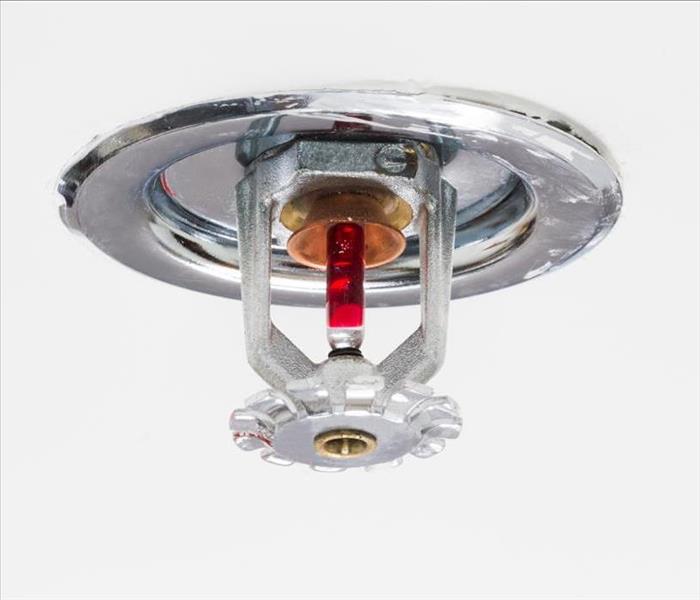 A fire sprinkler system is one of the most effective tools
A fire sprinkler system is one of the most effective tools
The fire sprinkler system is one of the most effective tools for putting out commercial fires. When installed and used appropriately, these fire suppression systems reduce losses by more than 65 percent. According to the National Fire Protection Association, sprinkler systems also prevent deaths and injuries:
- Death rates in properties with sprinklers were 87 percent lower than in those without.
- Civilian injury rates in properties with sprinklers were 27 percent lower.
- Firefighter injury rates were 67 percent lower on properties where sprinklers were present.
Another finding by the NFPA shows that about $25.6 billion in property damage was the result of fires in 2018. Clearly, sprinkler systems are vital to the safety of everyone living or working in commercial properties affected by fire, as well as for the prevention of property losses.
How do commercial systems prevent losses for your business?
Heat Detection
If you're worried that about false alarms setting off the fire sprinkler system, you'll be happy to know that it's heat, not smoke, that triggers the system. Sprinkler heads are equipped with glass bulbs containing a glycerin-based liquid. As a fire grows and the air heats up, the increased temperature heat the liquid in the sprinkler head. The heated liquid expands and bursts the bulb which activates the sprinkler.
Pressurized Water
The heads of the sprinkler system are connected to a pressurized system of pipes and a reliable water source. When the valve on the sprinkler head opens, pressure forces water to spray out in a wide arc that smothers the fire and prevents new flames from igniting.
Damage Prevention
Fire suppression systems are built to reduce the amount of damage done to your property. When the system works effectively, sprinklers are only activated where flames are present. This limits damage from the fire and from the water used to suppress the fire. In most cases, the amount of water used by the sprinklers is less than the amount that firefighters would use. This also means that your fire sprinkler cleanup costs will be lower.
Once the fire has been contained and it is safe to re-enter your property, you can contact fire and damage repair professionals to return your Ogden, UT, to its pre-fire condition. Ultimately, the repairs necessary are much easier to handle when a fire sprinkler system is active on your property.
How To Protect Your Home From Cigarette-Related Fires
7/21/2020 (Permalink)
 The best way to prevent a cigarette fire is to stop using cigarettes completely.
The best way to prevent a cigarette fire is to stop using cigarettes completely.
Smoking isn’t good for anyone, but it can be especially bad for your home. A cigarette fire can ignite from one carelessly placed butt, and that can result in extensive fire damage that can only be remedied by fire remediation experts. The good news is that these fires are completely preventable as long as you, your family and your guests abide by a few simple guidelines.
Keep Paraphernalia Out of Reach of Children
Children are curious, particularly about activities they see the adult around them doing. If anyone is smoking, the matches and lighters can be very tempting playthings for the younger people in the group. You can take a few precautions to minimize risk:
- Keep lighting implements out of their reach
- Use child proof lighters
- Refrain from smoking while children are around.
Often, if you keep lighters and matches out of the children’s sight, you take away the temptation.
Designate Smoking Areas Outside
Another way to avoid a cigarette fire in your home in Ogden,UT, is to forbid smoking inside the house altogether. Place all ashtrays outside and direct everyone who wishes to smoke to that area when they feel the need. If you eliminate the opportunity to smoke indoors, you don’t have to worry about someone being careless with their cigarettes inside after a few drinks or when he or she gets tired.
Provide Adequate Means of Disposal
Even if your smoking area is outdoors, a fire could still break out and cause damage to your property. Prevent an ashtray fire by submerging the contents in water after everyone is finished smoking. This prevents errant sparks that aren’t quite extinguished from growing into a larger flame. Make sure that ashtrays are sturdy so that they won’t tip over easily. Fire cleanup in your backyard can be a costly consequence for improper planning.
While the best way to prevent a cigarette fire is to stop using cigarettes completely, there are a few ways to lower the risk to your home. Set clear guidelines for everyone to follow, and you make your home safer.
Top 4 Places To Find Mold in Your Home
6/29/2020 (Permalink)
 Sometimes roof leaks are subtle and can cause mold growth.
Sometimes roof leaks are subtle and can cause mold growth.
It is not uncommon to find some levels of mold growth in houses. No homeowner should want any level of growth in their home, but it is sometimes difficult to find the underlying causes for the problem, and sometimes, homeowners do not even realize there is a problem. Therefore, it is necessary to familiarize yourself with the top four hiding places of mold, so you can have a remediation company in Ogden, UT, come over to inspect these areas.
- Basement
- Attic
- Laundry room
- Kitchen
4 Places Where Mold Hides
1. Basement
Basements are notorious for having a musty, moldy smell, which can sometimes leave a homeowner’s guard down because they assume the smell is typical. The lowest level of your house, however, is the most vulnerable to high humidity levels and mold development. You most likely have exposed pipes, sump pumps and furnaces in the basement, which all contribute to the high moisture content in the air. Mold thrives in humid environments.
2. Attic
Do you know if you currently have a roof leak? Sometimes, leaks are subtle and go unnoticed for months. Attic leaks can lead to significant mold growth because people do not go into their attics often. You also should consider attic ventilation to reduce the risks.
3. Laundry Room
The laundry room is a moisture haven. The washing machine and dryer lead to high levels of humidity, and if you have a mechanical closet with a water heater, that only adds to the issue. To reduce your risks, try installing or using a dehumidifier, and perform water damage checks often.
4. Kitchen
While the use of fans and hood vents helps to remove excess moisture from the air in kitchens, you should still be cautious and observant. Any small leak or unsealed food items can lead to the development of mold.
While mold growth can be overwhelming for any homeowner, vigilance is key to prevention. Therefore, keep watch over the moisture levels in the areas listed above, and contact a remediation company to assess your home.
When Frozen Pipes Threaten To Flood Your Home
6/24/2020 (Permalink)
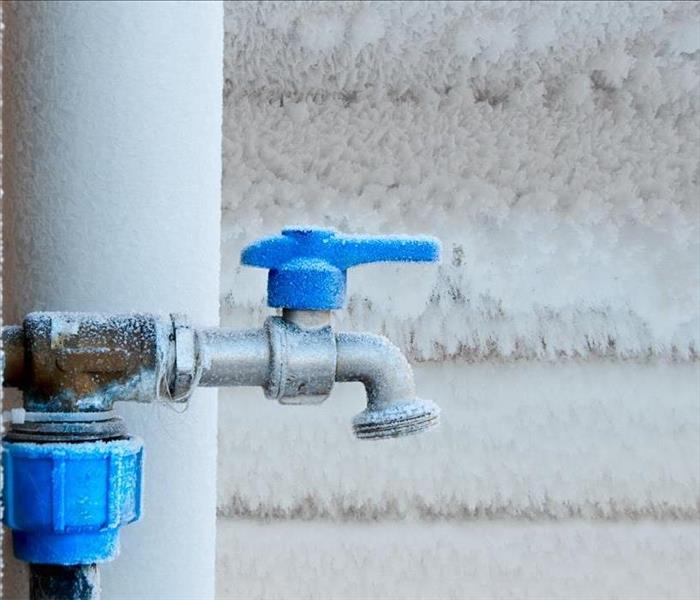 Frozen pipes are common during the winter.
Frozen pipes are common during the winter.
There are several causes of frozen pipes during the winter. Some of the most common reasons for this problem include:
- Extremely cold temperatures
- Faulty taping
- Inadequate insulation
- Broken or malfunctioning thermostats
When any of these seemingly small issues cause a pipe freeze, the frozen water expands and may rupture the pipe, creating a much larger problem. One of the best ways to avoid this type of water damage in Ogden, UT, is to check for cracks, splits, and other damage along the pipes before winter weather sets in.
How To Take Care of Frozen Water in the Pipes
If you do notice that you have frozen pipes, but they haven’t ruptured yet, you can take quick action to avoid further damages. Start by inspecting the pipes for cracks and other signs of damage. Next, use the main shut-off valve to prevent a flood if the pipes do rupture while you’re working. At this point, you can increase the amount of insulation around the pipes and wait for them to warm up, or you can use a gentle source of heat, keeping the temperature warm, not hot.
How To Identify Icy Water in the Pipes
How can you tell that the water in your pipes is frozen? One of the first and most obvious signs is that the water isn’t running from your faucet. However, depending on where the pipe freeze is located, some faucets may have running water while others don’t. If you suspect there’s frozen water, turn on the water in all faucets. This will help you identify where the problem is. Here’s an important tip: If you’re expecting a drastic drop in temperatures, you can leave the faucets open with a small trickle running through. This will help prevent the pipes from freezing and also helps melt any ice that has already formed.
When the Damage Has Already Happened
When frozen pipes have already caused damage in your home, cleanup and reconstruction professionals can help resolve wood that has become swollen and may be able to save water-soaked drywall.
When Your Business Suffers COVID-19 Exposure
6/17/2020 (Permalink)
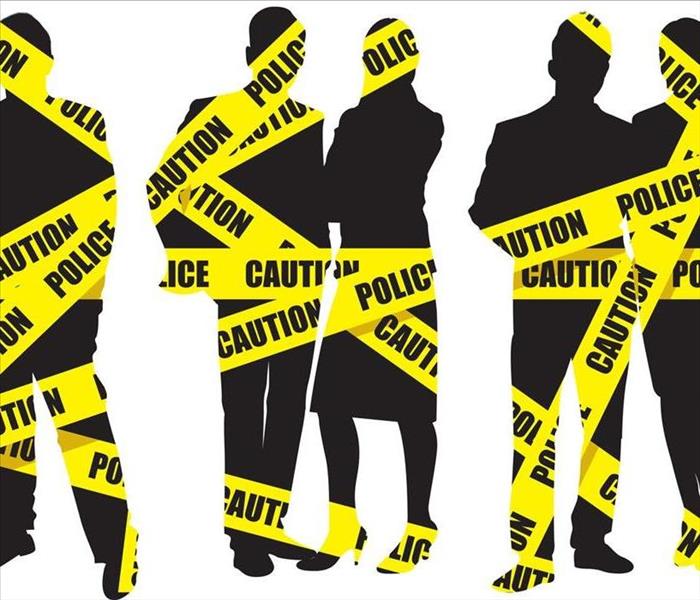 Avoid spreading the virus by keeping everyone out of the area for at least 24 hours after exposure.
Avoid spreading the virus by keeping everyone out of the area for at least 24 hours after exposure.
It isn't unusual these days to hear that an individual, not knowing that s/he was infected by the coronavirus, has visited several businesses in a town and unknowingly caused each of those businesses to take post-contamination steps. If you believe your business may have been subjected to coronavirus exposure, take the following steps to protect your community:
- Immediately close off all areas used by the individual
- Keep everyone out of the area for at least 24 hours
- Contact reputable cleaning professionals with COVID-19 training
While some businesses may consider handling the matter on their own, knowledgeable employers and business managers reach out to Ogden, UT, commercial cleaning firms.
Avoid Spreading the Virus
There are several reasons to hire professionals for coronavirus cleanup efforts. One of the most important reasons is that it's very easy to spread the disease. For example, it could be possible to transfer the virus from an infected surface to another by using the same cleaning cloth in both places.
Access Specialized Resources
Another important reason to hire professionals is their access to resources aren't available to most individuals and even custodians. For example, a commercial cleaning expert may have access to industrial-grade personal protective gear that is specifically designed for the virus. These technicians may also have up-to-date training that isn't readily available to other professionals.
Focus on Business Priorities
When a crisis, such as the COVID-19 pandemic, affects a business, it can be easy to get sidetracked. When this happens, the company's main area of focus suffers. By hiring professionals to limit coronavirus exposure, employees are free to keep their focus on the primary goal of the company.
If your business has been affected by covid-19 exposure, take quick action. Hire professionals to handle the covid-19 cleanup and disinfection process. Involve your employees in the protocols established by the Centers for Disease Control and Prevention. Keep your focus on the growth and well-being of your company.
How SERVPRO Addresses Widespread Loss
5/28/2020 (Permalink)
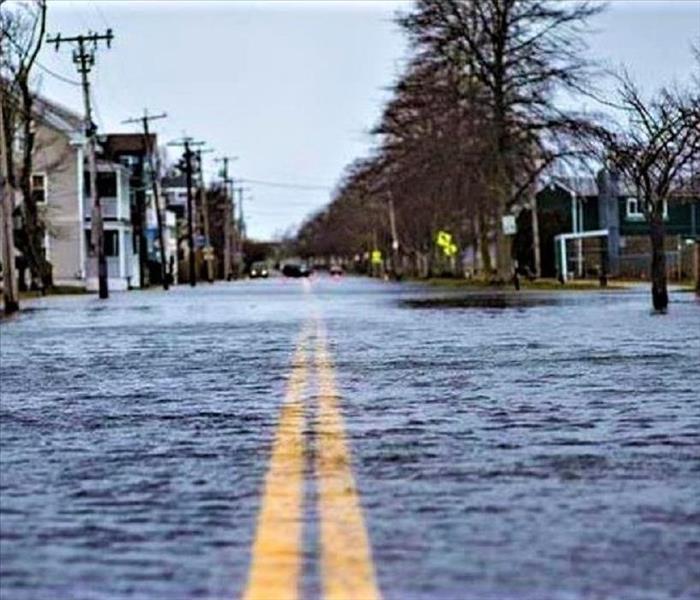 When a natural disaster causes a catastrophic loss, count on SERVPRO's Disaster Recovery Team.
When a natural disaster causes a catastrophic loss, count on SERVPRO's Disaster Recovery Team.
A fire in one home in Ogden, UT, can be devastating. What happens, though, when a natural disaster causes a catastrophic loss throughout an entire area of the country? When this happens, you need a team of experts you can rely on to mobilize quickly to address the damage caused by the event. That's where SERVPRO's Disaster Recovery Team comes in.
Disaster Recovery Team
Standard Mode of Operation
When you call 1-800-SERVPRO after a flooding disaster, you are connected to more than just an information line. The corporate office provides several services:
- Referral to a local team that meets high service standards
- Full access to the Claims Information Center
- Updates on job progress
This is the standard mode of operation for any calls received by the company. It connects you to local experts who can address the storm damage on the property in question. You can expect detailed, individual attention for each job received.
Emergency Response
When multiple homes in the same area suffer catastrophic loss, SERVPRO rises to the occasion. It is easy to imagine how problems in multiple homes could easily overwhelm local storm restoration specialists in the affected area. The Disaster Recovery Team is designed to overcome this issue. Once mobilized, it sends extra supplies, equipment and teams to the disaster zone to fortify the resources of the local teams. Because all the teams are certified in storm damage remediation, they are fully qualified to jump in and help out with little to no further instruction. This makes SERVPRO Faster to Any Size Disaster, even when the damage is widespread.
If you provide coverage to homeowners in a certain area, a large storm could result in a catastrophic loss for many of your clients. When this happens, you need a mitigation company you can depend on to provide the most expert and efficient service. You can trust SERVPRO's Disaster Recovery Team to get your clients the help they need as soon as possible.
FAQs About Storm Damage Repairs
5/27/2020 (Permalink)
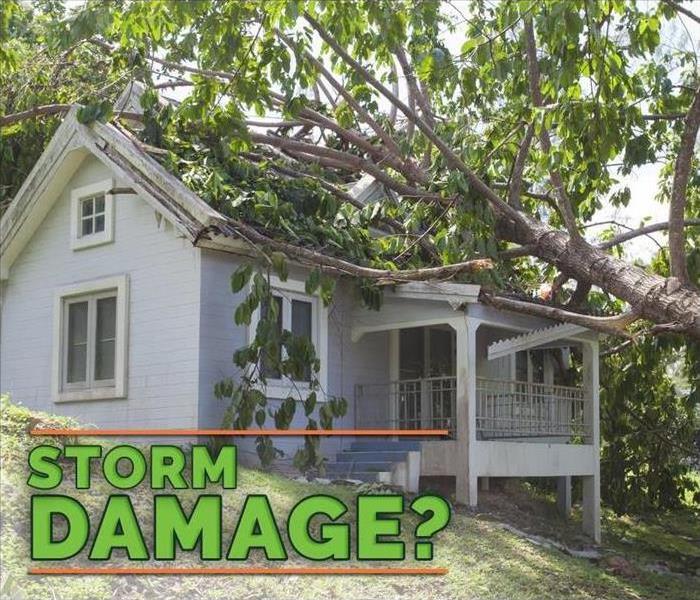 After your home has suffer storm damage you might be wondering what to expect.
After your home has suffer storm damage you might be wondering what to expect.
Sometimes, there's very little notice before a storm hits, but the consequences could last a very long time. When your home has suffered storm damages, including water damage, part of the frustration will be not knowing what to expect.
Common questions include
- Which repairs are handled by professionals?
- Does my insurance cover damages and storm restoration?
- How long will the repairs take?
- Can we stay in our home during the repairs?
The best time to plan for damages and restoration is before a storm hits. Whether you have the luxury of planning ahead or you're already affected by a storm, you'll benefit from the answers to these questions.
What Professionals Handle
Storm damage cleanup and restoration professionals handle a myriad of tasks including extracting water, tearing out sodden materials, drying out flooded areas, removing damaged contents and structural elements, and restoring your home to its pre-storm condition. After inspecting your home, technicians will tell you what to expect.
Insurance Coverage
There are many variables that affect insurance coverage. Get accurate answers to this question by contacting your insurance agent.
Length of Time Spent on Repairs
The amount of time required to clean up damages is affected by how much of the home was damaged, the type of damages, and how many of your belongings need to be repaired. After completing an assessment of your property, technicians can give you an estimate about how long the work will take.
Staying Home or Temporary Housing
Once again, there are several factors that determine whether you can stay home during repairs. If there's minimal flooding, you probably won't have to leave. However, if mold or black water is present, you'll probably want to stay elsewhere during repairs.
It's not uncommon for homeowners to feel frustrated and overwhelmed when their homes have suffered storm damage. The good news is that Ogden, UT, professionals are ready to give you answers to your questions. Contact storm restoration professionals as soon as possible to get the information you need.
6 Ways To Minimize Kitchen Fire Risks
5/8/2020 (Permalink)
 Kitchen fires are leading causes of residential fires.
Kitchen fires are leading causes of residential fires.
Kitchen fires are among the leading causes of residential fires, and they are also the most preventable. If you are looking for fire tips to avoid a kitchen catastrophe, consider contacting a fire mitigation expert in Ogden, UT, or follow six basic rules.
- Never leave
- Clear flammables
- Clean surfaces
- Unplug and service appliances
- Avoid using too much grease
- Install a smoke detector
Follow these 6 Tips to Avoid Kitchen Catastrophe
Never Leave
Most fire damage occurs because a homeowner is not present to stop it before it gets out of hand. When you are cooking or using kitchen appliances, remain in the room or at least in the house, undistracted.
Clear Flammables
Before cooking a meal on the stovetop, remove all flammable materials from the area. You can move rags, towels and other linens into drawers, and paper towels should never be near a burner.
Clean Surfaces
Next in the line of fire tips is to clean all cooking surfaces. Food, old grease and other kitchen debris can cause a fire to ignite. Take a damp cloth and wipe down the stovetop before preparing your meal.
Unplug and Service Appliances
Appliance fires can happen because of power surges or system error. If you are not in the room, unplug the machine. When you finish using an appliance, unplug it. Check manufacturer guidelines for upkeep and maintenance suggestions and follow them.
Avoid Using Too Much Grease
Too much oil or grease in a pan or pot can cause a grease fire. Make sure you are only using the amount of oil you need to reduce your fire risks.
Install a Smoke Detector
Nearly every municipality suggests installing fire and smoke detectors in your home. While having a detector near the kitchen is an excellent idea, install it just outside of the kitchen to avoid inaccurate readings.
The above fire tips can help reduce your kitchen and home fire risks. However, talk to a professional fire safety expert to assess the vulnerabilities of your home.
4 Common Flood Mistakes To Avoid
5/5/2020 (Permalink)
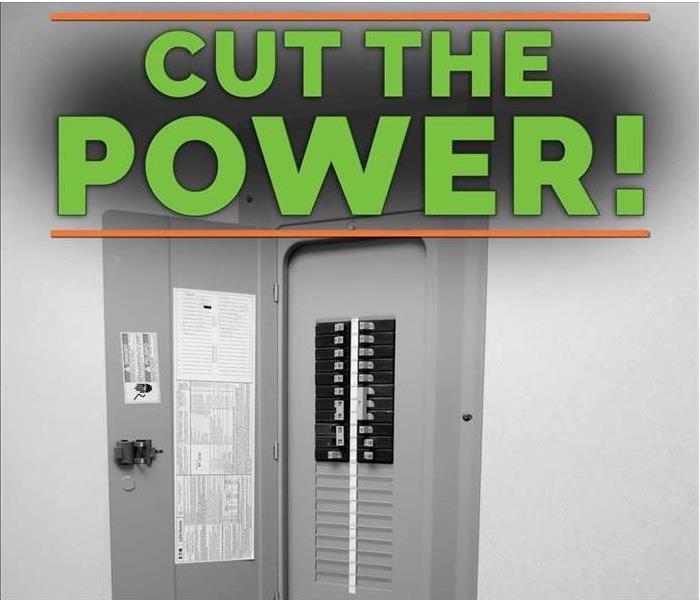 Make sure to turn off the electricity to avoid shocks or fires in Ogden, UT.
Make sure to turn off the electricity to avoid shocks or fires in Ogden, UT.
4 Common Mistakes Homeowners Attempt Making to Eliminate Flood Water
Flooding poses a wide range of personal safety and property damage risks. Homeowners should be aware of the potential dangers of a flooded home in order to make more informed decisions. Here are four common mistakes that many homeowners make when attempting to eliminate flood water.
- Mitigating Before Documenting
If mitigation begins before a homeowner documents the full extent of damage, it may be harder to make a flood damage claim and receive full compensation. Capture the worst of the damage in photographs or videos prior to pumping out standing water.
- Making Direct Contact With Flood Water
Restoration professionals classify flooding as Category Three black water, which may contain chemicals and solid waste. Homeowners and mitigation workers should wear waterproof boots, hip waders, and other personal protective equipment while documenting or cleaning up damage inside a flooded home.
- Turning the Power On or Off
It can be as risky to attempt to shut off a circuit breaker as it would be to turn on a switch or appliance anywhere in a residence that has suffered flood damage. Avoid electrocution by contacting an electrician or utility company and having an expert disconnect the electrical meter.
- Delaying the Start of Cleanup
As soon as damage has been documented and a homeowner has checked in with a flood insurance provider, there is no need to wait to start damage mitigation. Standing water will cause increasing damage to building materials and contents and mold may start to form within just 24 to 48 hours.
These mistakes are easy for homeowners to make. Knowing the risks associated with flood water can reduce the risk of personal injury, problems making a flood damage claim or secondary damage. Homeowners should stay in contact with a flood insurance provider and rely on the expertise of storm and water damage restoration professionals in Ogden,UT.
Dealing With Water Damages
4/24/2020 (Permalink)
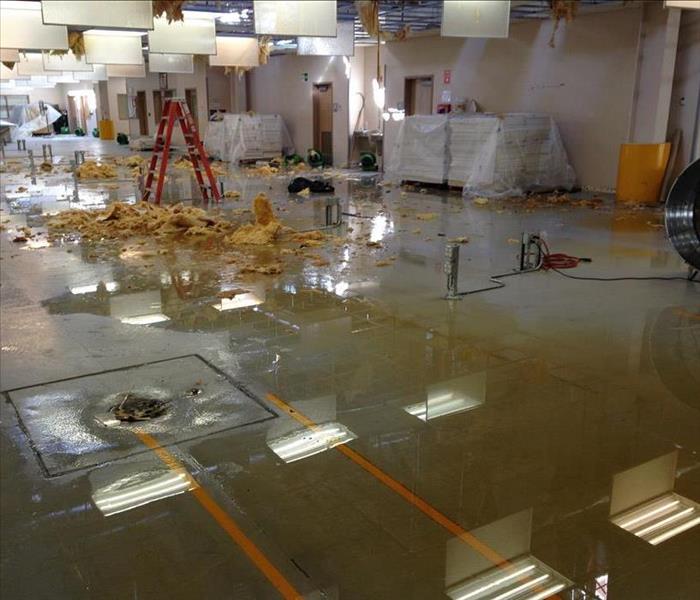 Water damage in Ogden, UT commercial property.
Water damage in Ogden, UT commercial property.
Ogden, UT, businesses face many challenges that result in insurance claims. From damaged pipes and fire damages to product liability and theft, each of these threats carries the potential for significant financial losses. Take a look at some of the most common types of business property loss claims:
- Theft may come result from the dishonesty of employees or people outside of the business.
- Freezing water may result in leaking pipes, either visible or hidden, and cause a lot of water damage.
- Clogged pipes and overflowing toilets quickly result in the need for expensive repairs.
- Wind and hail damages affect landscaping, buildings, outdoor structures, and vehicles parked on the property.
- Fires are very destructive and often result in a combination of fire, smoke, and water damage.
- Customer injuries include slips and falls, being hit by falling inventory, or spilling on themselves.
- Product liability is one of the least common forms of insurance claims, especially as business leaders carefully follow safety procedures and protocols.
A closer look at the numbers regarding these claims shows that water damages account for a high percentage of the claims. This number doesn't include the cost of losses because of firefighting efforts.
Turn Your Attention to Damage Prevention
Once business leaders recognize the frequency of water-related damages, as well as the cost of repairing damaged pipes or recovering from flooding, it's only natural to take preventative steps to reduce those risks. Some of these efforts include training workers on how to turn off water mains, maintain pipes and temperatures, and keeping rain gutters clean. Insurance representatives may provide additional suggestions in an effort to reduce costs and prevent the need for repairs.
Reach Out to Local Resources
Not all water damage can be prevented. For example, flooding that results from a sudden, severe rainstorm can quickly affect a large amount of your building. Water damage cleanup and repair professionals can handle repairs and recovery efforts. However, with advice from experienced insurance reps and cleanup and repair professionals, you may avoid some of the most expensive repairs.
4 Tips for Protecting Employees and Workplaces From Coronavirus Exposure
4/1/2020 (Permalink)
 SERVPRO is here to help.
SERVPRO is here to help.
Even in cities where the coronavirus hasn't made an appearance yet, it seems the virus is impacting every area of daily life. This is true for business owners as well. While there's still a lot to learn about coronavirus exposure, there are tips available for Ogden, UT, employers who want to protect their employees from exposure and illness.
Coordinate With Local Health Officials
The Centers for Disease Control and Prevention recommend that business owners work closely with their local officials. Public health officials in local areas should have accurate information for your area that are specific to the community. The CDC offers guidelines for coronavirus cleanup and mitigation depending on the level of impact in your community.
Encourage Potentially Affected Employees to Stay Home
The coronavirus symptoms are a dry cough, fever, and shortness of breath. If your employees have these symptoms, they should stay home from work until they have met the CDC-established home isolation criteria. If your employees are well but family members are sick, ask employees to alert their supervisor and stay home from work.
Reduce Contact Exposure in the Workplace
The CDC recommends steps such as minimizing face-to-face contact between your employees, especially for older employees and any with medical conditions. Additionally, it's important to contact professional cleaning companies to disinfect and treat your workplace. These professionals may have access to trainings specific to coronavirus exposure and should be purchasing the products that government health agencies recommend for COVID-19 cleanup.
Provide Training for Employees
One of your goals as a business owner is to maintain daily operations as long as you can safely do so. As you educate your employees regarding the recommendations from the CDC (such as appropriate handwashing.) As your staff and workers follow best practices regarding preventative social distancing and coronavirus cleanup at work and at home, they can reduce the spread of the virus.
Although there are many concerns regarding coronavirus exposure, following the recommendations from the CDC and your local Ogden, UT, public health officials is the best way to protect the safety of your employees and workplace. It's important that businesses and individuals work together to slow the spread of the virus.
Fire Safety Tips
3/30/2020 (Permalink)
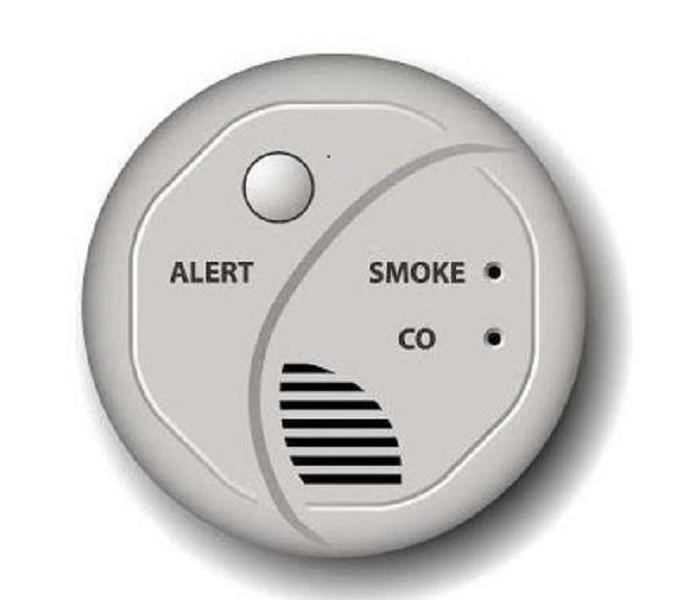 Smoke detectors are important to keep your family safe.
Smoke detectors are important to keep your family safe.
When you own a home in Ogden, UT, you hope that a house fire is something you never have to deal with. If a fire does break out, however, you want to be properly prepared so that your family can get out in time.
Three fire safety tips for ensuring that your fire alarm system is the best it can be.
1. Install Smoke Detectors
Your best chance of getting out of your home quickly in the event of a fire is being alerted to its presence. One detector won't cut it. You need at least one detector on every level of your home, one inside each bedroom and one outside every sleeping area. It is advisable to purchase a combination of ionization and photoelectric alarms, because they detect different types of smoke. You may even be able to find alarms that detect both types of fires.
2. Maintain System
Your fire alarm system needs proper maintenance to ensure that it continues to keep you and your family safe. You should test the batteries in each detector every month and replace them once a year. The smoke detectors themselves need to be replaced every 8-10 years. You may not be able to prevent smoke damage to your home, but with a properly maintained system, you can be alerted in time to avoid personal injury.
3. Practice Escape Plan
Newer building materials burn much faster and hotter than older homes, causing both greater fire damage and heightened danger for those inside. If you live in a newer home, you need to be able to get out quickly. Talk to your family about your emergency escape plan, but don't stop at having the conversation. Practice exactly what you need to do when you hear the smoke alarm go off. Knowing what to do in a fire can save lives.
Your fire alarm system is essential to keeping you safe during a fire. Make sure it is adequate and in good working order so that it can alert your family at the first sign of a fire.
How Long Does a Commercial Generator Last?
3/30/2020 (Permalink)
 Is your business ready for when disaster strikes.
Is your business ready for when disaster strikes.
Unless you're the owner of an old-fashioned candle-making company, electricity is probably central to your business operations. When disaster strikes Salt Lake City, UT, you can rely on your commercial generator to kick in and keep your business thriving. It'll be there to light the way for the commercial property restoration company that's working to get your company back on its feet, too. It's the workhorse of your company's emergency preparedness plan, and when it's working properly, you may not even know that it's there.
What Commercial Generators Do
Commercial generators provide power when your regular service is interrupted. Hiccups in your electricity can be caused by an assortment of causes:
- Floods
- Earthquakes
- Lightning
- Snowstorms
- Trees and other impacts on power lines
- Auto accidents involving utility poles
- Animals
- A citywide overload of the power grid
Generators themselves can be operated by a variety of sources, including natural gas, diesel, liquid propane and solar power. Each type of fuel carries its own pros and cons. Natural gas, for example, is provided by your utility company, which means you'll have a limitless supply during a lengthy outage. Diesel-powered generators, meanwhile, are commonly viewed as the most reliable.
How Long Commercial Generators Last
Generally speaking, a commercial generator should last for an average of 3,000 hours. More sophisticated models may stretch that out to 5,000 hours. In a lifetime of average use — running it during the day during power outages and shutting it off at night — most generators can last for between 20 to 30 years.
How You Can Make It Last Longer
Like most commercial equipment, machinery and appliances, the keys to longevity are regular maintenance and prompt service. Addressing generator problems as soon as they arise, or better still, preventing all together them via regular inspections, can maximize your generator's lifespan and help you get the most out of your investment.
A commercial generator is a crucial component of many businesses' disaster contingency plans. Take care of yours and it can provide safe, reliable back-up for decades.
What To Know About an Emergency Board Up
3/4/2020 (Permalink)
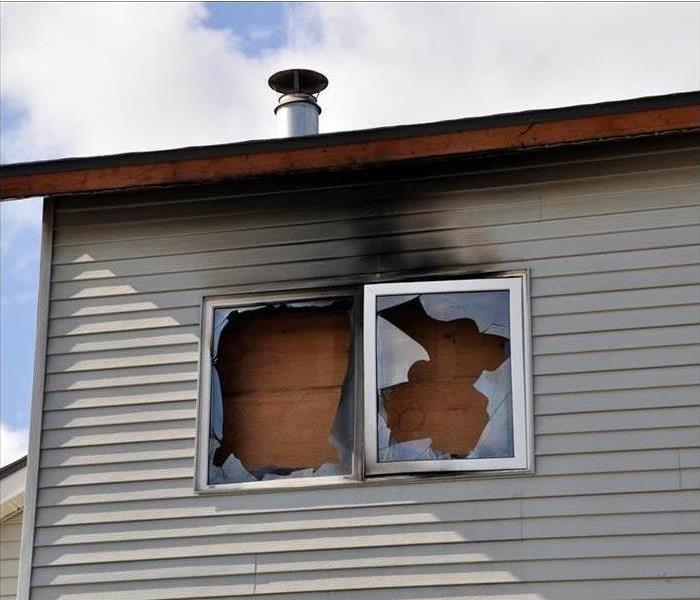 Boarding up after a fire in a West Haven, UT home.
Boarding up after a fire in a West Haven, UT home.
If your West Haven, UT, home has suffered fire damage then you may be looking at the option of doing a board up over the damaged area. There are several reasons you may want to consider this process. Here’s what you may want to know.
How Boarding Up Can Protect Your Home
Having an emergency board up done to protect damaged areas of your home can help protect it from a number of things. Boarding over can
- Prevent inclement weather such as rain or snow from getting inside
- Reduce the possibility of wind damage
- Discourage animals from exploring the damaged area
- Reduce the risk of human trespassers
- Prevent a liability claim from someone who got into the damaged area
- Help maintain insurance eligibility
Insurance Benefits of Boarding Over Damaged Areas
In many cases, your insurance company may require you to board up the damaged area before they will accept your claim. Most policies cover only the initial damages and consider a failure to protect the area before repairs can be made an act of neglect. Boarding over the damage can help show them that you take your responsibilities as a homeowner seriously.
Proper Boarding Up Procedures
Boarding over the damage involves using ply-board or tarps in most cases. It’s important to cover all the damage and secure the edges to prevent weather or animals from getting in. A professional restoration service may be able to do the job for you if you have concerns.
Boarding over the damaged area can not only help protect your home from weather and animals, but it may be required by your insurance company when filing a claim. Fortunately, many restoration services offer the option to have their team do the board up for you. When it comes to protecting your home from fire damage, boarding over the area can help save both time and further costly repairs down the road.
Feel Confident About Your Cleanup and Mitigation Company
2/28/2020 (Permalink)
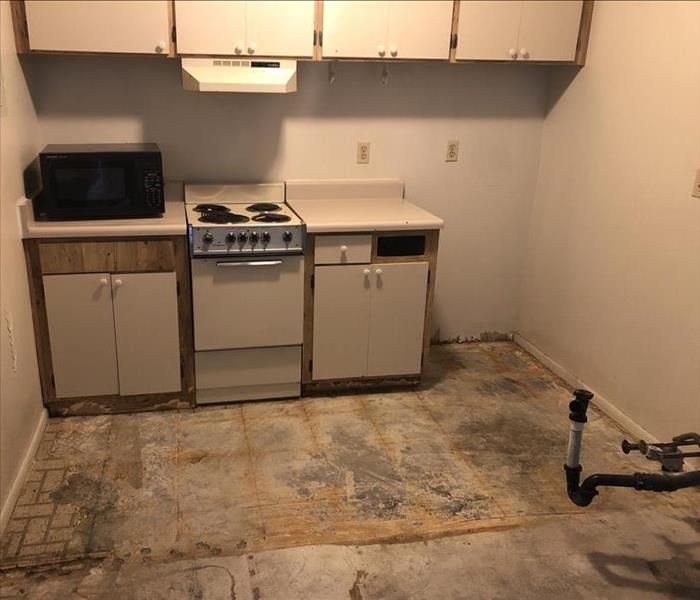 This kitchen suffered water damage in Ogden, UT.
This kitchen suffered water damage in Ogden, UT.
After your home has been damaged by water, fire, mold, or another disaster, some of the most important people you'll work with are those from a cleanup and mitigation company. Unfortunately, there are a lot of restoration professionals who claim to do great work but don't really have the equipment, expertise, or IICRC training to provide satisfactory results.
How can you recognize reputable technicians from less-than-savory companies?
Ask the Right Questions
One of the first steps you should take is to ask questions about each company and its technicians. The right questions can lead to informative answers:
- Does the restoration company have licensing, certifications, and insurance?
- Will the company give you a copy of their licenses, insurance, and bond paperwork
- How are estimates made? (Avoid any company providing estimates over the phone?)
- How long has the company been in your area?
- Are they local or nationwide?
- Will the restoration company work with your insurance provider?
It may be tempting to choose the first technician to offer you a fast, low estimate, but you'll find that this often leads to sloppy work and extra costs down the road.
Talk to Your Insurance Provider
Following any disaster, you should call your insurance provider as soon as possible. When you make this phone call, ask for recommendations regarding disaster cleanup and restoration companies. This insurance company is also interested in getting good results while keeping costs low. You're almost sure to get a recommendation for a restoration provider with the proper mitigation certificate and licensing.
Learn About Licensing and Credentials
Another vital step is understanding industry standards and credentials. The Institute of Inspection Cleaning and Restoration Certification, or IICRC, is a non-profit organization that sets the standards for inspection, cleaning, and restoration companies. The organization also provides certifications, so individual professionals and entire companies can become certified to show they are compliant with those standards.
The best results for your home restoration come from working with a Ogden, UT, company that has proper IICRC compliance, trained professionals, and the tools to do the job. Take time to research the company, get answers to vital questions, talk to your insurance provider, and understand credentials and compliance.
4 Ways to Remove and Prevent Shower Mold
2/21/2020 (Permalink)
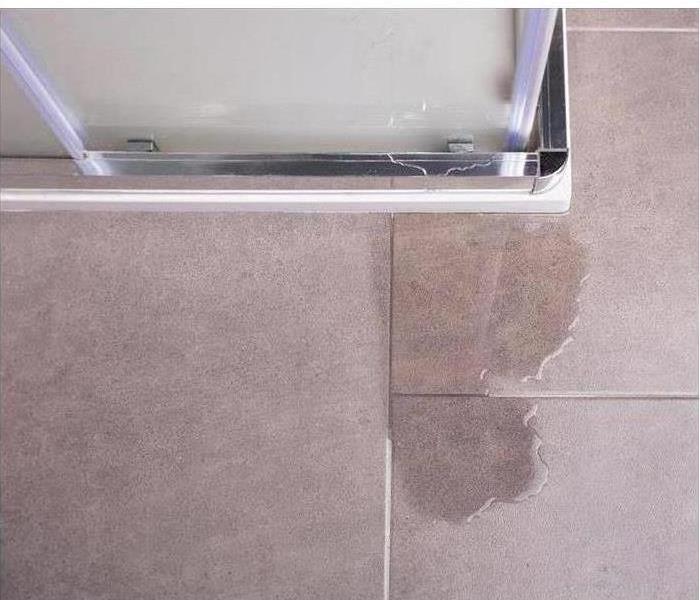 Shower leak can lead to mold damage in Ogden, UT.
Shower leak can lead to mold damage in Ogden, UT.
Shower mold is a common issue in most households. Although, the problem typically manifests as mildew rather than mold. If you have to deal with mold, then you definitely want to address the issue quickly, but you will also want to find ways to prevent the further development of the mold. Try the following four methods for removing and preventing mold.
- Commercial cleaners
- DIY cleaner
- Professional removal
- Preventatives
4 Methods For Removing and Preventing Shower Mold
Commercial Cleaners
The first method that people tend to use without much consideration when they have a moldy bathroom is a commercial cleaner. While these cleaners can be useful, they can also be harsher than necessary and should be used with caution. If you choose to use a commercial product, be sure to use protective gear, such as gloves and eyewear, and open a window.
DIY Cleaner
When it comes to DIY shower mold removers, there are a few options. First, you can use undiluted vinegar for a non-toxic alternative. Second, you can mix one cup of Borax with a gallon of water for an effective fungicide solution. Last, you can use a bleach solution, but because of the fumes, it is not advisable.
Professional Removal
Next, if you are concerned about the type of mold your dealing with, or are curious if the substance is black mold, then consider hiring a professional mold remediation company in Ogden, UT. These professionals will inspect and test your home, making sure they take any necessary safety precautions.
Preventatives
Once the mold is cleaned and removed, it is necessary to ensure that you are taking all precautions to prevent future mold development. For example, always use the bathroom fan when taking a shower. Also, when you are done bathing, open a window and let the space dry. Last, consider using a squeegee to get excess moisture off of tiles and hard surfaces.
Shower mold or mildew is a common household occurrence, but it is necessary to take action to ensure the problem doesn't become unmanageable. Follow the steps above to clean and reduce the risk of reoccurrence.
3 Reasons To Board Up Your Building After a Fire
2/13/2020 (Permalink)
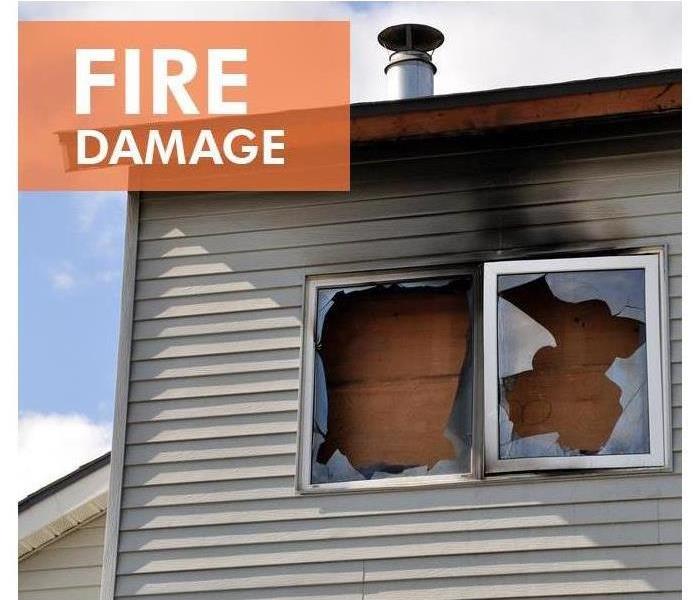 Fire damage in a commercial building in Ogden, UT can leave 3 potential problems.
Fire damage in a commercial building in Ogden, UT can leave 3 potential problems.
A fire in your commercial building in Ogden, UT. leaves the structure vulnerable in several ways. Not only does the fire damage itself make the building unstable, but the gaps left leave it open to outside elements and invaders. Using a board-up service after a fire protects your building from three potential problems.
3 Potential Problems After A Fire In Commercial Building
1. Deter Vandals and Looters
It's not unusual for looting and vandalism to occur after a fire. First, the fire itself usually renders your usual security measures, such as your alarm system, useless. There are also typically large, gaping holes in the building that make getting in easier for would-be thieves. Placing boards over the holes left by broken windows and roof damage acts as a deterrent. In order to get past them, trespassers would need special tools and would probably draw a lot of unwanted attention. A protected building is less likely to seem like it's worth the effort necessary to invade it.
2. Discourage Animals and Vermin
Humans aren't the only ones who try to get into a building with fire damage. Stray dogs, feral cats, rodents, birds and snakes may also take the opportunity to seek shelter there. They may create nests that fire restoration experts have to remove before they start mitigation. They may also leave urine or droppings in the building, which just adds to the damage. Blocking the vulnerable areas keeps them from gaining entry.
3. Shield From Rain and Debris
The fire cleanup process also involves water damage repair due to the huge amount of water needed to put out the fire. A hole in your roof leaves your building susceptible to more even more water damage if it rains. Even if every day is sunny, wind can blow debris through open holes in the building. Board-up services keep outside elements where they belong.
Cleaning up after fire damage can be a lengthy process during which you need to protect your building. Boarding up your building after a fire safeguards it against further problems.
What Should You Do if You Smell Mold but Can’t See Mold in Your Business?
2/11/2020 (Permalink)
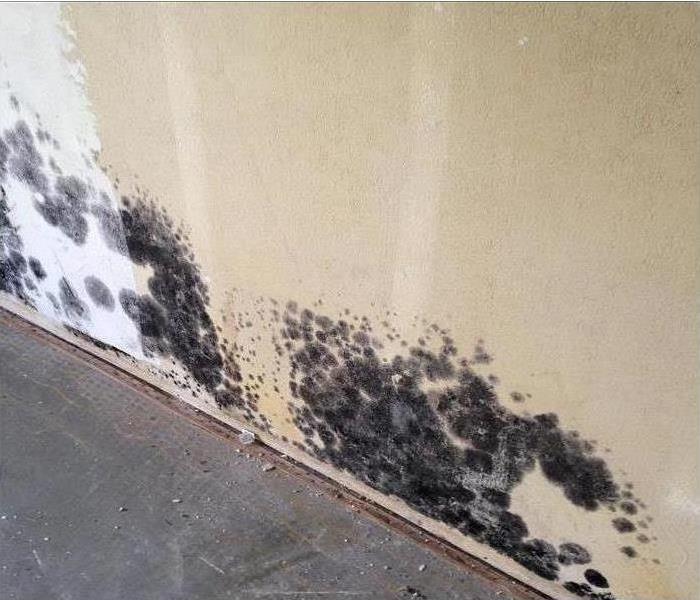 Mold and moisture damage in Ogden, UT.
Mold and moisture damage in Ogden, UT.
How to Locate Mold
Mold growth can quickly disrupt your business in Ogden ,UT, but sometimes finding the exact location of the growth can be difficult. If you notice a mold smell in your building but don’t see any visible indicators of the growth, there are several things you can do to locate the mold.
- Follow the Smell
In some instances, you might be able to smell mold before you can see it growing. The musty odor is often strongest close to where the mold is growing. If you’re unsure where the mold is growing, check the areas where the scent smells the strongest. It can also be helpful to be aware that mold can grow inside walls or other areas that aren’t visible, so it’s wise not to ignore the fungus smell.
- Check Common Areas Where Mold Grows
Understanding where mold commonly grows can help lead you to the source of the mold smell in your building. Mold most often grows in damp areas, though it is possible for mold to grow in dryer areas as well. If the smell of the mold alone doesn’t help you locate the growth, then it can be useful to check in areas such as bathrooms, near water heaters or by pipes.
- Use a Thermal Camera
If you have followed the smell of mold and have also searched in areas where mold commonly grows but still don’t see mold, you can consider using a thermal camera. A thermal camera will show you where water is located in spots that you can’t see. Since mold tends to grow near water and in moist areas, this tool might be able to help you locate the mold and could save you the time of searching yourself.
A mold smell in your building can often be an indicator of mold growth. If you notice a musty, mildew smell in your business or if you see signs of mold growth, it’s sometimes useful to contact mold removal and remediation professionals.
4 Steps to Take Before a Storm
1/29/2020 (Permalink)
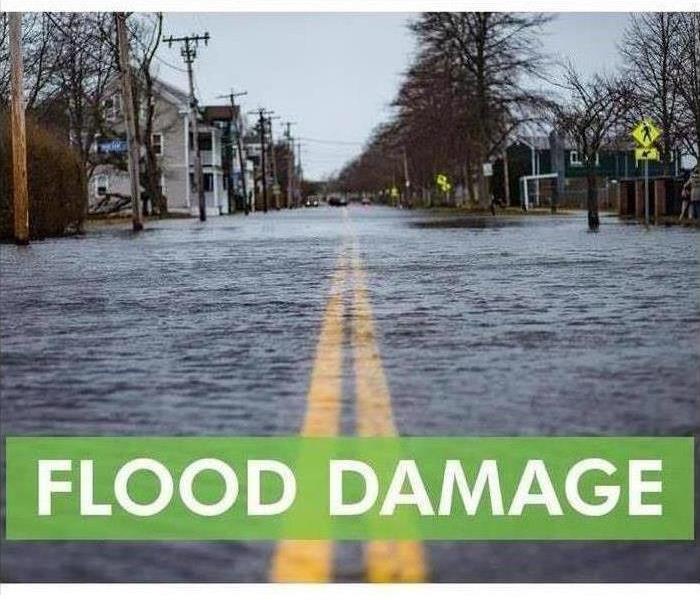 Storms can be a leading cause for flood damage in Ogden, UT.
Storms can be a leading cause for flood damage in Ogden, UT.
If you are expecting a storm in Ogden, UT, and want to protect your home and family, there are several steps that you should follow. Flood water can cause quite a bit of damage and can compromise your safety, so keep these tips in mind during bad weather.
4 Tips to Follow Before a Storm
1. Have a Safety Plan
One of the most important things to do before a storm is to create a plan. You should know what you will do if the power goes out or, if the storm is severe, what you will do in the case of a flooded building. Consider all possibilities and be prepared.
2. Check Doors and Windows
To protect your home from water damage, you should make sure all of your doors and windows are properly sealed. A loose or broken seal can allow water to get inside, and even a small amount can cause problems. It is a good idea to perform regular maintenance on your home to prevent this.
3. Inspect the Outside of the House
If you have cracks in the exterior of your house, moisture can build up inside of the walls and damage the structure of the building. It can also contribute to the growth of mold. This fungus spreads quickly in dark, moist environments and can cause both discoloration and a musty odor.
4. Create an Emergency Kit
Depending on the type and severity of the storm, the contents of your emergency kit may vary. Some useful items to include are flashlights, radios, batteries, canned foods, and bottled water. Flood water can cause contamination, so you shouldn’t consume anything it touches.
Being prepared can help keep both your family and your home safe. However, if you do experience damage from a storm or flood water, a water damage remediation specialist can help get your home back to its previous condition. They can perform remediation, make repairs and restore damaged belongings.
4 Plumbing Problems Most People Experience
1/29/2020 (Permalink)
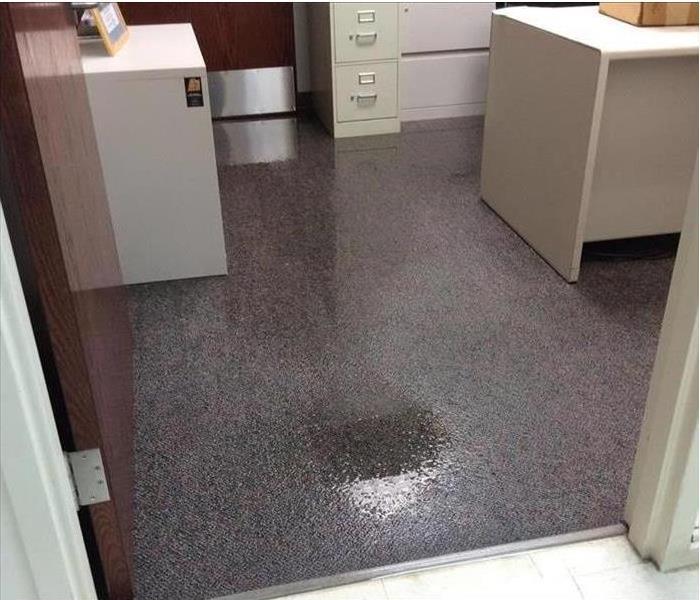 Plumbing problems can lead to water damage in your business in Ogden, UT.
Plumbing problems can lead to water damage in your business in Ogden, UT.
When it comes to plumbing, there are numerous issues that can come up. Before your Ogden, UT, property is subjected to potential water damage or skyrocketing water bills, it's a good idea to get to know the four most common plumbing problems and their warning signs. After all, knowledge is power — even when it comes to a clogged toilet.
4 Plumbing Problems
1. A Leaky Faucet
One of the most common issues is a leaky faucet. This may not be one of the more serious problems, but a leaking or dripping faucet is not only incredibly irritating to listen to, but it can also make your building's water bill go through the roof.
2. Clogged Drains
For those who are experiencing any type of clogged drain, whether it is a clogged toilet or a clogged sink, it is a good idea to contact a professional to come out and inspect it. Many retail drain cleaners can actually end up making the problem worse, so it is wise not to delay in calling the pros.
3. A Running Toilet
A running toilet can waste a great deal of water per day, making it a minor problem that can quickly become incur major costs. While this is not quite as serious as having a blocked toilet or stopped-up drain, it usually requires need a plumber’s expert advice to fix.
4. Low Water Pressure
While low water pressure often occurs in older buildings, there is typically a reason why it begins happening. If your property has showers, it might be time for new showerheads, or there could be a hidden leak somewhere in the building. No matter the cause, there is usually a way to restore normal water pressure.
These are just a few of the most common plumbing problems that indicate something more serious might be going on under the surface. Whether you have a faucet in the building that is leaking, a clogged toilet or drain, a sudden drop in water pressure, or constantly running toilets, most issues can be resolved quickly with the help of experienced commercial plumbing specialists.
Common Business Losses From Water Damage
1/29/2020 (Permalink)
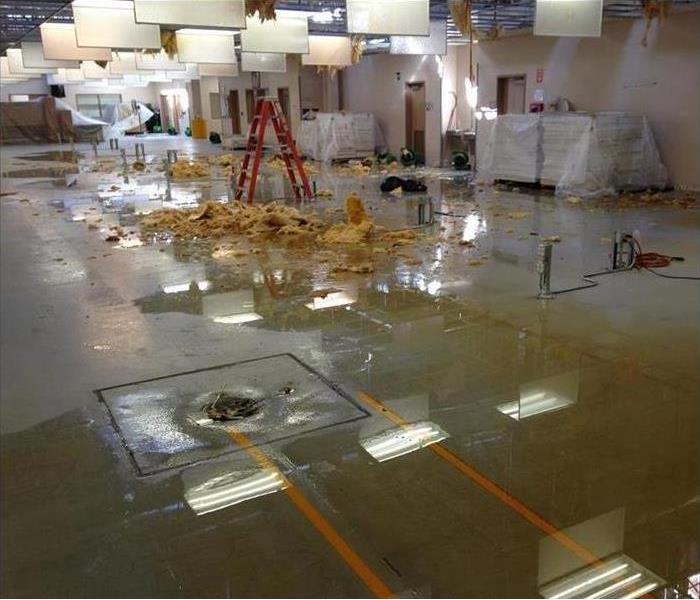 Ceiling gave in leading to water damage in local business in Ogden, UT.
Ceiling gave in leading to water damage in local business in Ogden, UT.
A business in Ogden, UT, may suffer a number of losses after sustaining water damage, which can be caused by accidents or maintenance issues, or a combination of both of these factors. Damaged pipes can lead to flooding, or an improperly maintained fire sprinkler system can discharge water when no fire is present. Here are some common business losses associated with this type of issue.
3 Common Business Losses Due To Water Damage
1. Building Structure
Depending on the location of any destruction, the building structure itself may be affected. Walls or flooring may need to be torn out and replaced. A leaking roof can cause damage to the ceiling, and both the roof and ceiling may need to be repaired.
Demolition may also be required simply to access the source of the water. Any sort of activity of this type may result in additional expenses.
2. Assets
Leaking pipes in the walls or ceilings of your building can cause damage to business assets. These items may include essential equipment, furniture, or even inventory. Flooding is not even necessary to incur harm of business assets, as even small amounts of water can contribute to significant losses.
Damaged pipes can also lead to the malfunction or destruction of essential building systems. Your business will then need to repair or replace these systems, such as your fire sprinklers, electrical equipment, or plumbing components.
3. Business Revenue
While your business is preoccupied with repairing water damage, revenue opportunities are passing you by. Problems such as these divert both attention and funds from business development and marketing. It may be difficult to quantify lost business revenue, but it can still be quite significant.
Regardless of the causes of the problem or the extent of the water damage repairs required, business losses can range from minor to catastrophic. Whether damaged pipes resulted in a plumbing leak that was confined to a bathroom, or a broken water main let loose a flood of water through your entire operations center, every business must plan for the inevitable losses that will follow.
Which Smart Smoke Detector Is Right for Your Home?
1/7/2020 (Permalink)
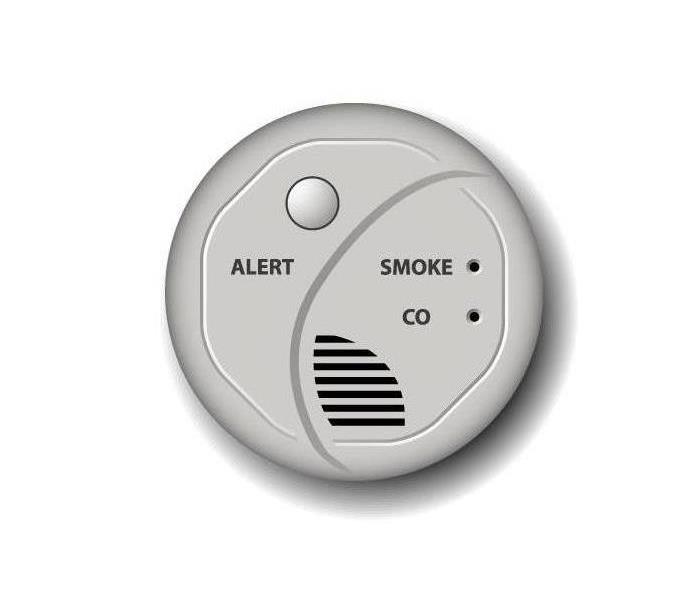 Smoke detectors are important for fire safety in Ogden, UT.
Smoke detectors are important for fire safety in Ogden, UT.
Smoke alarms are an effective way to prevent a home fire and the damage and cleanup that follows, but they can be inconvenient. What if a smoke alarm is sounding at home, but you’re at the grocery store or on vacation? While a standard smoke detector works if you’re in the house, smart smoke detection systems send a push notification to your phone or tablet to let you know within seconds that a home detector has been triggered. Which of these new smart systems is best option for home fire safety?
3 Options of smart smoke detectors.
Internet-Connected Detectors
Switch out your standard smoke detectors with internet-connected ones and you’ll be notified when any alarm goes off. This can be a pricier option, but it offers several advantages:
- Allows you to turn off false alarms from your phone or tablet
- Notifies when you need to replace a battery (no more chirping!)
- Scans for carbon monoxide, depending on the model
Listeners
If you have a larger home, the cost of switching out every detector may be a little too much. Consider starting out with a smart listener device. This nifty gadget scans for the frequency of your smoke alarm and sends you a notification when it hears that frequency. While you won’t be able to silence the smoke detector remotely, a listener should provide coverage for a whole floor of your house and multiple detectors in one (smart) go.
Smart Batteries
The most cost-effective solution, a smart battery connects to your Wi-Fi and sends you a notification when the smoke detector it’s connected to is triggered. With a lifespan of around five years, you won’t need to replace one often, and these batteries send a notification when they are running low. Unlike with a listener device, you can turn off the alarm remotely by deactivating the battery.
Fire safety is no small matter. Whether you’re replacing every smoke alarm with a smart upgrade or you just want to try out a new system, these options can ensure your Ogden, UT, home’s safety from afar.
Getting Standing Water Out of Your Building
12/27/2019 (Permalink)
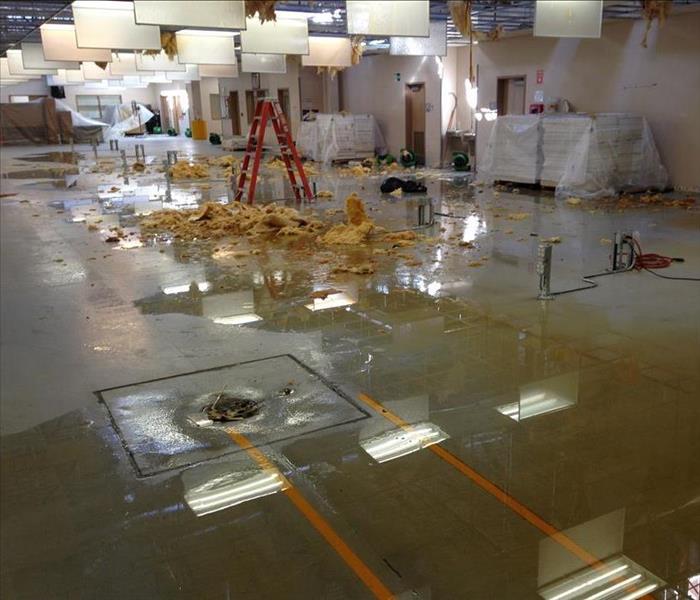 Storm damage in local commercial building in Ogden, UT.
Storm damage in local commercial building in Ogden, UT.
When a storm passes through Ogden, Utah, you never know what to expect. Your commercial building could be left untouched, or you may have to deal with standing water in your lower levels. When the damage is more severe, you have to know what to do next. Calling in a storm restoration professional can help you react quickly and smartly. Removing standing water from a building requires the use of special equipment and fast actions.
Removing Standing Water
Know What To Use
Standing water can lead to major structural problems and mold growth if allowed to linger in your building for too long. Because the issues can be huge, you need to know what equipment to use. Often, this type of remediation requires the following:
• Truck mounts
• Trash pump
• Dehumidifiers
This commercial-grade machinery can pump out liquids, sludges and solids, which means you don't have to worry about sifting through the dirty water to let the machine run smoothly. Instead, the professionals come in, hook up the hoses and start pumping out your unwanted water.
Know How To Prepare
Once the water has been drained out of your building, you likely don't want to repeat the process ever again. While the professionals can do a good job of helping you dry out the space, it requires a lot of work and can cause your business to lose production time. You can reduce the chances of standing water filling up your building after a storm by installing a sump pump. This pump sits in a hole and works to remove water as it starts to fill up a space. In other words, it works to stop flooding before it leads to standing water.
Storms can often leave you surprised. No one expects to find two feet of standing water in his or her building, but it does happen. If you ever find this unpleasant surprise on your property, you need to hire someone who has the equipment needed to remediate it.
3 Parts To Check When a Commercial Toilet Keeps Running
12/27/2019 (Permalink)
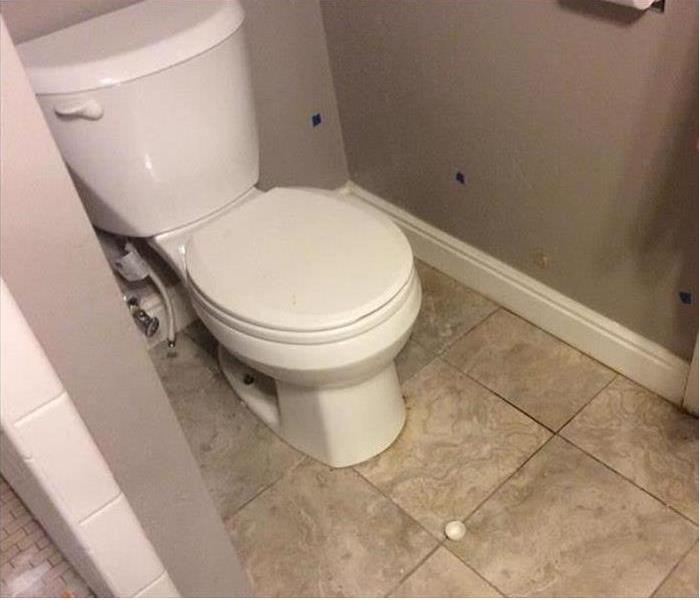 Toilet overflow in Ogden, UT.
Toilet overflow in Ogden, UT.
Your Ogden, Utah, commercial building’s toilets need to run efficiently for the comfort of your employees and customers. However, when a plumbing issue like a toilet overflow happens, it can be unpleasant for everyone. This problem may be caused by a variety of issues, but some can be fixed without the assistance of a plumber. If a toilet keeps running, there are several parts you can check before you call in a flood damage and cleanup service to ensure your bathrooms are properly dried and deodorized after an overflow.
3 Steps to Check on Commercial Toilets
1. The Gasket
Once you turn off the water, the first step to take is to open the winter flushometer. This is the part that causes a commercial toilet to flush efficiently. Use a screwdriver and a wrench to remove this unit’s lid. The gasket is usually located directly under the lid. If it contains a lot of debris or buildup, carefully remove and clean the gasket thoroughly.
2. The Weep Hole
A commercial toilet’s weep hole controls its suction, so when it gets clogged, this may affect water flow and cause a continuous flush. When you remove the toilet’s gasket, take a close look at this small hole. Clean it carefully with a slim tool and ensure all the sediment and other debris is cleared out. This may stop a toilet from flushing constantly and prevent a future toilet flood.
3. The Flange Cover
If this part is loose or corroded, it may be affecting the unit’s proper operation and contribute to a toilet overflow. Note how much water you find under the cover. If there is enough to run over when you remove it, there may be a leak in the gasket or the cover might be faulty, and one or both could need replacing.
When your Ogden, Utah, commercial building experiences a toilet overflow, it can be embarrassing and unpleasant. However, you may be able to repair it by checking and cleaning a few important parts inside the unit to prevent future floods.
Hidden Dangers of Water Damage
12/27/2019 (Permalink)
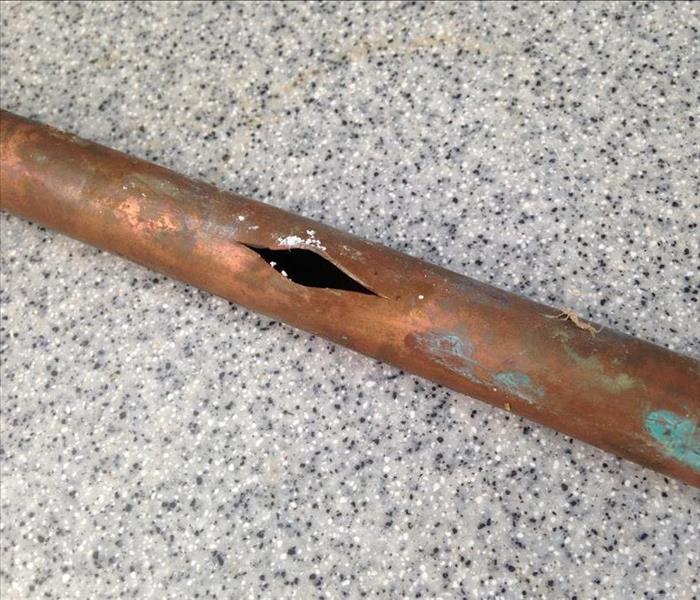 Pipe damage can cause severe water damage and leave hidden damages if not treated correctly.
Pipe damage can cause severe water damage and leave hidden damages if not treated correctly.
Flood water from a broken pipe can strike your home and leave standing water covering your floor. While many sources may describe how to clean the damaged area by yourself, the problem is often the unseen damage left behind by the water. Rather than tackle the situation by yourself, consider these hidden problems.
Categories of Water
Although the water flooding your home may look harmless, there is a real possibility the liquid is filled with harmful substances. Flood water has been classified into three categories to help water restoration and remediation professionals understand the danger levels of contaminates:
• Category 1: This water comes from a clean source such as a broken pipe and is considered safe.
• Category 2: This water contains a minor amount of contamination and is judged as unsafe.
• Category 3: This water is grossly contaminated and often comes from sources containing fecal matter, harmful chemicals, or pesticides.
Determining the danger level of the flood water in your home can be a difficult task. That is why most homeowners rely on a professional team to remove the contaminated water and sanitize the area.
Secondary Damage
Days and weeks after the water is gone, signs of secondary damage can suddenly appear. Mold colonies can emerge from still-damp areas of the home such as behind floorboards. The lower portion of walls can begin to sag, crack, and crumble. Tiles can start moving and the grout surrounding the ceramic area may disintegrate. Hardwood floors may also show signs of buckling and warping. Sadly, secondary damage can make an appearance long after your insurance company has settled your water damage claim.
Unseen Hazards
A quick response is often the answer to eliminating water damage problems. Whether it is a broken pipe or torrential rains that flood your home in Ogden, Utah, removing the water in a timely manner can minimize hidden damages and mitigate unseen hazards.
Understand Your Commercial Fire Damage Estimate
11/29/2019 (Permalink)
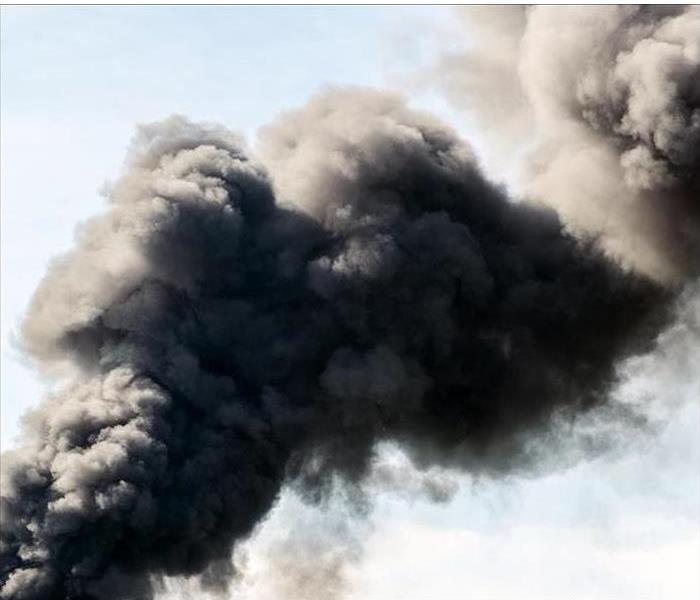 Commercial fire can be devastating in Ogden, UT.
Commercial fire can be devastating in Ogden, UT.
You take decisive, quick action when a fire threatens your business in Ogden, Utah. Now that the fire is out it is equally important to act with urgency. The longer you wait to get an estimate on the fire damage, the longer it takes for the restoration process to begin and the more business income you stand to lose.
What Is Included in the Estimate?
• An emergency fire restoration professional typically arrives within four hours of receiving your call to perform the initial assessment. When a commercial fire occurs, you need to worry about more than fire damage. Water damage from firefighting efforts is also present. The assessment includes evaluating safety issues as well as inspecting water, soot, smoke and other damages related to the fire.
• The cost of emergency services, mitigation and reconstruction are included in the projected cost. Make sure the total estimation that you receive includes all aspects of the work and firm, detailed pricing with a guarantee.
When Does the Restoration Work Begin?
• Talk with your commercial insurance agent as soon as possible after the fire occurs. Usually restoration specialists send the estimated costs to the insurance company for approval before work begins.
• After approval the restoration company generally begins work on emergency services right away. This may include extraction of excess water, tarping the roof or boarding up doors and windows to prevent further damage.
• You are provided an approximate timeline for the remaining work including cleaning, deodorizing, sanitizing and restoring the building structure and contents to pre-fire condition.
When a commercial fire spreads throughout your business in Ogden, Utah, you don’t have time to waste. Make sure everyone is safely out and call firefighters to extinguish the blaze. Immediately call your insurance agent and have a fire restoration company provide you with an estimate to begin the process of putting your business back in working order.
Securing a Building After a Fire
11/9/2019 (Permalink)
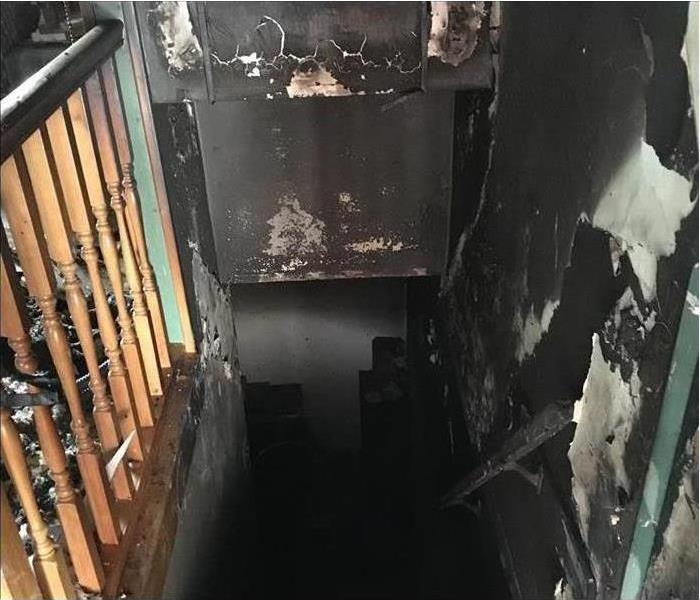 Fire damage in a Ogden, UT home.
Fire damage in a Ogden, UT home.
When fire strikes your building in Ogden, UT, there isn’t anything you can do to stop the chain of events from the moment the fire begins until the second the fire trucks drive away and leave you with the resulting fire damage. What happens next is under your control, however, and you should make sure you are in the best possible position to ride the coming storm of possible looters, scammers, and restoration delays.
3 Ways To Secure Your Building After a Fire.
Access
While your building may seem secure, the following may find a way in:
- Looters
- Burglars
- Squatters
- Errant youths
Fortunately, there are things you can do to make sure people do not have easy access to your property.
Holes
When fighting a fire, the officers may use an ax to knock holes into the roof, walls, or attic areas of your business to spray water onto the flames. When they leave, the holes remain. The heat from a fire can also break windows and sky lights and leave gaping holes.
To prevent intruders from rummaging around or looting in areas of your building that were not destroyed by the flames, soot, or smoke, you must first secure the holes by covering the areas securely with large pieces of wood. If you are unable to put the boards up by yourself, contact a group specializing in fire cleanup and restoration. They can quickly lock-down your building and secure the fire damage area.
Doors
Fire personnel often kick doors down to get immediate access to the fire in a building. When that happens, the locks, door jambs, and walls surrounding the doorways may be broken or damaged. To prevent easy access by intruders into the open doorways, and to prevent looters from having unhindered access to your office possessions or equipment, use more of the large pieces of wood to cover doorways. If necessary, ask the fire cleanup team to help secure the open areas.
Although you cannot guarantee your business will be safe after a fire, you can take steps to secure it from easy access by criminal elements of society. You can help prevent being a target after a fire by repairing fire damage.
Keep Mold From Spreading Using These Five Easy Steps
11/6/2019 (Permalink)
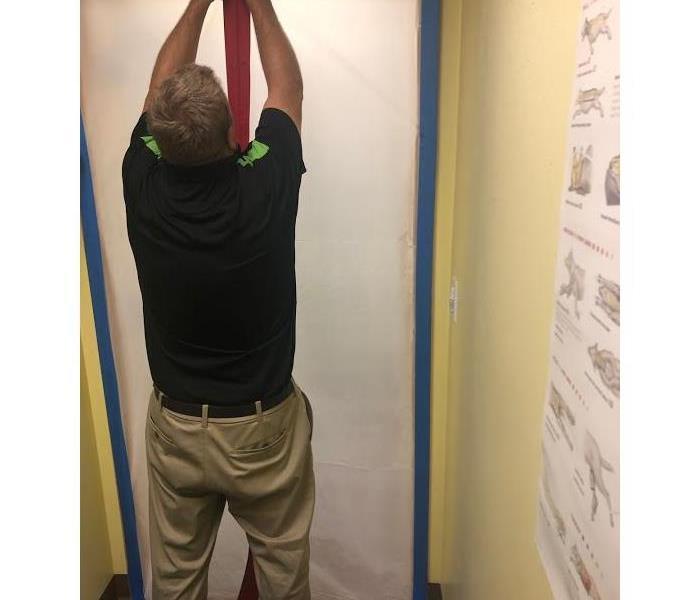 SERVPRO professionals placing containment to avoid mold from spreading in Ogden, UT.
SERVPRO professionals placing containment to avoid mold from spreading in Ogden, UT.
Mold spores are ever present in the world. If given the right conditions, these small seeds can land in warehouses, businesses or offices and grow into full-fledged blooms. Mold outbreaks should be addressed immediately. Mold cleanup can be done by owners of commercial properties in Ogden, UT, who wish to undertake the task by themselves. If you notice mold growth in your commercial space, take the following five measures in order to ensure that you do not cross contaminate clean and unaffected areas when removing your business’s mold contamination.
5 Steps to Keep Mold From Spreading
1. Wear Old Clothes When Removing Mold. Mold spores will cling to the clothes you wear. Don an old shirt, pants and shoes that you won’t mind throwing away after the cleanup.
2. Cover Air Vents. Your air conditioning and heating systems are great conduits for spreading spores throughout your commercial space. Be sure to fully cover your ventilation systems before undertaking any mold cleanup.
3. Hide the Vacuum. Keep your vacuum far from your work area to ensure that this spore-sucking machine doesn’t convert itself into a spore-spewing machine.
4. Spritz Mold Patches. It may seem counterintuitive to add humidity to the water-loving organism that you are trying to kill. However, a quick aqua spray will reduce the number of spores that are released into the air as you work.
5. Dispose of Affected Materials. Tainted carpet, flooring, rugs, curtains and clothing should be placed into a heavy-duty plastic garbage bag and disposed of immediately. Be sure to seal the bag by taping it closed before tossing.
Given the right conditions, mold can grow in any commercial space. If you decide to tackle your commercial property’s mold problem on your own, be sure to take a note from mold-removal professionals who take special precautions to avoid cross-contamination when conducting their mold cleanup. By taking the above simple yet important measures, owners of commercial spaces in Ogden, UT, can prevent the cross-contamination of mold in their businesses or offices when removing their mold outbreak.
3 Main Characteristics of Mold
11/6/2019 (Permalink)
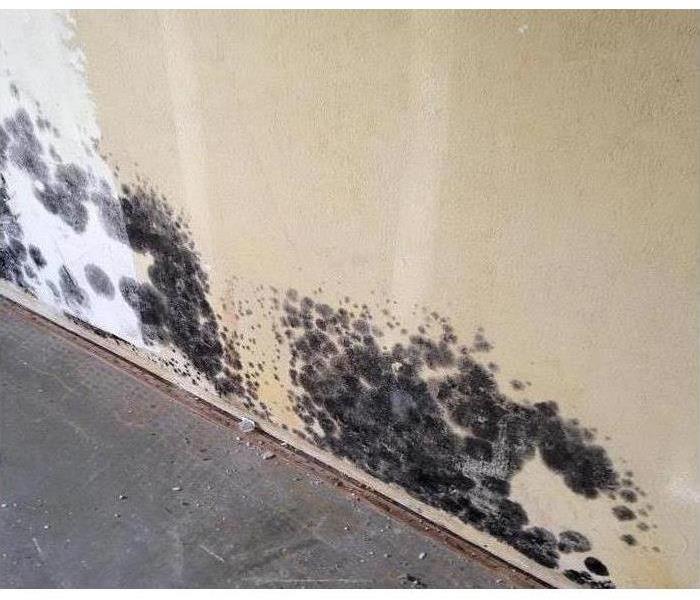 Mold damage in Ogden, UT.
Mold damage in Ogden, UT.
You probably have many checklists that apply to your commercial building in Ogden, UT. With all the regular maintenance routines and proper repairs, finding black mold growth – or any type of mold invasion – can come as a complete shock. However, you might be wondering what mold looks like in the first place. The following list includes three angles from which you can better identify mold.
3 Ways To Identify Mold
1. Color
If you've observed some funky colors spring up around the company sink, you may have a mold cleanup in your future. Most commonly known as Alternaria, this kind of mold frequents bathrooms and other damp places indoors. This fungus spreads quickly, so you'll want to address even minor problems in a timely manner.
2. Texture
Another way you can detect mold in your building is by observing its texture. If you've tried cleaning those worn-out carpets time and again to no avail, a mold called Cladosporium could be your culprit. In addition, not all dark colored molds are black mold; this dark colored mold with a suede-like texture loves to thrive in carpets and upholsteries. Cladosporium is also known to grow in both warm and cool climates. Some molds may take on powdery textures, while others can take on a slimy appearance.
3. Smell
Most Ogden, UT, residents are familiar with that musty smell that can pop up in basements or other dark, humid places. Black mold could be present if that earthy smell just won't go away. Even if your building has never had past moisture damage, this kind of mold easily feeds on damp drywall and even dusty corners. Hiring a professional is usually your best bet when it comes to detecting types of mold, since identifying and determining all those subtle growth spots could prove challenging.
Allotting the time to determine what sort of mold has taken over your commercial building can be a stressful task in itself. By relying on the mold remediation pros to do the job for you, you can have peace of mind that your building is fully inspected and free of fungus.
Getting Standing Water Out of Your Building
10/24/2019 (Permalink)
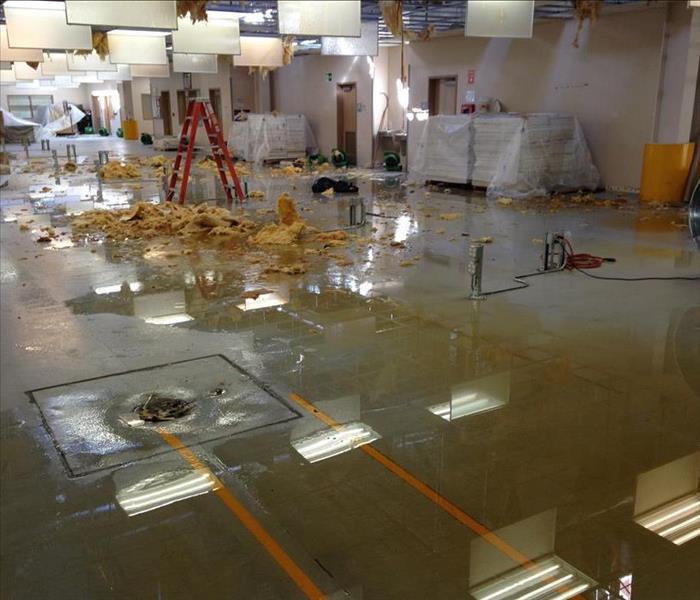 Business in Ogden, UT flooded due to storm that caused the ceiling to colapse.
Business in Ogden, UT flooded due to storm that caused the ceiling to colapse.
When a storm passes through Ogden, UT, you never know what to expect. Your commercial building could be left untouched, or you may have to deal with standing water in your lower levels. When the damage is more severe, you have to know what to do next. Calling in a storm restoration professional can help you react quickly and smartly. Removing standing water from a building requires the use of special equipment and fast actions.
What to expect from a Storm Restoration Team
Standing water can lead to major structural problems and mold growth if allowed to linger in your building for too long. Because the issues can be huge, you need to know what equipment to use. Often, this type of remediation requires the following:
• Truck mounts
• Trash pump
• Dehumidifiers
This commercial-grade machinery can pump out liquids, sludges and solids, which means you don't have to worry about sifting through the dirty water to let the machine run smoothly. Instead, the professionals come in, hook up the hoses and start pumping out your unwanted water.
Know How To Prepare
Once the water has been drained out of your building, you likely don't want to repeat the process ever again. While the professionals can do a good job of helping you dry out the space, it requires a lot of work and can cause your business to lose production time. You can reduce the chances of standing water filling up your building after a storm by installing a sump pump. This pump sits in a hole and works to remove water as it starts to fill up a space. In other words, it works to stop flooding before it leads to standing water.
Storms can often leave you surprised. No one expects to find two feet of standing water in his or her building, but it does happen. If you ever find this unpleasant surprise on your property, you need to hire someone who has the equipment needed to remediate it.
3 Parts To Check When a Commercial Toilet Keeps Running
10/24/2019 (Permalink)
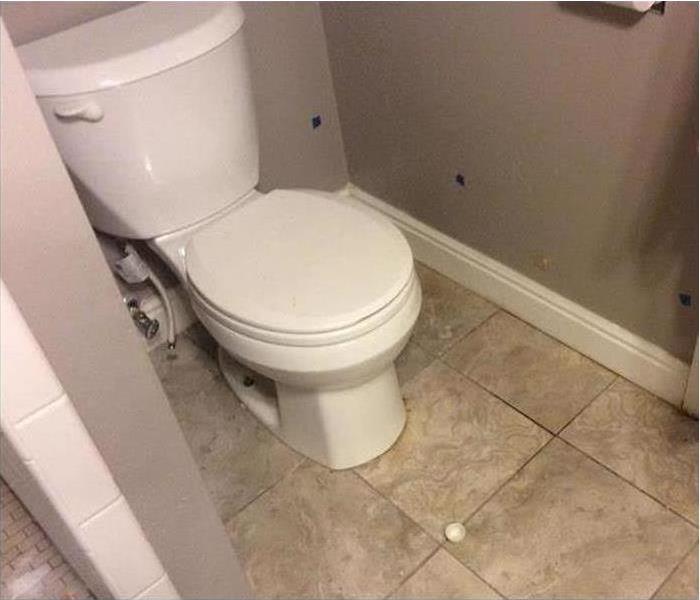 Toilet overflowed in a commercial building in Ogden, UT.
Toilet overflowed in a commercial building in Ogden, UT.
Your Ogden, UT, commercial building’s toilets need to run efficiently for the comfort of your employees and customers. However, when a plumbing issue like a toilet overflow happens, it can be unpleasant for everyone. This problem may be caused by a variety of issues, but some can be fixed without the assistance of a plumber. If a toilet keeps running, there are several parts you can check before you call in a flood damage and cleanup service to ensure your bathrooms are properly dried and deodorized after an overflow.
Running Toilet Overflow - Commecial Building Flood
1. The Gasket
Once you turn off the water, the first step to take is to open the winter flushometer. This is the part that causes a commercial toilet to flush efficiently. Use a screwdriver and a wrench to remove this unit’s lid. The gasket is usually located directly under the lid. If it contains a lot of debris or buildup, carefully remove and clean the gasket thoroughly.
2. The Weep Hole
A commercial toilet’s weep hole controls its suction, so when it gets clogged, this may affect water flow and cause a continuous flush. When you remove the toilet’s gasket, take a close look at this small hole. Clean it carefully with a slim tool and ensure all the sediment and other debris is cleared out. This may stop a toilet from flushing constantly and prevent a future toilet flood.
3. The Flange Cover
If this part is loose or corroded, it may be affecting the unit’s proper operation and contribute to a toilet overflow. Note how much water you find under the cover. If there is enough to run over when you remove it, there may be a leak in the gasket or the cover might be faulty, and one or both could need replacing.
When your Ogden commercial building experiences a toilet overflow, it can be embarrassing and unpleasant. However, you may be able to repair it by checking and cleaning a few important parts inside the unit to prevent future floods.
Hidden Dangers of Water Damage
10/24/2019 (Permalink)
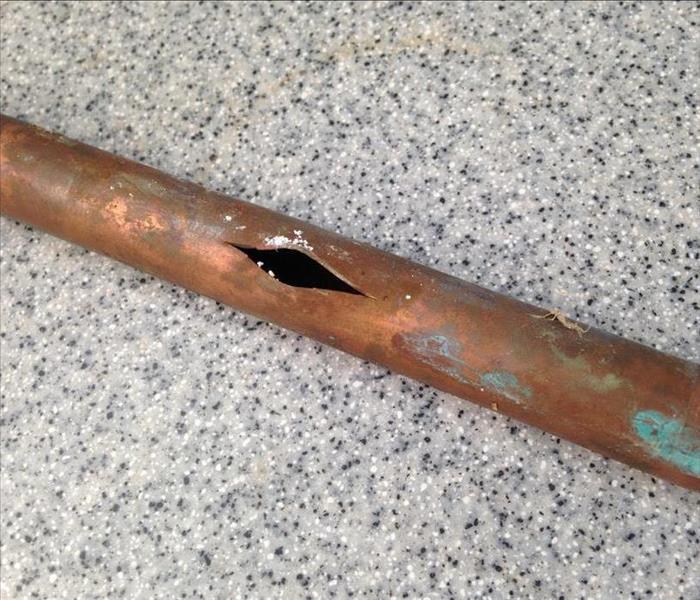 Broken pipe found in a home in Ogden, UT.
Broken pipe found in a home in Ogden, UT.
Flood water from a broken pipe can strike your home and leave standing water covering your floor. While many sources may describe how to clean the damaged area by yourself, the problem is often the unseen damage left behind by the water. Rather than tackle the situation by yourself, consider these hidden problems.
Categories of Water Damage
Although the water flooding your home may look harmless, there is a real possibility the liquid is filled with harmful substances. Flood water has been classified into three categories to help water restoration and remediation professionals understand the danger levels of contaminates:
• Category 1: This water comes from a clean source such as a broken pipe and is considered safe.
• Category 2: This water contains a minor amount of contamination and is judged as unsafe.
• Category 3: This water is grossly contaminated and often comes from sources containing fecal matter, harmful chemicals, or pesticides.
Determining the danger level of the flood water in your home can be a difficult task. That is why most homeowners rely on a professional team to remove the contaminated water and sanitize the area.
Secondary Damage
Days and weeks after the water is gone, signs of secondary damage can suddenly appear. Mold colonies can emerge from still-damp areas of the home such as behind floorboards. The lower portion of walls can begin to sag, crack, and crumble. Tiles can start moving and the grout surrounding the ceramic area may disintegrate. Hardwood floors may also show signs of buckling and warping. Sadly, secondary damage can make an appearance long after your insurance company has settled your water damage claim.
Unseen Hazards
A quick response is often the answer to eliminating water damage problems. Whether it is a broken pipe or torrential rains that flood your home in Ogden, UT, removing the water in a timely manner can minimize hidden damages and mitigate unseen hazards.
3 Steps To Help You Recover Quickly From Water Damage
9/29/2019 (Permalink)
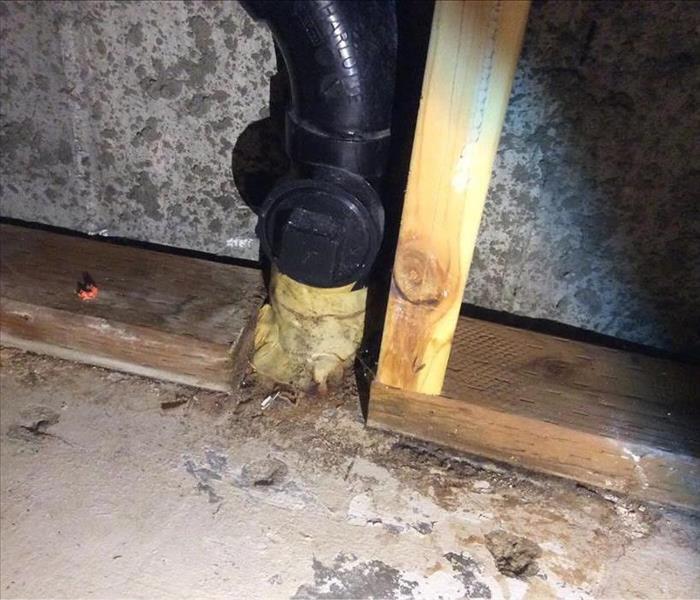 Residential water damage in Ogden, UT due to a crack in seal.
Residential water damage in Ogden, UT due to a crack in seal.
Plumbing problems can happen when you least expect them. If your home in Ogden, UT, has suffered from water damage due to broken pipes or other issues, you may be wondering how to approach the seemingly daunting task of water cleanup. Luckily, there are a few simple things you can do to help your home recover from water damage.
3 Steps to Recovery
1. Dry
It is important to make sure soaked or damp areas are dried out completely. When left alone, moisture can create the perfect conditions for mold growth. Besides being unpleasant to look at, mold growing in your home can be unsafe for several reasons:
• Odors
• Health Risks
• Staining
By thoroughly drying out wet areas, you can save yourself a lot of trouble by never giving mold a chance to invade your home.
2. Replace
If the water damage in your home involves black or gray water, then you may have to take some extra precautions. Black (or gray) water is water that has been contaminated by unsafe microorganisms or other elements. Most outside flood water or water from sewage leaks is considered black water. Items and materials that are porous or able to soak up water may have to be replaced after being contaminated by black water.
3. Disinfect
Items that can’t soak up water, such as objects made of materials like hard wood, plastic, or metal, probably don't need to be replaced. You can make sure these items are safe even if the flooding has involved black water by disinfecting and cleaning them before you put them back in use.
By working to keep mold away and cleaning up contaminated items, you can bring your home back to its original state after water damage has occurred. It can be helpful to contact a restoration service to assist you with some or all of the process, so you can return your life to normal as soon as possible.
Commercial Building Water Damage Tips
9/25/2019 (Permalink)
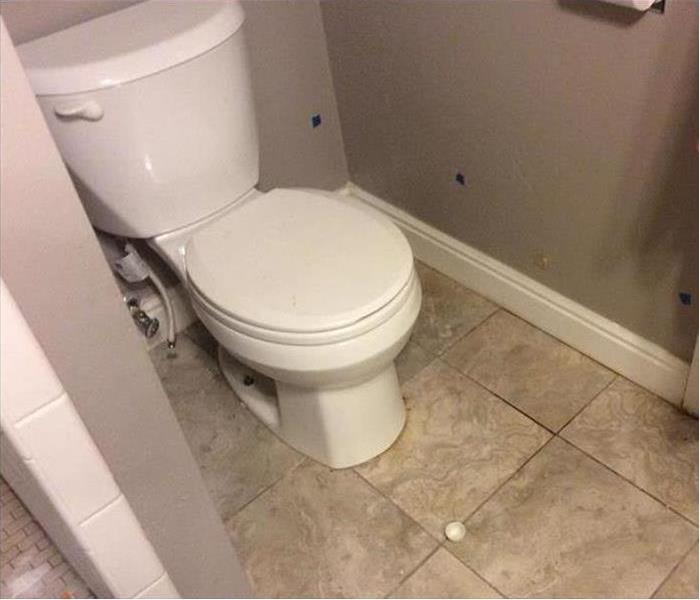 Flooded toilets can be a cause of water damage in your business in Ogden, UT.
Flooded toilets can be a cause of water damage in your business in Ogden, UT.
Water is capable of causing quite a bit of destruction in a short amount of time. Whether it is due to broken pipes or flooding, water damage needs to be dealt with immediately.
3 Tips for Water Damage in Your Commercial Building.
Determining the Cause
There are a variety of ways water can sneak into your building and cause damage. The sooner you can locate the problem the sooner you can implement water cleanup procedures. Damage may be due to:
• Flooding
• Bursting pipes
• Leaking Roof
• Malfunctioning HVAC system
• Backed-up water main/sewer
Once you know the source of the water, you can determine what to do next. If it is gray or black water, you are dealing with a much more serious issue. You will most likely need to call a water mitigation specialist in Ogden, UT. Clean water sources can still cause a lot of damage if left unattended, but these types of issues aren’t associated with disease and bacteria.
Flood or Sewage Damage
Flood or sewage backup may contain deadly bacteria that could grow and propagate in your home. You will need to go beyond simply eliminating the moisture. Certified restoration companies have the appropriate equipment and expertise to deal with the situation. When dealing with a commercial building, it is imperative to reestablish a safe environment for employees and customers.
Clean Water Damage
If you aren’t dealing with gray or black water, the cleanup is a little easier. It is important to dry the area out quickly. Building materials and insulation can wick moisture behind walls and lead to mold. Proper cleanup may require flood cuts and bringing in industrial size fans and dehumidifiers. Professional services are helpful in these situations as well.
If you are dealing with damage from flooding or other water sources, take care of the problem as expeditiously as possible. You want to prevent as much further damage as possible.
Steps To Prepare Your Home for Winter
9/24/2019 (Permalink)
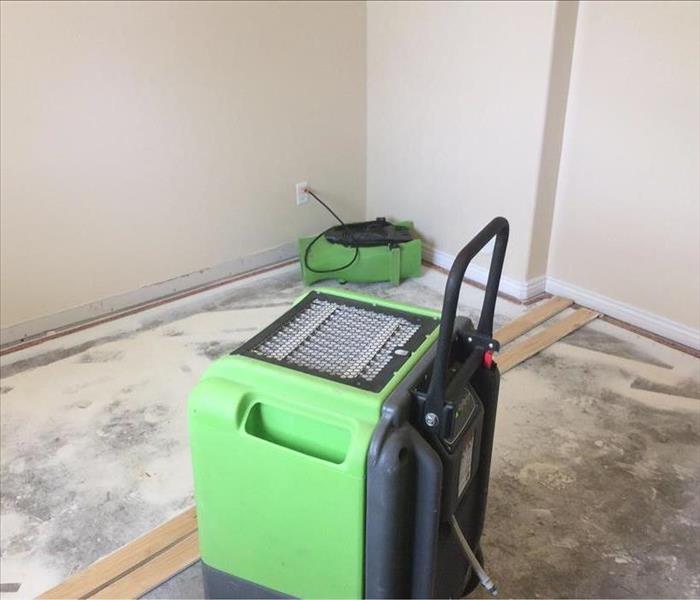 This Ogden, UT home suffered water damage.
This Ogden, UT home suffered water damage.
It’s true that heavy storms can come any time of the year. However, each region has a specific storm season. Before big storms threaten your home in Ogden, UT, there are a few precautions you can take.
Before you secure your home, take a few steps to be sure you and your family stay safe from flood water:
• Make a plan
• Get extra prescription medications
• Put together a pack with water and food for a few days
• Have a way to listen to emergency broadcasts if the power goes out
In addition to completing these tasks, you should prepare your home to keep it safe from water damage.
Schedule Routine Maintenance
Every spring and fall, you should have a professional clean out your gutters and storm drains. This can make sure your system directs flood water away from your home. You should also verify that your roof is in great condition, as even small damage can cause significant problems during a storm.
Check Your Landscaping
Landscaping is more than just a beautiful display of plants. It can also function as a way to prevent having a flooded building on your hands. Be sure that your yard has a slope that takes water away from your home. Retaining walls can help with this.
Furthermore, you should check to ensure that the root systems of your trees are not damaging your foundation. Even small cracks can let flood water in and wreak havoc on your home.
Know What To Do in an Emergency
Some things you can't do until a storm is imminent. For example, you can keep your gas on until big storms are immediately coming. However, you can learn now how to turn off your home’s gas, water main, and power. Be sure that other adults in your home also know how to perform these tasks.
Get ready before a big storm hits Ogden, UT. Follow each of these steps and be as prepared as possible. If you still get water damage, be sure to call a cleanup crew immediately.
Flood Prevention in Large Cities
8/17/2019 (Permalink)
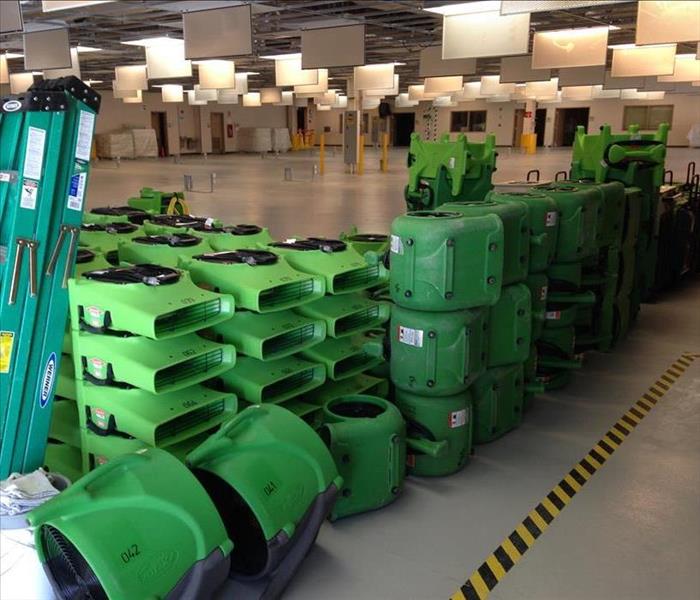 SERVPRO uses the proper drying equipment to restore your business after suffering flood damage due to heavy rains.
SERVPRO uses the proper drying equipment to restore your business after suffering flood damage due to heavy rains.
High water levels after a storm can cause severe flood damage. Lowlands and coastal areas are particularly vulnerable.
Many paved areas do not have proper drainage, which can lead to a buildup of water on city streets. Even traditional levees and dams are insufficient.
While an emergency restoration services company can help with flood cleanup, preventing storm damage entirely ensures that businesses continue running after a weather disaster. That is why some cities have implemented advanced technologies to keep out floodwaters.
Advanced Technologies in Large Cities to Keep Out Floodwaters.
Oosterschelde, Hagestein Weir and Maeslantkering in the Netherlands
Since 60 percent of Holland's population lives below sea level, it is no surprise that the Netherlands is known for its incredible flood prevention systems. One of these is called the Oosterschelde, or the Eastern Scheldt Storm Surge Barrier. These movable gates helped lower the tidal height.
The Hagestein Weir, meanwhile, is a movable dam that blocks high water from the Rhine River. It features two arched gates that can be rotated open or closed. This weir has been in place since 1960 and has inspired similar structures around the world.
A more modern structure is the Maeslantkering, or Maeslant Storm Surge Barrier. It features tanks that fill up as water rises. The weight of this water then keeps the walls of the barrier closed.
Watergates in Japan
As an archipelago, Japan is also prone to flooding. The country thus utilizes canals and sluice-gate locks. It also has numerous water gates that contain hydraulic motors. These gates can thus continue running during power outages.
Thames Barrier in England
The Brits created a hollow steel barrier to block high water from the Thames River. The revolving gates typically remain open so ships can get through but close during major storms. Perhaps some of these technologies will eventually make their way to Ogden, UT. In the meantime, property owners will have to rely on more old-fashioned techniques to stop flooding and prevent the need for storm cleanup.
Simple Facts About Carpets and Water Damage
8/7/2019 (Permalink)
 Water damage in Ogden, UT home.
Water damage in Ogden, UT home.
When a pipe break floods your home, the damage to property can be staggering. Although you may be confused about who to turn to and how to begin restoring your home, you can contact a trusted water removal company to help you handle the flood in your home in Ogden, UT. When the liquid is finally gone, homeowners often ask about their water damaged carpeting. Here are some simple facts to help you decide how to handle your soggy, smelly flooring.
7 Facts About Water Damaged Carpeting.
- Carpets are porous, so they love water.
That makes it easier to deal with them outside where they can be examined and stretched.
- Contaminated water makes for a contaminated floor.
Ask your professional water removal team about the flood water quality. If the liquid is classified grey or black, discard the carpeting and pad.
- Rugs and pads should be removed from the building within 24 hours of flooding.
Moving the wet items can prevent mold from developing inside your home.
- Carpeting often shrinks once it is dry again.
However, the good news is a professional carpet layer can often stretch it back out. The one exception may be carpeting containing wool.
- If the flood waters are clean from a pipe break, remove as much water as possible from the floor covering.
Next, remove the rug to a flat area and spread it out to completely dry. Use fans and dehumidifiers if possible.
- Laying damp carpeting can invite mold and mildew to grow.
It is best to wait to begin the replacement process until subfloor, pad, and flooring are completely dry.
- If you notice a yeasty odor once the carpets are back in place, call the professionals.
The smell can develop even weeks after your restoration is finished, and the odor usually means mildew or mold is growing inside your home.
Restoring your home can take time. Carpeting is only one small part of the damage that pipe break flood waters can do. If you understand the seven facts above, restoring or replacing your carpet is one portion of the flood problem you can be sure to conquer.
How To Deal With Residential Water Damage
7/8/2019 (Permalink)
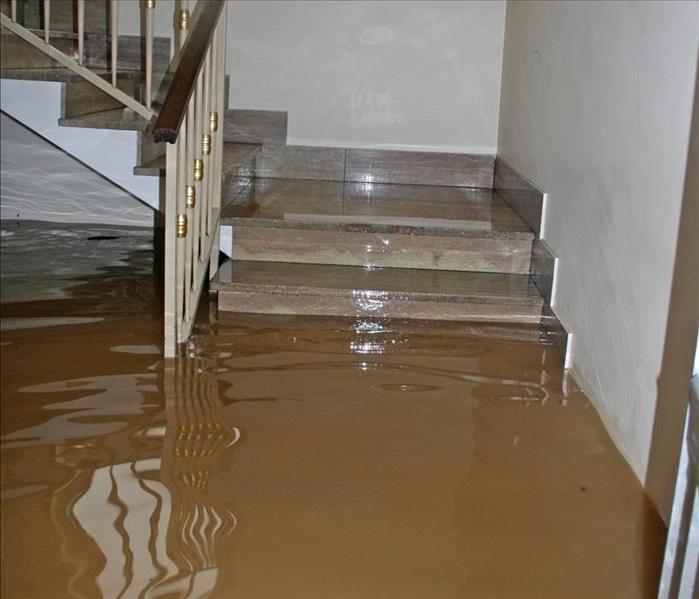 Dealing with water damage in an Ogden, UT home
Dealing with water damage in an Ogden, UT home
Dealing with water damage in Ogden,UT, can be very stressful. You want to get your home back to normal as quickly as possible, but you don’t want to put your loved ones or yourself in danger.
Types of Water
In general, the source of the water determines how safe it is. There are three classifications of water:
- Clean water (uncontaminated — water from sinks, rainwater, etc.)
- Gray water (potentially contaminated — water from aquariums, appliance drains, etc.)
- Black water (contaminated — flood waters, sewage pipes, etc.)
Note that water may begin as one type and become contaminated after it has been exposed, usually within two days. After two days, clean water should be treated as gray water and gray water should be treated as black water.
Treating Water Damage
The restoration process varies depending on the type and amount of water present but generally follows a similar pattern: evaluation, water removal, drying, cleaning and replacement. Pumps and wet/dry vacuums are used to extract most of the water. Then dehumidifiers, air dryers and fans can be used to remove any remaining water. With cases of gray and black water, cleaning surfaces after they are dry is particularly important. Depending on the material, this is done with sanitizing, disinfectant, antimicrobial or antibacterial solutions. After everything is clean and dry, it may still be necessary to replace some things, such as drywall or carpeting. Restoration specialists can help you through the entire process.
Secondary Concerns
In addition to the primary damage, there are other dangers to be aware of when dealing with water, namely electricity and mold. Water and electricity are an extremely dangerous combination. If any appliances or wiring are near the water, do not approach the area until it has been cleared by an electrician. While electrical problems arise immediately, mold takes a little longer, usually two or three days, to appear. Once it does, though, it can spread quickly and further damage your home.
Water damage is a fairly common problem, and with the right equipment it can usually be remediated. However, if not addressed quickly it can lead to more damage.
What Kind of Damage can Happen in a Business Fire?
6/24/2019 (Permalink)
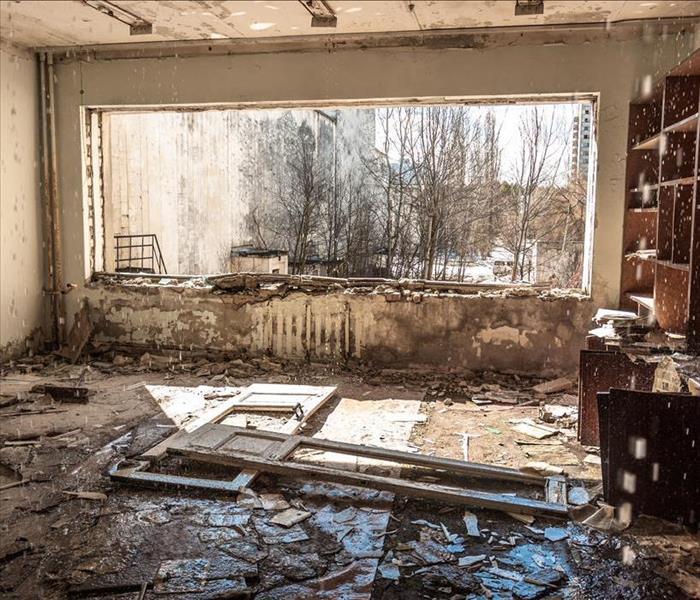 Fire and water damage in a Uintah, UT building
Fire and water damage in a Uintah, UT building
A fire at your place of business can feel like a disaster. You have built your hopes and dreams on the things that go on inside that building and have made a great investment to get it up and running. In the event a fire happens, you may have no idea what to expect and what needs to be done to deal with the fire damage.
Types of Damage From a Fire
As you would expect, flames may burn furnishings and other items that they come in contact with. There are other types of damage that can happen as well.
- Fire damage including consumption, melting and soot
- Water damage from fire hoses
- Potential additional damage from fire sprinklers
How can Water and Fire Ruin Items?
In some cases, flames may not be extensive, but the fire sprinklers may be triggered by the excessive heat causing water to spray down over the contents of the office. This water can be damaging to both the structure and content. Once the fire department deems it safe they can shut off the water so that no more destruction can take place.
In the case of a larger fire, emergency responders may apply endless gallons of water with a high-pressure fire hose in their efforts to extinguish the flames completely. That can cause a good deal of water damage to the structure and the contents. Sheet rock and sub floors, studs and the building’s contents can be stained, swollen, disintegrated or in other ways ruined by water.
It may sound hopeless, but rest assured there is help. In Uintah,UT, you can call on fire and water restoration professionals to assess the damage and to help with the cleanup. Items with water or fire damage may be salvaged or disposed of depending on the extent of the destruction. Once the cleanup is completed, a complete restoration can take place. You can get back to business and feel secure again.
Proper Maintenance To Reduce Insurance Claims
6/17/2019 (Permalink)
 Cold weather precautions: add extra pipe insulation to your pipes
Cold weather precautions: add extra pipe insulation to your pipes
Proper Maintenance To Reduce Insurance Claims
Your building in Wolfcreek,UT, can flood easily if a pipe bursts or a toilet overflows. Getting your business claim accepted by your insurance company may depend on how well you maintain your building. If the flood happens as the result of neglect, your claim could be denied. Here are some maintenance tips to help you reduce your number of claims and ensure that the ones you do make are not rejected.
Cold Weather Precautions
Toward the end of fall, your building becomes more vulnerable to the water damage that can result from freezing temperatures. A few habitual things you can do to protect your pipes from freezing during cold weather include:
- Add extra pipe insulation
- Maintain an indoor temperature of at least 55 degrees
- Remove ice from the roof to prevent buildup
Outdoor Maintenance
It can be challenging to maintain a strong building envelope throughout the year. Avoid an unnecessary business claim by performing regular roof inspections to make sure that it can withstand seasonal changes in weather. Keep your drainage system clear by having gutters and downspouts cleaned frequently. Perform a monthly check to find possible leaks, particularly around windows, doors and building joints. Reseal any problem areas you find to keep out unwanted moisture.
Emergency Preparedness
No matter what you do to prevent problems, a pipe break could still occur. If it does, it pays to be prepared. Make sure you know how to shut off your water main, and designate a specific person to do so during an emergency. Store valuable equipment off the floor so that a sudden flood is less likely to damage it. Keep emergency contacts such as water mitigation experts on hand so that you can start the remediation process as quickly as possible.
If your building floods, you can file a business claim to cover the cost of repairing the damage, but the best solution is prevention. You can lower your risk of flooding with proper maintenance.
Understanding Commercial Property Insurance Coverage
5/31/2019 (Permalink)
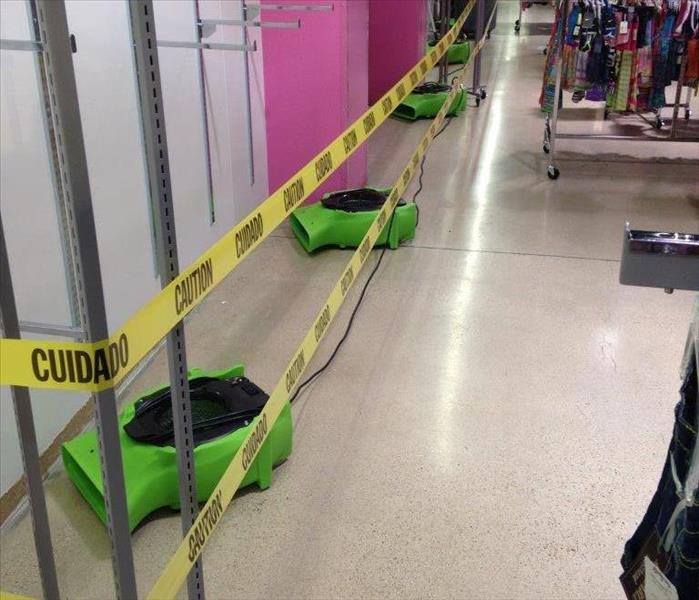 Commercial Water Damage in Ogden, UT.
Commercial Water Damage in Ogden, UT.
Commercial property insurance can be a highly complex topic that some business owners struggle with. What’s covered? What isn’t covered? What affects the costs of your premiums by driving them up or driving them down? Let’s take a look at what commercial property insurance looks like for property owners in Ogden, UT.
What’s Covered Under Commercial Property Insurance
Many times, what’s covered under commercial insurance depends on the package you choose. You may choose a bare minimum package that only covers liability for any damages not of your own making, or you may choose a more extensive package. Some things you can cover with commercial property insurance include:
- Structural damage caused by fire, accident, or natural disaster
- Theft of property or inventory
- Damage caused by trespassers or vandalism
- Fire, flood, or accident damage to equipment, furnishings, and inventory
- Personal injury liability on premises
What Brings Your Premiums Up
Multiple factors may impact why a commercial insurance provider would raise premiums on your building. If you live in an older building with a high risk of fire, for example, you may pay more for insurance. Your industry also matters; a restaurant has a much higher chance of fire than a daycare center. Neighborhood and proximity to fire services and police services can also play a role.
What Drives Your Premiums Down
That said, commercial insurance providers can also help you find ways to bring your premiums down. Just installing a security system can be enough to bring your premiums down by reducing your likelihood of theft or unwanted intrusion. If your building is constructed from newer fire-retardant materials, you may also see a drop in premiums.
Location once again has an impact, and the closer you are to fire and police services the lower your premium can be. Lastly, if your business is in a low-risk industry that doesn’t frequently have hazardous materials or situations on the property, you can hope to enjoy lower premiums.
Fire Cleanup Process the Pros Live By
5/31/2019 (Permalink)
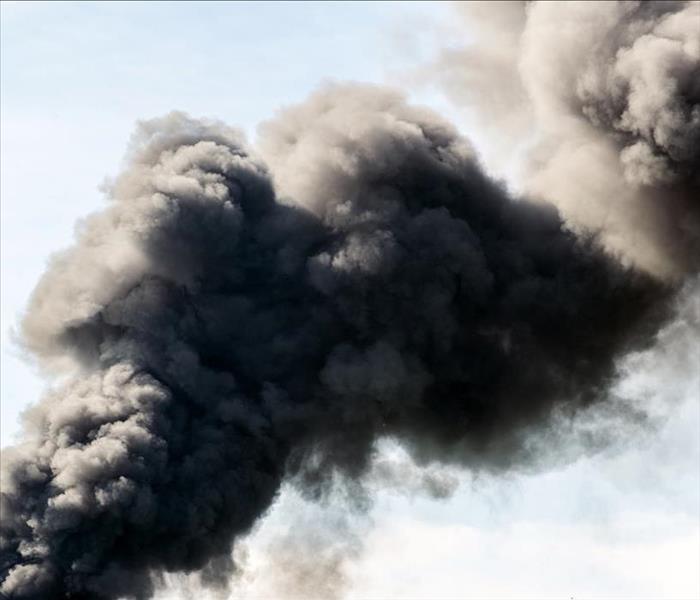 Smoke damage and other issues from a fire doesn't have to be overwhelming.
Smoke damage and other issues from a fire doesn't have to be overwhelming.
Anyone who has ever seen a fire up close knows what a harrowing experience it can be. Your primary concern should be safety, but cleaning up afterward and mitigating the damage can be a challenge. Damage from the flames and smoke damage can make it impossible to stay in your building. This is why you should get a professional fire restoration company on the case. A skilled pro will respond quickly and will use the best equipment and methods possible.
Fire Damage Restoration Process
Assessment
The first thing the company will do is inspect your Ogden, UT, building and determine the extent of the damage. The team will do this in a few different ways:
• Evaluate which items you can salvage and which you need to replace.
• Determine which tools to use.
• Look for all types of damage, including soot damage.
Remove Water
Firefighters use a lot of water to put out fires, so water removal is a significant part of the fire cleanup process. Specialists will use wet vacuums to suck up standing water from your floor as well as other heavy-duty water extractors to ensure that there is no water in your building.
Clean, Deodorize, Sanitize
This is s critical step because it makes your office safe once again. The team will remove soot from all affected areas. Technicians will also look for smoke damage and will clean items such as furniture, electronics, walls and flooring. The company will also sanitize the previously wet areas to discourage mold growth. The team will use equipment specially designed for these disasters.
Restore
Chances are good that smoke damage will be so great that the team will have to rip out carpet and drywall. The restoration company will then replace these items with new installations.
Don’t let smoke damage and other issues from a fire overwhelm you. An experienced fire cleanup team will make this process thorough and seamless.
Are You Supporting Mold Growth in Your Home?
5/23/2019 (Permalink)
 Stachybotrys is black or toxic mold. It thrives wherever there's high humidity.
Stachybotrys is black or toxic mold. It thrives wherever there's high humidity.
The more you know about black mold and how it affects your home, the better prepared you'll be to prevent trouble. Take a look at some of the facts, so you know exactly how to respond for the welfare of your home. Begin by identifying the most common types of mold that grow in homes.
- Acremonium typically grows in humidifiers, drain pans, and in window sealants.
- Alternaria is often found in showers, underneath leaking sinks, and around bathtubs.
- Aureobasidium grows behind wallpaper and on painted surfaces.
- Chaetomium grows where homes have suffered water damage.
- Cladosporium often grows in sofas, carpets, and inside cupboards.
- Mucor grows in patches around HVAC systems and inside ducts.
- Stachybotrys is black or toxic mold. It thrives wherever there's high humidity.
- Trichoderma causes heavy damage to building materials.
- Ulocladium is found around tubs and sinks. It also grows around windows with high condensation.
You may have noticed several of these throughout your home and not even recognized them as mold.
Learn How Mold Survives
Why are there so many types of mold in your home? Is there any way to get rid of them? The key to understanding this is know as much as possible about mold. For instance, hundreds of types of these living fungi exist in nature all around you. Most of the time, they don't cause any trouble, but play vital roles in the ecosystem. However, they are very adapted to living in spartan environments. Basically, mold only needs a bit of food and some moisture to establish a colony.
Prevent and Control Growth
Mold cleanup begins with home maintenance. Quickly repair any leaks or damages that take place in and around your home. Watch out for any spots that look or smell damp. If you suspect trouble, contact a mold remediation professional right away for inspections and sterilization of affected areas.
Avoid Trouble
Black mold doesn't have to be a big problem in your home. Before it can take hold and begin to spread, be as thorough as possible when completing household chores. Vigilantly dry up any spills, leaks, or flooding. Finally, contact South Ogden,UT, professionals when you suspect mold is already present.
4 Tips on Conducting an Emergency Fire Drill at Work
4/17/2019 (Permalink)
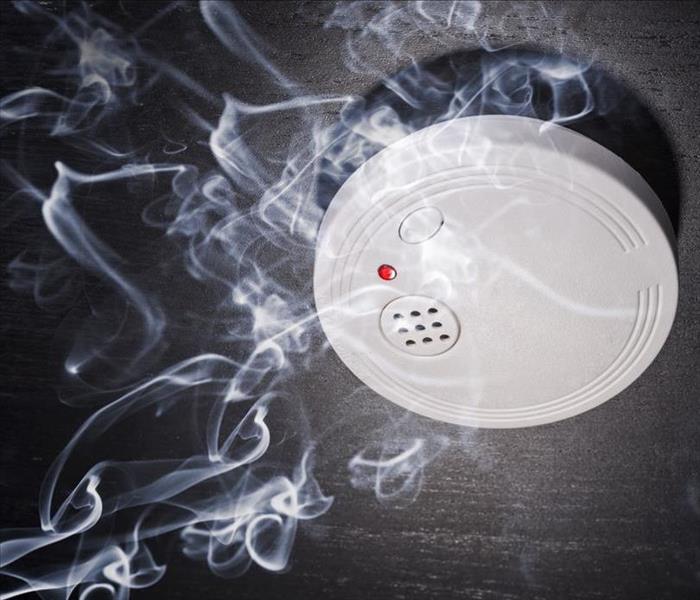 Test alarms monthly and replace batteries twice a year.
Test alarms monthly and replace batteries twice a year.
Unexpected emergencies can creep up on anyone at any time, even at work. Fires can be one of the most feared dangers because of the smoke, flames, and inability to see. That is why many business owners choose to have a fire drill in place for their employees. Once the drill is in place, employees can be certain of their escape route, which will aid in almost any other possible emergencies as well, such as windstorms, tornadoes, or gas leaks.
Four steps to help you create a safety drill in Ogden, UT.
- Alarms should be distinct. Alarms should also be connected to an auxiliary power source. Make sure the sound of the alarm can be heard throughout the building, including the restrooms and breakrooms. Also, test alarms monthly and replace batteries twice a year. When beginning the drill, use the alarm to familiarize employees with the sound.
- Give emergency action plan information to all employees. The plan should include an escape route, designated meeting area outside the building, and special safety instructions. Also, consider offering a short presentation once a year on fire drill strategies and ask for employee input.
- The evacuation route should be tailored to your employee’s needs. The path should be free of debris and allow everyone to exit the building easily. If you employ a disabled individual, the route should accommodate his or her needs as well. Once the path has been established, post signs along the exit walls.
- Appoint a safety committee to perform a disaster drill monthly. After each drill, management and committee members may consider meeting to discuss concerns about the effectiveness of the drill. This allows you to revise your emergency action plan as needed and contact professionals with any questions that arise.
Conducting a disaster preparedness fire drill at work can keep employees from becoming overwhelmed during a crisis. By using the four steps listed above, you can make sure that if a disaster hits Ogden, UT, your employees know what to do.
Ways To Minimize Water in Your Crawl Space
4/17/2019 (Permalink)
You may not think about water in your home’s crawl space being a big deal. If left unchecked, however, the humidity created by having a wet crawl space can lead to the formation of mold, which can cause serious damage to your home in Ogden, UT. The good news is that most flooding in your crawl space can be avoided with regular maintenance or remedied by water restoration specialists.
Here are some ways water can get into your home’s crawl space and what to do about it.
1. Indoor Plumbing Issues
If you have a busted pipe or a bathtub leak in your home, the water that escapes has to go somewhere. While it might seem like most of it ends up on your floor, it can also get trapped in walls, cabinets and the crawl space. It is crucial to have experienced professionals not only repair the leak but also inspect your home to assess the extent of the water damage. They can dry out a wet crawl space to prevent further complications.
2. Excessive Moisture by Foundation
Any time it rains, watch where the runoff flows. If it seems to flood near your home’s foundation because of the slope of your landscaping or the angle of your downspouts, it is likely to seep into your crawl space. In addition to correcting the flow of water away from your home in Ogden, UT, it is a good idea to have your crawl space inspected by a specialist.
3. Extraneous Groundwater
When you discover that you have a wet crawl space, even the ground on which your foundation rests could be the culprit. Water main breaks, a significant rise in the water table or an overloaded drainage system after a heavy storm can cause water to back up into the unfinished space beneath your ground floor. Water restoration technicians can pump out the excess water and dry the space.
Water in your crawl space can cause further damage if left unchecked. Regular maintenance and frequent assessments, particularly after a flood, can help prevent or resolve problems.
How Much Are Water Leaks Costing Your Small Business?
4/17/2019 (Permalink)
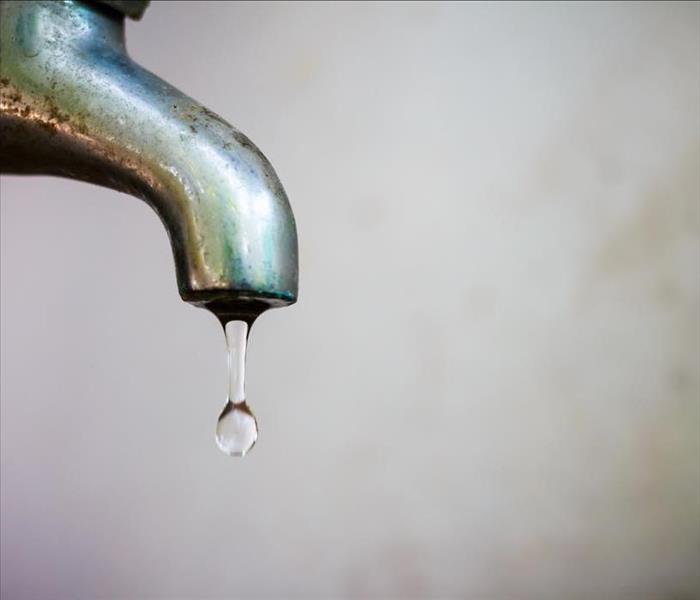 Dripping faucet in a Roy,UT commercial building
Dripping faucet in a Roy,UT commercial building
Common Leakages in Your Commercial Building
While a small water leak in your commercial building may not seem like a major problem, it’s something that should be addressed immediately. That’s because even minor leaks that are left unrepaired can cause extensive damage to your property and send your monthly water bill soaring. To protect the bottom line of your business in Roy,UT, make it a priority to monitor some of the most common leakage sources in your building.
1. Check All Faucets
At first glance, a dripping sink faucet may not look like it’s worth the effort of repairing, but over time those tiny trickles can add up to a lot of waste, as well as a larger bill from your water supply company. When you’re a commercial business owner, every penny counts. Taking a few hours to repair a faucet is a small investment that will result in a big payoff.
2. Keep an Eye on Your Toilets
A water leak around the outside seal of a toilet can quickly generate mold growth that could be costly to remove, and an internal toilet leak that causes water from your tank to improperly empty directly into the sewer will result in a large, unexpected spike in your water bill. By regularly checking both the outer seal and inner tank of your toilet, you can avoid both water damage and water waste.
3. Take Leaking Water Pipes Seriously
A pipe break, while rare, can cause major flooding that will wreak havoc on your commercial property. Since most pipes are located inside your building structure, a wet spot on your ceiling, floor, or wall is a critical warning sign that you have a serious breakage issue. A qualified water damage restoration specialist can help you identify what steps to take to begin the cleanup process.
Putting off repairs for any type of water leak inside your commercial property could mean you end up paying a big price later in the form of exorbitant water bills and a lengthy flood restoration process. Be proactive in monitoring and identifying all leakage sources, both small and large, around your building.
Assessing a Mold Problem
4/11/2019 (Permalink)
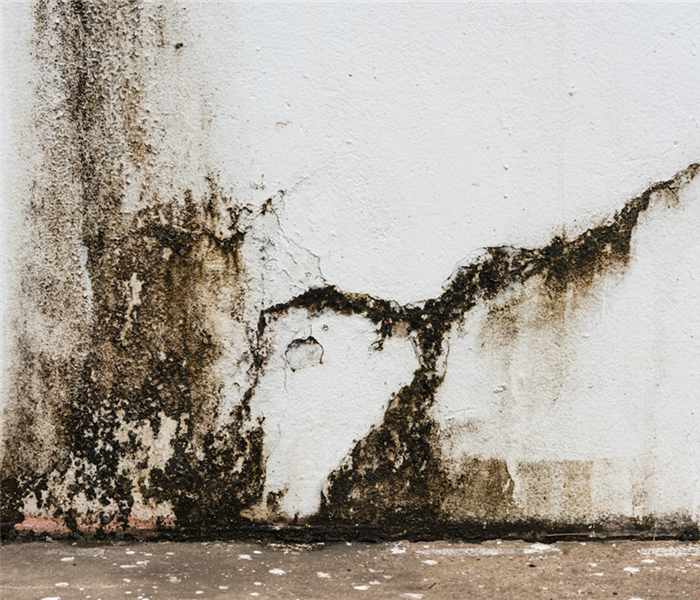 Black mold in an Eden, UT commercial building
Black mold in an Eden, UT commercial building
Three Ways of Having a Better Diagnosis of Your Mold Problem
When you smell a musty odor in your commercial building, you may suspect that you have mold somewhere. Before you shop for a DIY test kit, consider a more thorough option. To find out if it’s black mold or some other strain of fungus, you need to consult an indoor environmental professional. Here are three ways an IEP in Eden,UT, can give you a better diagnosis of your problem than a testing kit.
1. Identifying the Location
Obviously if you see fuzzy patches on the wall of your office, you know that you have a problem. There may be more areas where you need mold cleanup services, however, than you can locate with the naked eye. Mold can penetrate beneath the surface and grow into the material underneath. What you can see may be the result of a larger problem within the wall or within your air ducts. An IEP can identify all the areas of your building where mold is growing.
2. Identifying the Cause
Professional testing can not only reveal the scope of the problem but can also tell you the source. It will be important for mitigation specialists to know whether you have black mold or just a bad case of mildew. By identifying the root cause of the fungus growth, professionals can treat the problem itself rather than just the secondary damage.
3. Identifying the Plan
The information that is derived from an IEP’s test results is essential for guiding an effective mold remediation plan. Rather than try a lot of different methods until they find the one that works, specialists can hone in on the methods best suited for the particular type of mold and size of the issue. Only by clarifying the whole problem are technicians able to choose the best course of action for addressing it.
If you suspect you have black mold in your commercial building, don’t waste your money on a DIY test kit. Hiring an IEP can help you identify the problem correctly so that you can get it fixed sooner.
Taking the Hassle Out of Claims Investigations
3/19/2019 (Permalink)
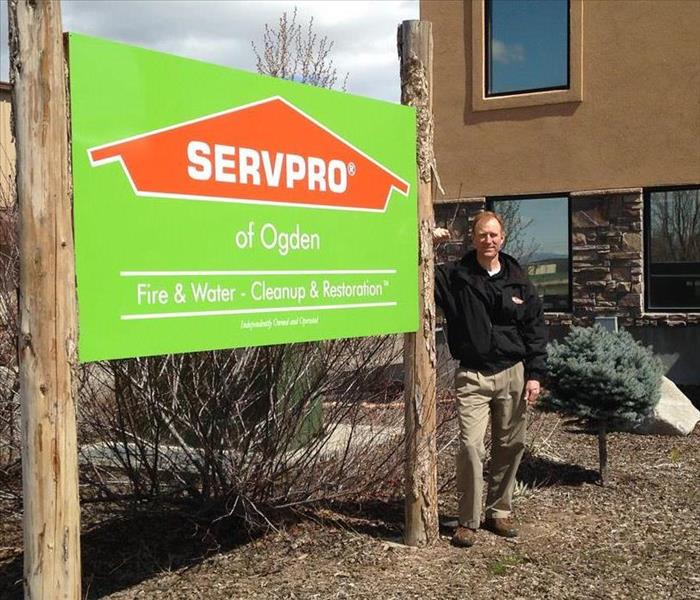 Choose SERVPRO of Ogden for quality results
Choose SERVPRO of Ogden for quality results
As an insurance adjuster, you have a duty to the insured to thoroughly investigate a claim and make an informed decision based on the evidence available to you. However, you also have a duty to your clients to keep claims costs down and to ensure that fraudulent claims don't slip through the cracks. SERVPRO professionals can help you achieve that delicate balance and give you a competitive advantage that both clients and customers can appreciate.
The SERVPRO Difference
Our professionals are uniquely qualified to help in a variety of disaster situations. From assessing flood claims to evaluating fire damage, you can count on our team to not only provide a fair estimate for repairs but also, to make said repairs in a timely and effective manner. Some other reasons clients turn to us are as follows:
- Emergency response to claims
- Pretesting claims
- Electronic claims information
- Superior training
- Vendor qualification compliance
Our professionals strive to make the job of your insurance adjuster as easy as possible, as well as to keep your customers happy. We excel in both aspects by being available to assess damages and make repairs in as timely a manner as possible.
Serving Adjusters and Their Customers
Adjusters are put in the difficult position of having to review and interpret policies before trying to put monetary values on them. SERVPRO strives to make adjusters' jobs slightly easier by making emergency response, loss assessment, damage mitigation and electronic insurance claim files available in as little as 24 hours. Because these franchise professionals handle the work of multiple vendors, it means less time waiting for vendors to respond, communicate and get on the same page, which means less time settling a claim.
Your insurance adjuster has several Eden,UT, emergency response cleanup crews from which to choose, so why choose SERVPRO? The company has a long-standing reputation for obtaining immediate and quality results. When your customers see who your vendor of choice is, they'll know that you're serious about helping them recover their losses, an advantage your competitors don't have.
5 Tips for Salvaging Belongings From Mold Damage
3/5/2019 (Permalink)
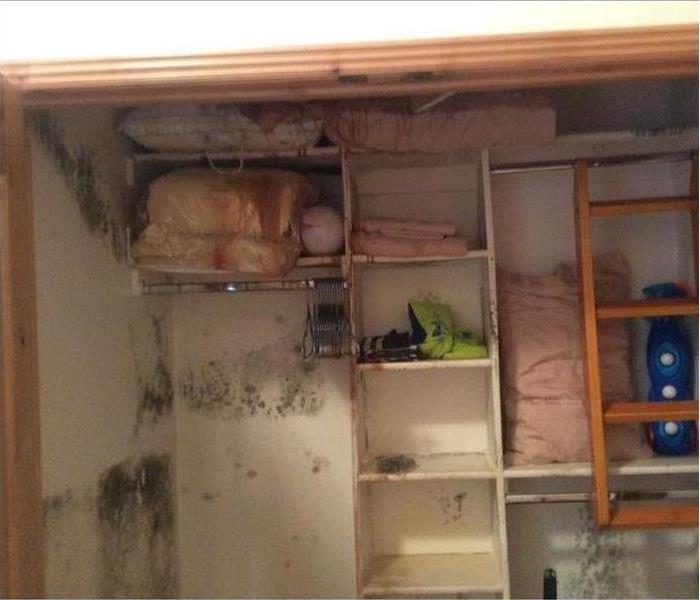 Mold in a Liberty, UT closet
Mold in a Liberty, UT closet
5 Tips for Salvaging Belongings From Mold Damage
When it comes to mold cleaning in Liberty, UT, you may be wondering if a professional mold remediation service can do anything to salvage your belongings as well as clean your home. Fortunately, the answer in many cases is yes. Here are five tips if you're trying to save your personal items from mold damage.
1. Talk to a Professional
When you have water damage in your home, mold remediation steps may be necessary to salvage your belongings. Contacting a professional can be the first step to getting everything back in order. They'll know the right procedures and have the equipment necessary to get the cleanup process started.
2. Sort Your Belongings First
One important step towards salvaging belongings from mold is to sort the belongings by type. Different methods of cleaning are suited to different types of materials, meaning any affected items should be organized by material so that they can be cleaned efficiently.
3. Follow Cleaning Recommendations
When performing a mold cleaning it's best always follow any cleaning recommendations. This means you may need to double check the manufacturer's instructions on any cloth or upholstery items to prevent additional damage.
4. Keep Cleaned Items in a Mold-Free Zone
After you have cleaned away any mold damage, it's important to keep the cleaned items away from any area still being treated for mold. This will help prevent any additional spreading of spores.
5. Take Mold Prevention Steps
After your belongings have been cleaned and your home restored, you may want to take some mold prevention steps. These could include setting a regular schedule to check for water damage, installing a drainage system, or adjusting your landscaping to slope away from your home.
When it comes to mold cleaning you may be relieved to know that in many cases personal items can be saved as well. It's best to talk to a professional about the best cleaning methods beforehand, and the sort your items by type to ensure the most efficient process is used. Always follow cleaning recommendations for your items, and keep clean items in a mold-free zone until remediation efforts at your home are completed.
3 Alternatives to Sandbags
2/11/2019 (Permalink)
3 Alternatives to Sandbags
Your commercial building in Wolfcreek,UT, is likely built to withstand common weather conditions in your area. If a big storm hits, though, are you prepared? Many businesses rely on an old, faithful solution - the sandbag. You can protect your building faster and perhaps more effectively, however, with one of these three newer products on the market.
1. Water Dams
Did you know you can actually use water to fight storm runoff and prevent flood damage? Instead of lugging out heavy sandbags when you need extra protection for your building, you simply your water dam where you want it and fill it up with water. Water dams are easier to use than sandbags, and they can be stored easily, too. Just empty them, dry them and stack them in a closet. You can create small walls that are 20 inches high and about six feet wide, or you can surround your building with a temporary water gate that is several feet tall.
2. Miniature Levees
A levee is essentially a wall that blocks water. Traditionally, they are used by municipalities to protect entire cities. You can construct your own levee on the sides of your building that are most prone to flooding. You can build a wall of synthetic materials that blocks water, or you can go the more natural route and construct what is basically a large sandbag.
3. Synthetic Dams
Another innovation flood mitigation experts suggest for damage prevention is a synthetic dam. These flood dams can be placed where flooding usually occurs. As long as there is no water in the area, they remain compact. When water comes into contact with them, however, they absorb it and swell, creating a barrier between the rising waters and your building.
The sandbag has proven a reliable deterrent against flooding, but there are easier products on the market to use and store. You may find that one of these newer options has benefits that sandbags lack.
Are Mold-Testing Kits Accurate?
1/21/2019 (Permalink)
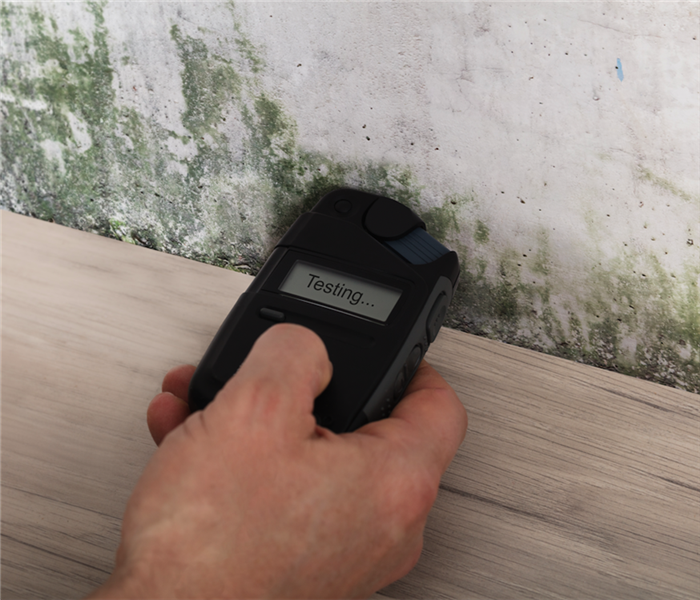 Mold testing in a South Ogden, UT home
Mold testing in a South Ogden, UT home
If you just purchased a home, or if you suspect mold may be growing in your current place, you want to know what you’re up against. No one wants to contend with this unwanted invader. If you’re not ready to call in an expert to do mold test, you may be thinking of trying a home mold test kit. Before you do anything, it’s important to understand the advantages and disadvantages of using a kit on your own.
What They Do
Perhaps you don’t want to spend the money bringing in a professional to your South Ogden,UT,
home to do mold testing. You can purchase kits online or from your local home improvement store. These kits work in the following ways:
- You can place them in various zones of your home.
- Can test for the presence of mold in your home.
- Often require that you send the mold kit back to a lab to identify the type of mold growing in your house.
What They’ll Show
Here’s the interesting thing about DIY mold evaluation: The kits will almost certainly always detect mold in your house. This is because there is always at least a trace of mold. Therefore, these home kits will turn up positive results. Before you get scared, realize that this doesn’t necessarily mean you should be scared, as the kits could be showing the minute levels present.
A More Accurate Way
If you truly want to know whether mold is threatening in your house, you need to contact a professional. An environmental hygienist has the skills, expertise and experience to identify accurately what type of mold is growing and the extent to which it is present. This is the best method to understand what you face and what plans you should make for cleanup and restoration.
Don’t waste time on home mold testing kits. Call a trusted professional and feel good knowing you have accurate findings.
How To Manage Water-Damaged Office Equipment
12/31/2018 (Permalink)
Sustaining water damage and restoring a flooded company can be daunting tasks for any South Ogden,UT, business. In addition to soaking walls and flooring, a leak or broken pipe can also saturate essential equipment. While some things, like books and paper, may not be salvageable, you may be able to save many items. Recognizing specific care requirements for a variety of objects may help you complete an efficient cleanup and restoration, allowing you to return to normal business operations as quickly as possible.
Electronic Equipment
Water and electricity can be a dangerous mix. To minimize the risk of electric shock and help avert a short circuit, you should avoid plugging in any electronic device located inside the flood zone:
• Computers
• Printers
• Appliances
Because of their intricate components, an electronics specialist should analyze each device to determine its salvageability and complete necessary repairs.
Office Furniture
Like all saturated items inside your flooded company, office furniture should be promptly removed and dried. Leather and upholstered couches and chairs may require professional cleaning. Because of the risk of mold contamination, you may need to discard extremely saturated items.
Wooden furnishings may also require special care. To prevent warping and cracks, you should gradually dry these pieces. Employing heaters and leaving wooden desks, bookshelves and chairs in direct sunlight for an extended period may cause additional damage.
Carpets and Cloth Items
Mildew can quickly develop on damp fabric. To minimize this risk, you should quickly address wet cloth, including curtains and small, removable carpets. Dry cleaning may be the most effective way to cleanse and refresh these items.
A Restored Office
A broken pipe can cause significant destruction inside any business. The key to surviving a flooded company is a swift response. Because the task can be extremely challenging, obtaining professional assistance may be the best way to efficiently dry, salvage and restore your water-damaged equipment and office furnishings.
3 Ways To Prepare For Flood Damage
10/5/2018 (Permalink)
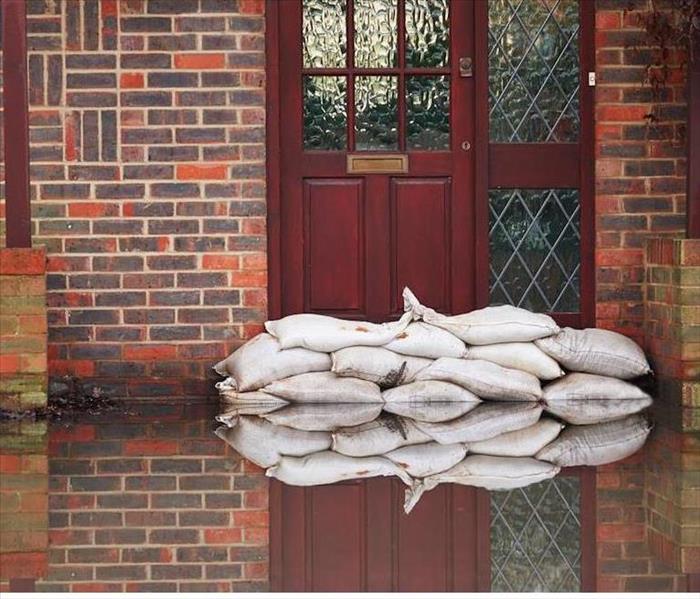 Fill sandbags for flood prevention in your Roy,UT home
Fill sandbags for flood prevention in your Roy,UT home
Preparing for flood damage can save time and reduce stress after a flood occurs in Roy,UT. Here are three ways to limit the severity of flooding within a commercial property, prevent storm damage, and resume work in a timely manner.
1. Fill Sandbags or Flood-Prevention Alternatives
Sandbags or other damming materials play a critical part in flood prevention. To make sandbags, you will need burlap bags, sand, and shovels to fill the bags. Build a dam layer by layer with up to three layers of sandbags. You may want to cover the stack of sandbags with plastic or polyethylene sheeting to make barriers more watertight.
Sandbag alternatives such as water-filled tubes and reusable flood dams can be faster to fill and put into place than sandbags. You may also want to consider flood fencing or absorbent materials that expand to keep out flood waters.
2. Elevate Appliances, Furniture, and Utilities
It is a good idea to either lift or move contents to a higher floor prior to flooding. This can significantly reduce the extent of damage and the amount of mitigation and restoration required. If you can lift utilities such as power supplies, this may also lower the risk of corrosion that may lead to electrical fires. It is a good idea to shut off electricity and gas to a commercial property in the event of a severe flood.
3. Back Up Important Information
Make sure to back up important paper documents such as critical records, property deeds, insurance papers, inventory lists, and other materials. You should also make sure that you have contact information for utility providers, your business insurance provider, and a local flood mitigation service.
Follow these steps to prepare a commercial property for flooding. If the building still sustains flood damage, contact a restoration service that specializes in water and storm damage in Roy,UT.
Reasons Not To Overlook Your Crawlspace After a Flood
9/18/2018 (Permalink)
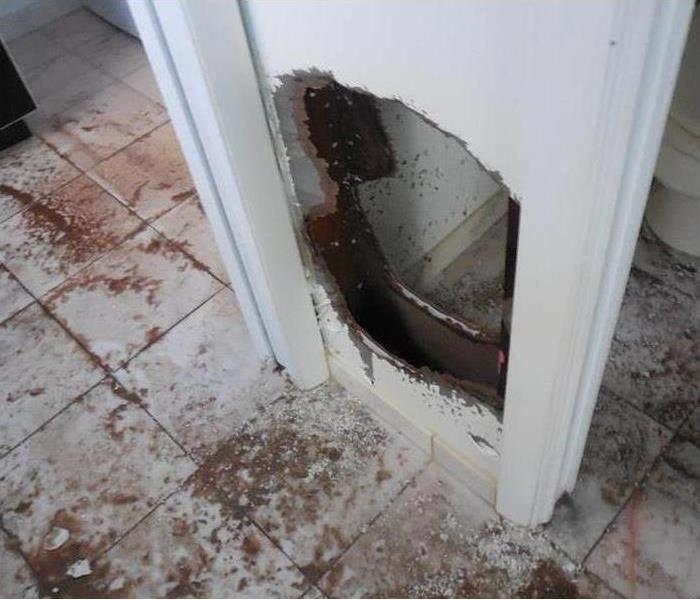 Severe flooding damage caused by storm in North Ogden, UT
Severe flooding damage caused by storm in North Ogden, UT
It’s hard to miss the outward damage of a home flood. However, one place where damage often goes unnoticed is in the areas beneath your home. Designed to allow access to wiring and plumbing, the crawlspaces beneath your home are often the most susceptible to flood damage. Mold, mildew or even insect infestation can result from lingering water damage. When choosing a restoration company in North Ogden, UT, look for one that understands the importance of this often-overlooked area.
How Does a Crawlspace Get Damaged?
When house flooding occurs due to storm damage and rising waters, it’s understandable that low areas like crawlspaces would be impacted. However, there are several other ways besides a home flood these areas can fall prey to water damage. They include:
- Kitchen waste line leaks
- Sewer drain line leakage
- Improperly installed gutter downspouts
- Rising water table
Even water seepage from overwatered plants can get into a crawlspace and cause a host of problems.
What Are the Long-term Effects?
Like any area exposed to water, a crawlspace is susceptible to mold and mildew. If HVAC ducts run through a crawlspace dampened by house flooding, the result can be moldy air blowing through your home. Humidity from the moist areas left by a home flood can warp sub-floors, creating a cascade of damage and expense.
What’s the Solution?
Venturing into a moist crawlspace is often a bad idea. These areas require special cleaning apparatus and even masks for safe remediation. Instead, look to an experienced flood restoration company in North Ogden, UT, to clean up the damage and prevent further problems using tools like sump pumps, dehumidifiers and even special insulation.
Your crawlspaces may not be very visible, but they are important to your home’s structural integrity. Don’t let flood water or storm damage destroy them. Include your crawlspaces in your flood cleanup and rest assured your home is secure.
Got Mold? Hire an Environmental Hygienist
9/11/2018 (Permalink)
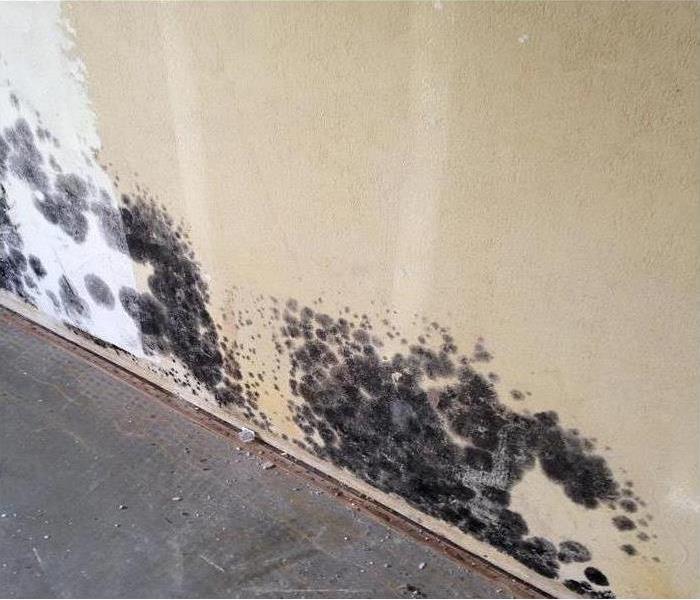 Mold damage in an Ogden, UT home
Mold damage in an Ogden, UT home
Whether you have just moved to a new home or have lived where you’re at for many years, there may come a time when you need to seek mold cleaning. Asking friends and family members what to do could give you some direction, but how will you know what the best solution is? Environmental hygienists are certified to check for mold and will offer you the best course of action to take for your specific situation.
What Makes a Hygienist Stand Out?
You may wonder why an environmental hygienist is your best option when dealing with mold damage. There are a few qualities and qualifications that really make these professionals stand out.
- Hygienists are required to take a test showing their knowledge on the subject before heading out into the field.
- The certification is recognized around the world.
- They are given opportunities to practice learning and gain experience.
- They adhere to a specific code of ethics.
As you can see, when hiring a certified hygienist, you can rest assured the person in your home will know the difference between a normal level of mold and a heightened level. You can relax knowing the individual will suggest the proper avenue for mold cleaning. You can be sure he or she will spot water sources, moisture, mold colonies and odors that present a problem. Finally, you can trust that he or she will show respect and courtesy while in your Ogden, UT, home.
When Should You Call a Professional?
The best time to call a professional is anytime you’re not certain what to do. If you find yourself questioning a situation, that’s a great time to call. Mold cleaning can turn into a big job if not caught early enough, but with a professional environmental hygienist and mold remediation experts on your side, it won’t get out of hand. Whether you have noticed moisture and can’t find the source or can’t put your finger on a musty odor, it’s better to be safe and have your home professionally checked.
Protecting Yourself From Floodwater Hazards
7/28/2018 (Permalink)
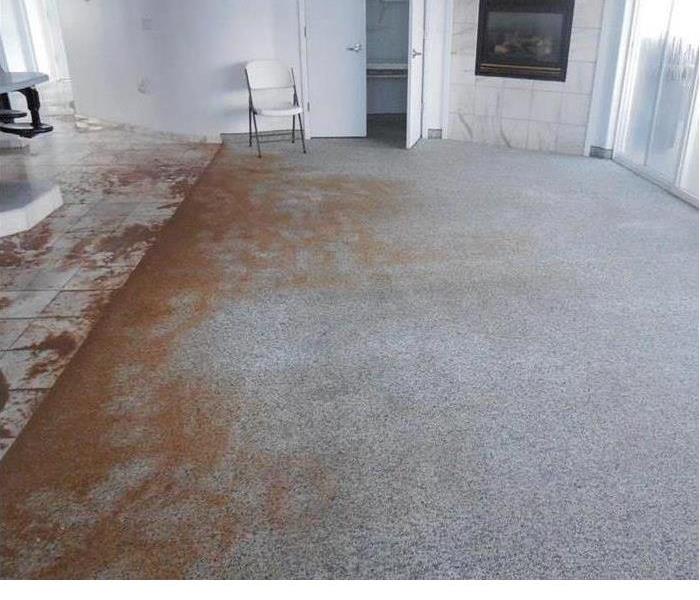
If you’ve never experienced flooding in your Ogden, UT, home, it’s easy to forget how dirty floodwater from a storm can be. In fact, there are three different categories of water damage. Category 1 (“clean water” from water supply lines, pipe breaks, etc.) and Category 2 (“gray water” from water beds, leaking household appliances, etc.) do not pose as large a threat to health as does Category 3 (“black water”). Black water includes floodwater, which can be especially hazardous due to animal feces, chemicals from lawns, and microorganisms that could cause disease.
Cleaning up after storms and flood damage is unlike cleaning up after lower categories of damage. The main difference lies in how to protect yourself from possible health hazards. Here are some tips for tackling Category 3 flood water.
1. Protect your body. To keep contaminants from entering your body when cleaning up after flooding, use protective equipment such as gloves, goggles, and respirators. Even the type of gloves you use matters. Household gloves suffice for mild cleaners, rubber gloves work better when you’re handling disinfectants like bleach, and heavy-duty work gloves are necessary for touching debris.
2. Remove water and dry things out. You can purchase utility pumps, wet/dry vacuums, and other tools to help remove water. Once most of the water is gone, use dehumidifiers and portable air-conditioning units to reduce any remaining dampness.
3. Decide what to throw out and what to clean. It is best to throw out any items that have been affected by groundwater runoff and sewage spills, as well as any absorbent materials (clothes, pillows, etc.) that have remained wet for a long time. If you have clothes and other items that don’t fit into these categories, you can salvage them through deep, repeated cleanings.
Even if you follow all these steps, sometimes it’s necessary to call restoration professionals into your Ogden, UT, home to help clean up after flooding. Either way, because storm damage includes hazardous Category 3 water, make sure to take precautions you wouldn’t have to take with water damage from Categories 1 and 2.
For more information, please visit us at http://www.SERVPROogdenut.com/storm-flooding-restoration.
Water Conservation Tips to Help the Environment and Your Wallet
6/21/2018 (Permalink)
As a business owner in Ogden, UT, water issues are probably not something you think about often. However, making some simple, inexpensive adjustments to your property will help both national water conservation efforts and save you money in the long run. Consider the following three areas when planning a water upgrade to your building.
1. Irrigation
Providing water to beautify outdoor foliage at your property significantly increases the curb appeal. This is an area, however that is commonly overlooked when thinking about water consumption. First, the irrigation should be on a separate submeter, so sewage charges are not added to water that does not return to the treatment plant. Second, when seasons change check the irrigation schedule. Start out watering less and increase the time incrementally if you notice more watering is needed. Finally, confirm that the system is only watering the needed areas and the pipes are not leaking.
2. Plants
Another frequently overlooked outside area is the plants. The type and amount of plants, flowers and trees impact how much water is needed. Colorful, annual plants require the most water and yearly upkeep. Planting native, perennial flowers and plants saves money on both water and landscaping efforts.
3. Toilets and Faucets
Inside of the property, water issues most often arise from toilets and faucets. Flushing a toilet once uses up to five gallons of water, especially if installed before 1992. Newer flush valves use around one gallon of water per flush, and allow for the retention of the current toilet creating an inexpensive but extremely beneficial water upgrade. To decrease the amount of water wasted from faucets, replace the low-cost aerator or invest in a touch faucet to see bigger savings.
When you own a business in Ogden, UT, and your property needs a water upgrade, your money literally goes down the drain until you act. Dealing with water issues in a preventative manner also protects the environment and prevents water damage to your building later on. If water damage occurs, however, it is crucial to contact a water restoration specialist immediately to assess the situation, prevent further damage and promptly restore your property to preloss condition.
For more information, please visit us at http://www.SERVPROogdenut.com/.
What To Consider When Purchasing Commercial Storm Insurance
6/16/2018 (Permalink)
Loss of property and property damage due to a severe storm can be devastating for you and your business. The best way to mitigate the long-term negative effects of a severe storm on your company is to be proactive and ensure that your insurance coverage adequately addresses your needs in Ogden, UT. Storm insurance varies by plan and location, but typical plans cover one or a combination of the following:
1. Fire Damage:
Most plans cover loss of or damage to the physical structure of your business (i.e., your office or building) as well as property contained within the damaged area. Plans may also cover any damage caused by smoke, to include lingering smoke odor.
2. Flooding:
Flooding caused by heavy rain, hurricanes, or other tropical storms not only wreaks havoc on your floors and piping, but it can also damage carpets, furniture, and other appliances used in your business each day. Typical insurance plans cover the replacement of physical structures damaged by water as well as property destroyed within the flooded area. Plans may also cover the removal of residual mold or mildew that resulted from flooding.
3. Wind Damage:
Windstorms such as tornadoes or hurricanes can cause physical damage to your building and belongings. Typical insurance plans cover damage to your business’s physical structure as well as any damage caused within your office or building due to exposure to the elements. Some storm insurance plans may also cover removal of trees or debris as a result of the windstorm.
4. Snowstorms:
Icy conditions and snowstorms can lead to roof, gutter, and even wall damage. Plans may cover damage to your business’s physical property to include burst or frozen pipes. Some plans may also cover water damage as a result of melted snow or ice.
Since storm insurance coverage varies, it is important to understand the storm risks in Ogden, UT, and to purchase an insurance plan that adequately covers the replacement and clean-up costs of your property after a storm or natural disaster.
For more information, please visit us at http://www.SERVPROogdenut.com/.
3 Ways To Keep Your Bathroom Mold Free
5/15/2018 (Permalink)
If you often find yourself battling mold and mildew in the bathroom of your Ogden, UT, home, it may give you some relief to know this is a common problem for many homeowners. The presence of plumbing appliances, pipes, past water damage and your family’s shower can all contribute to high humidity and dampness that creates an ideal environment for fungi to form. However, there are a few ways you can prevent mold and mildew from taking hold in the bathroom in between cleanings.
1. Install Air Vents
Proper ventilation can be key for preventing mold growth, especially if you have a small bathroom. The more enclosed the space, the higher the humidity levels after someone uses the shower or runs hot water in the sink. Installing air vents near the shower can allow some of the warm air to escape and lower the risk of mold formation in your shower’s grout or around the base of the toilet.
2. Treat the Shower After Use
An excess of moisture can cause mold and mildew to grow in the shower, but there is one way you can prevent it. Keep a small squeegee handy in or near the shower and encourage your family members to wipe down the stall with it once they are finished washing. This can prevent or slow the growth of fungus that can seriously affect your shower’s grout.
3. Have Your Bathroom Inspected for Water Damage
If you are having trouble controlling mold in your bathroom, you may want to call in a mold remediation and restoration service to inspect the room. Experienced servicemen can perform a thorough examination of your plumbing, sink and tub to ensure there are no slow leaks that may be causing the issue. They may also be able to give you tips on mold prevention you can use in the future.
Your Ogden, UT, home’s bathroom can be prone to mold and mildew because of high humidity and unseen water damage. Knowing how to prevent these issues may make weekly cleanup simpler and keep your restroom sparkling clean for everyone.
For more information, please visit us at http://www.SERVPROogdenut.com/.
Did Harsh Winter Weather Damage Your Sprinkler System?
4/15/2018 (Permalink)
Spring is near, and with the arrival of warm weather comes lush, perfectly manicured green lawns in Ogden, UT. They are a pleasure to look at, but grass can also require a great deal of maintenance. One way lawns stay green is with the use of a sprinkler irrigation system. However, prior to turning on the water in spring and watching it spray across the grass, consider irrigation maintenance to check what damage the harsh winter weather did to the sprinkler pipes and controls.
Visual Clues
Before turning the sprinklers on, check the control panel for broken wires or damaged connections. Then turn each zone on individually to visually inspect the coverage area. Watch as each sprinkler scatters water to identify possible problems. Look for potential misaligned heads, water pressure glitches, or broken pipes. If there is a water problem, repairing the plumbing at the first sign of trouble can prevent foundation damage and sprinkler flooding. Here are three things to check for during irrigation maintenance:
• Water pressure issues can be a serious concern. Too much pressure can damage sprinkler heads, while insufficient water pressure may be from a broken pipe.
• Sprinkler heads can become misaligned or clogged. After cleaning clogged heads, reposition each to guarantee adequate spray.
• Gushing water or sunken areas of grass can mean a broken pipe. Consider calling in a plumbing expert to handle the situation quickly.
Broken Pipe
Since most sprinkler systems are usually set to water automatically, it is not uncommon to have flooding in basement or crawl space areas when sprinklers break. Should a flood occur, call in a flood restoration team that can quickly remove the water and return the area to working order.
Spring irrigation maintenance can help prevent pooling water, a flooded basement, and foundation damage. With routine upkeep, the sprinklers can stay in quality working condition all summer long. By conducting a yearly water management system examination, the resulting beautiful landscape can be the talk of the town.
For more information, please visit us athttp://www.SERVPROogdenut.com/.
Does Your Home Have Mold?
3/28/2018 (Permalink)
If your home has recently experienced water damage, you should keep an eye out for mold. There are several ways to find out whether mold is growing. You can take simple investigative steps yourself, particularly if mold growth is visible. If you smell a mildew odor but do not see any evidence of mold, you should contact an indoor environmental specialist to schedule a mold test as soon as possible.
Follow these three steps to find out whether your home has mold:
1. Visually inspect areas where water damage has occurred for signs of mold. Mold is most likely to develop in areas with high humidity or moisture levels. Examine places where water damage has occurred for any evidence of mold growth and avoid disturbing any colonies you find, as this may expose you to mold or cause spores to spread.
2. If you smell a powerful moldy odor but see no visible signs of mold, contact an indoor environmental specialist. Do not attempt to search for hidden mold on your own. This is especially the case if your search would require you to peel back wallpaper or make a hole in the wall. Leave invasive search methods to certified mold remediation experts to protect yourself and prevent the problem from getting worse.
3. Have a mold test performed by certified professionals. Professional testing is the best way to find out what (if any) type of mold is present and the right combination of containment, removal, cleaning, and disinfection necessary to eliminate the issue. If a hygienist or environmental specialist finds mold, they can perform visual analysis or culturing to determine the type, genus, or subspecies of the mold.
If you discover mold in your home, detailed information can help you determine the best options for remediation. Contact an indoor environmental specialist in Ogden, UT, to find out about mold cleanup options.
For more information, visit us at http://www.SERVPROogdenut.com.




 24/7 Emergency Service
24/7 Emergency Service




























































































































